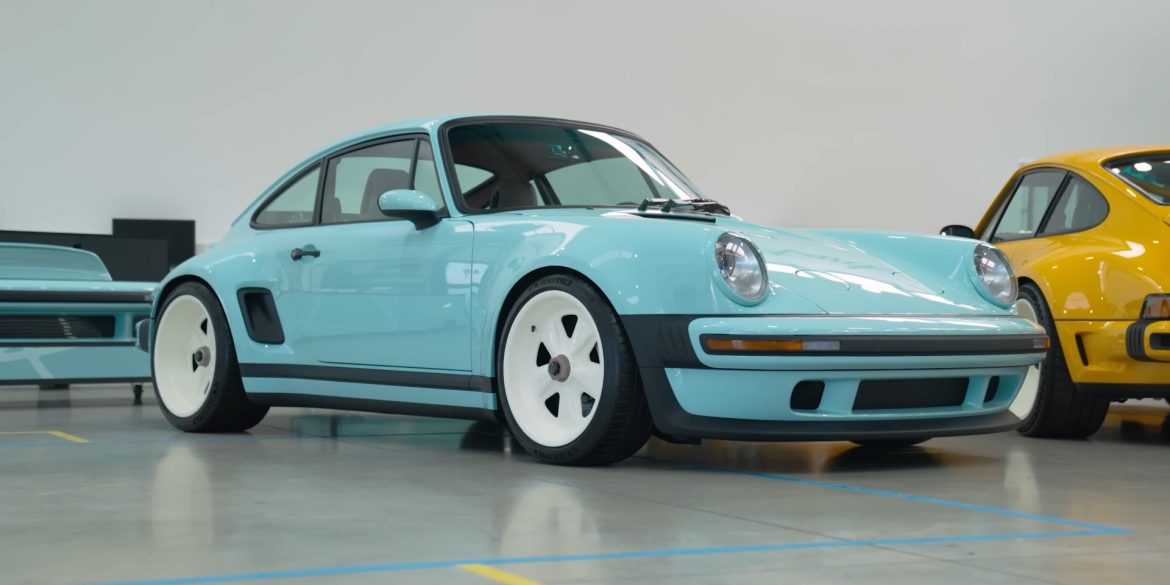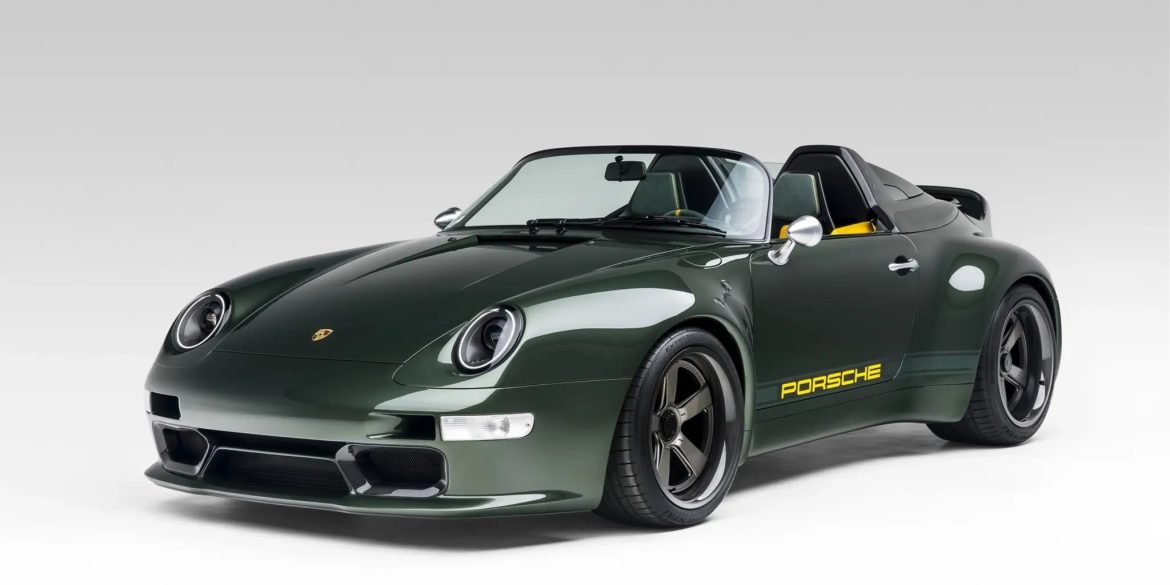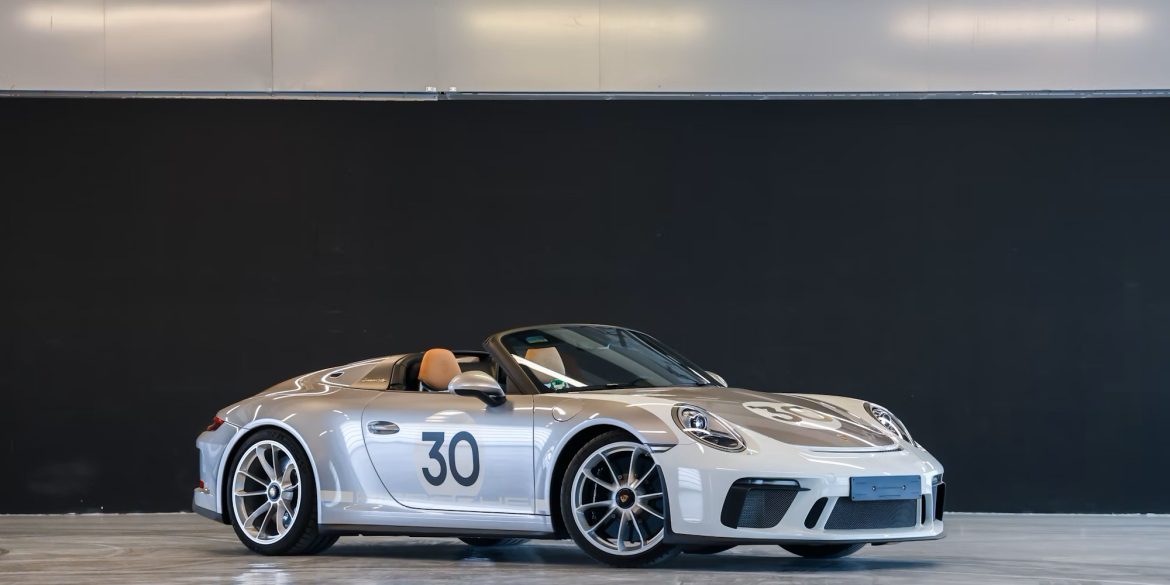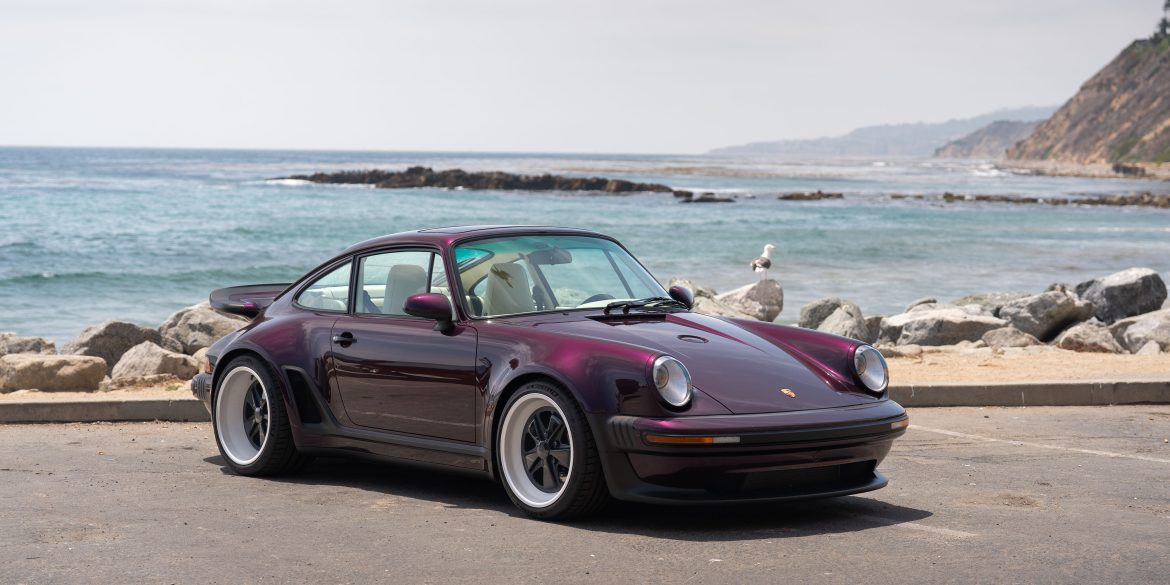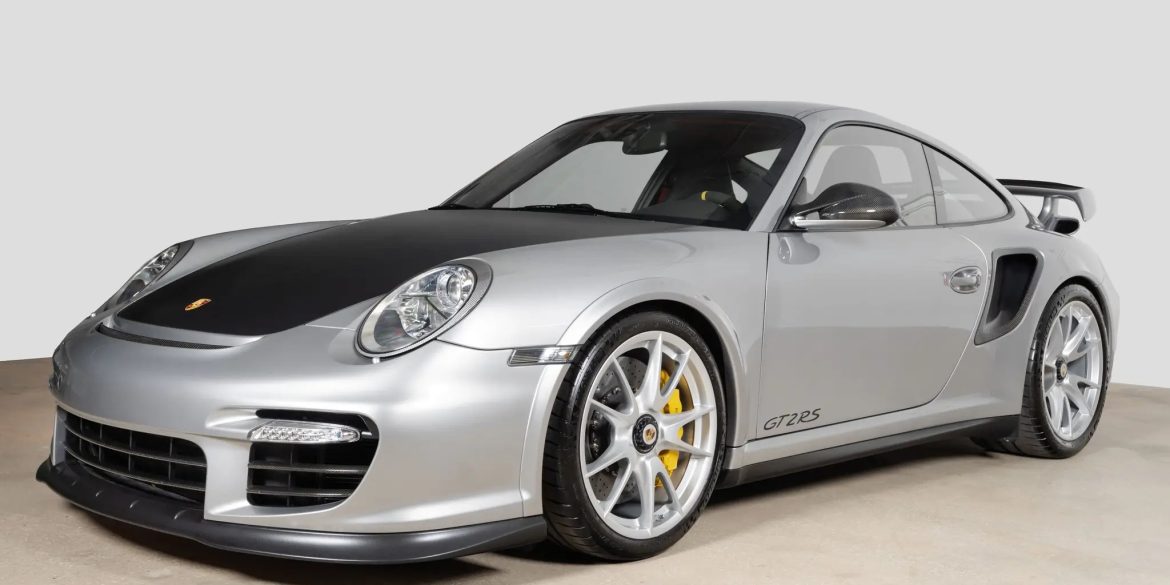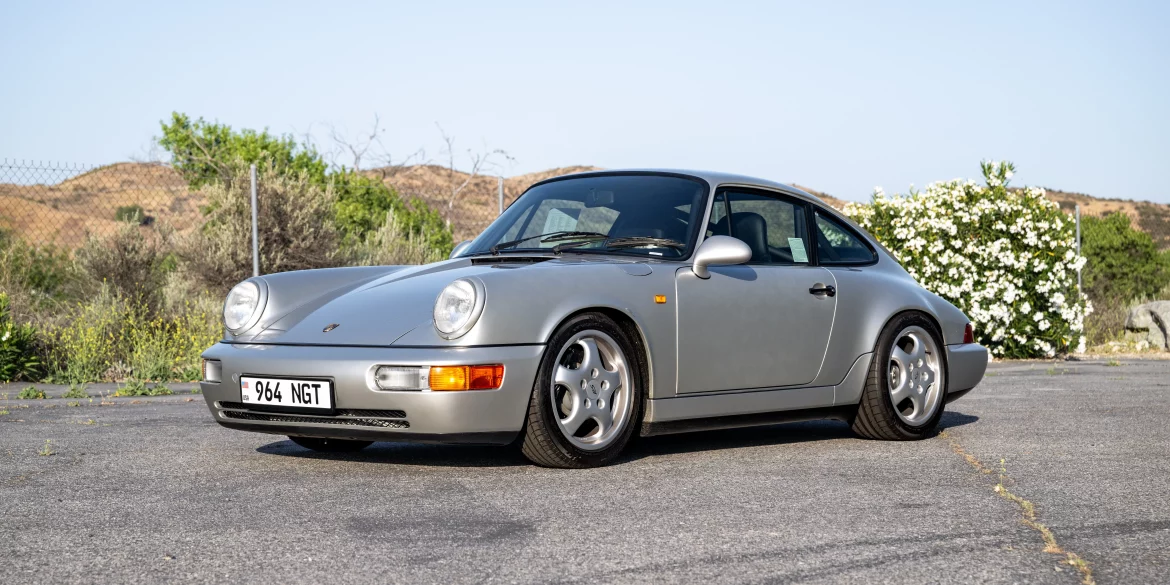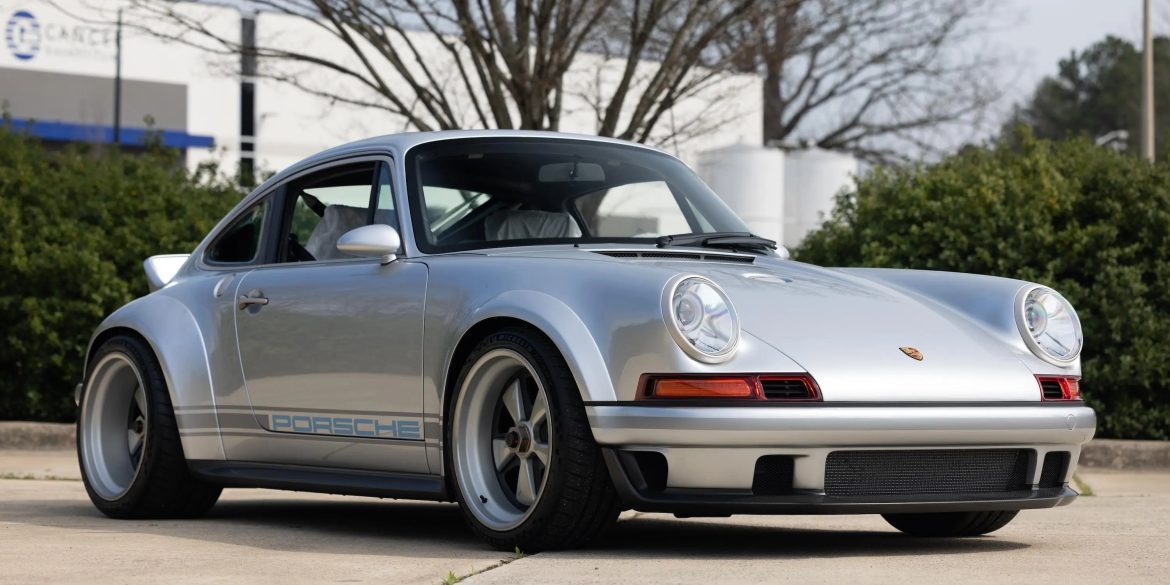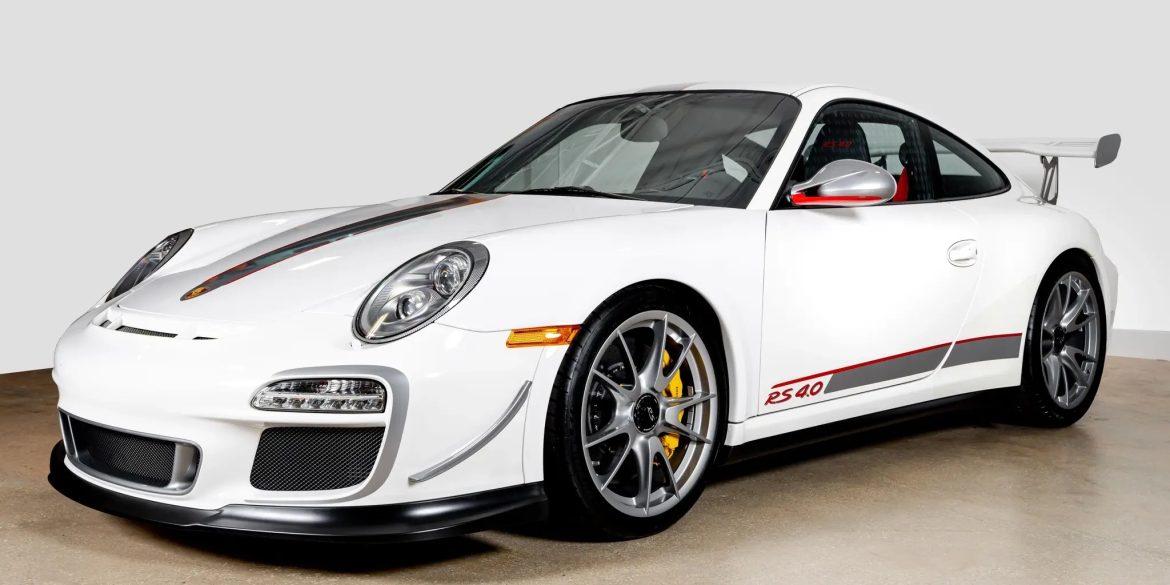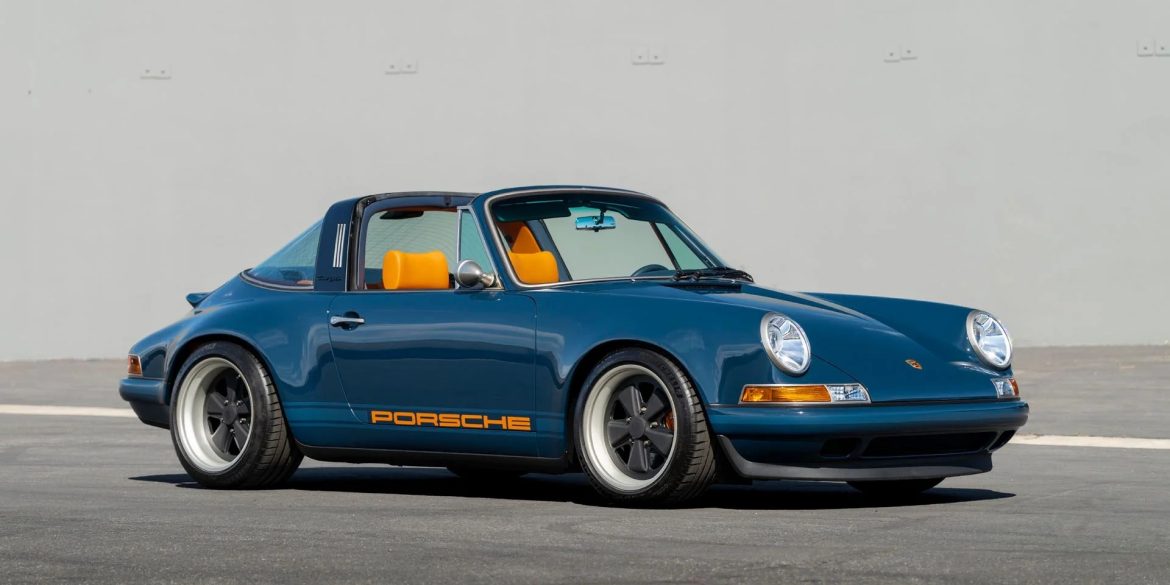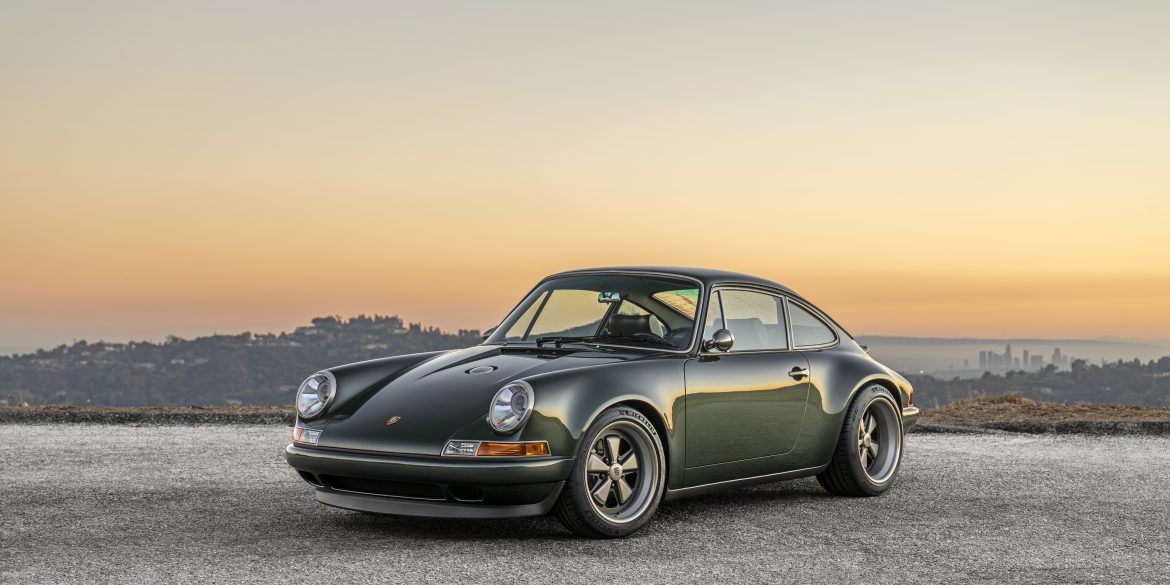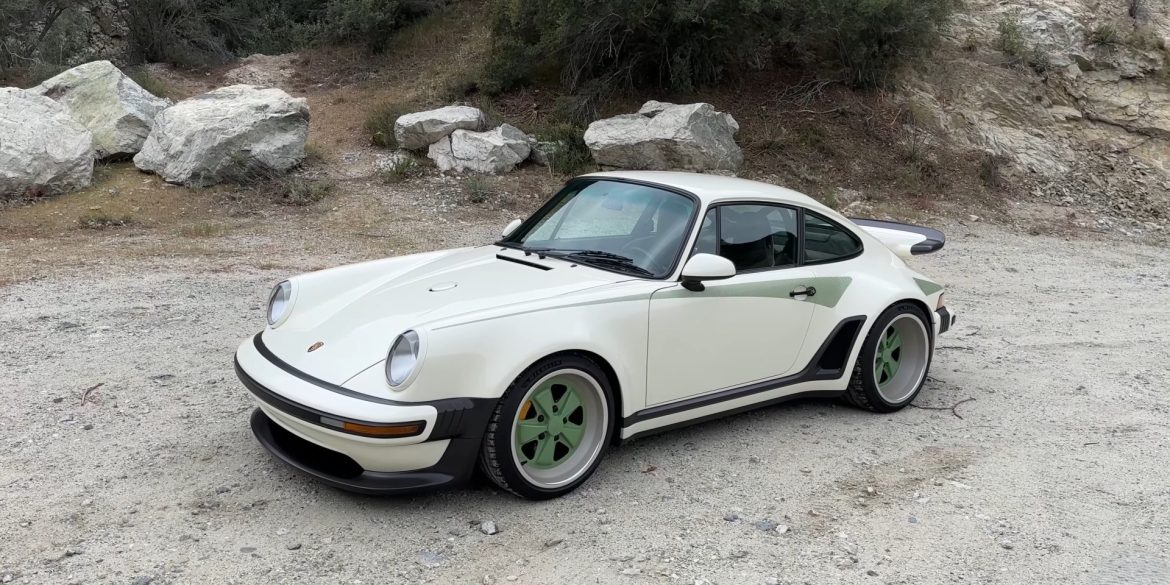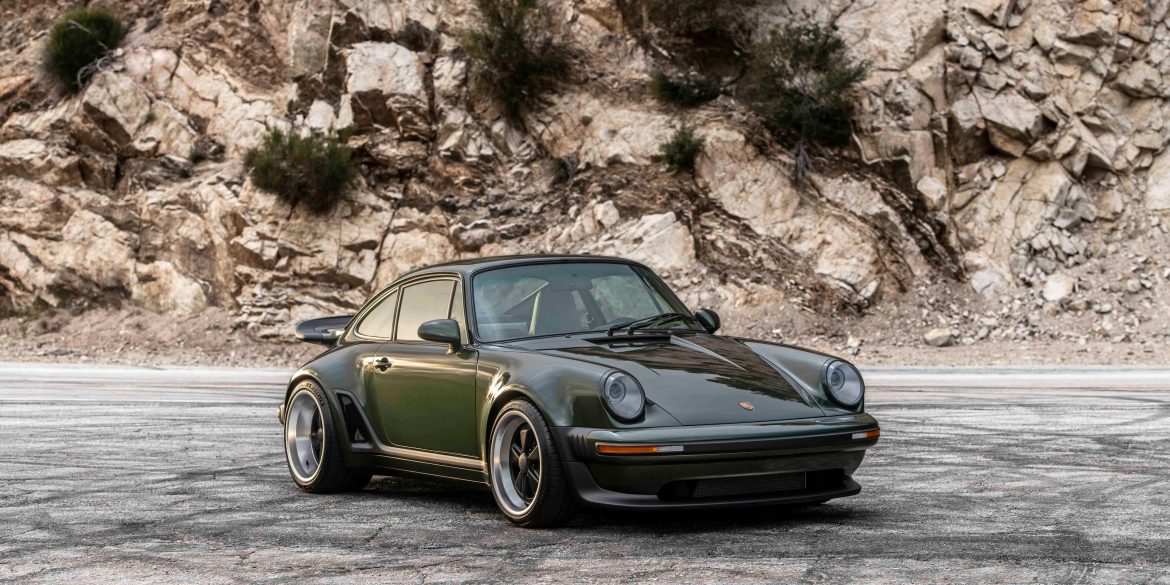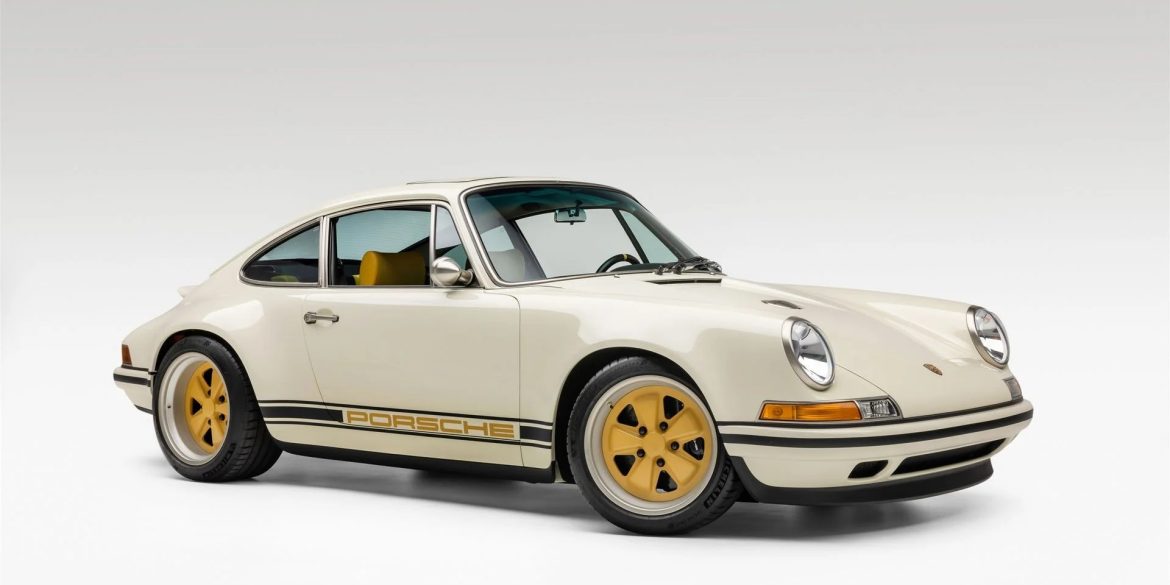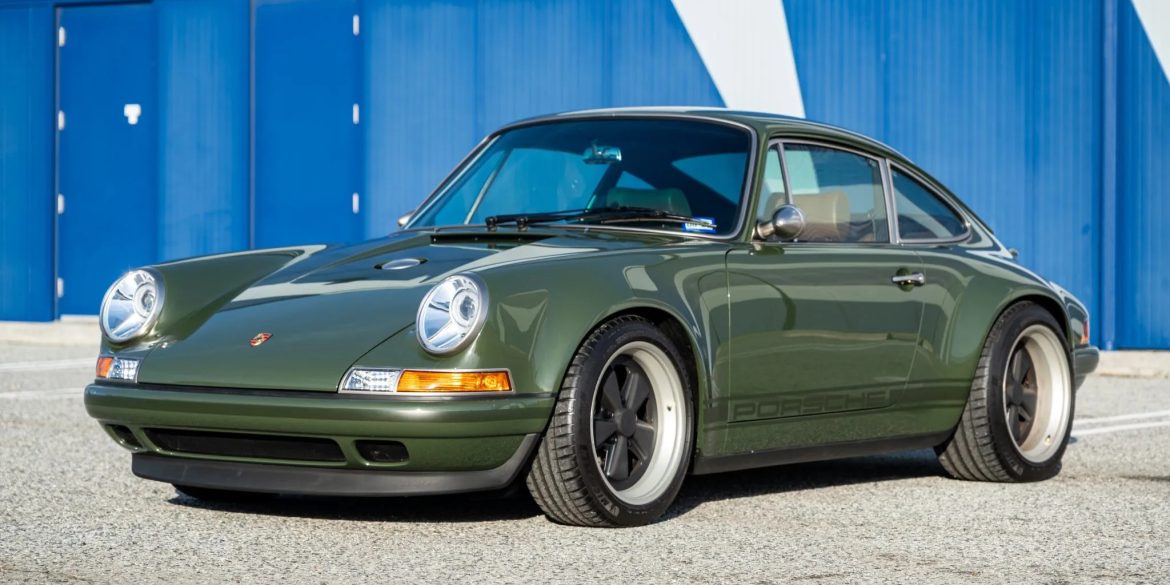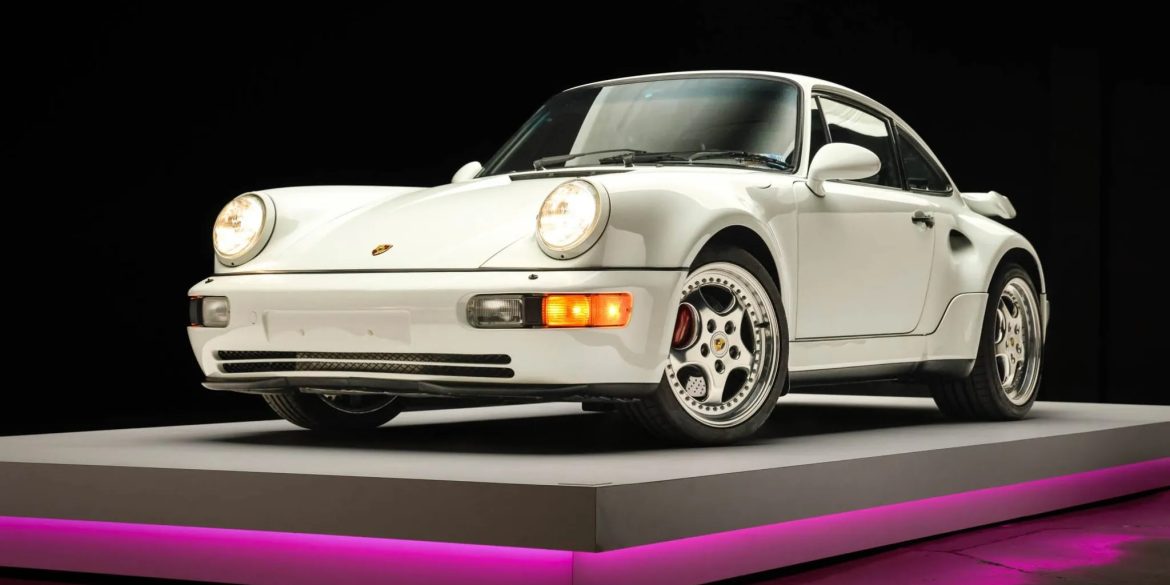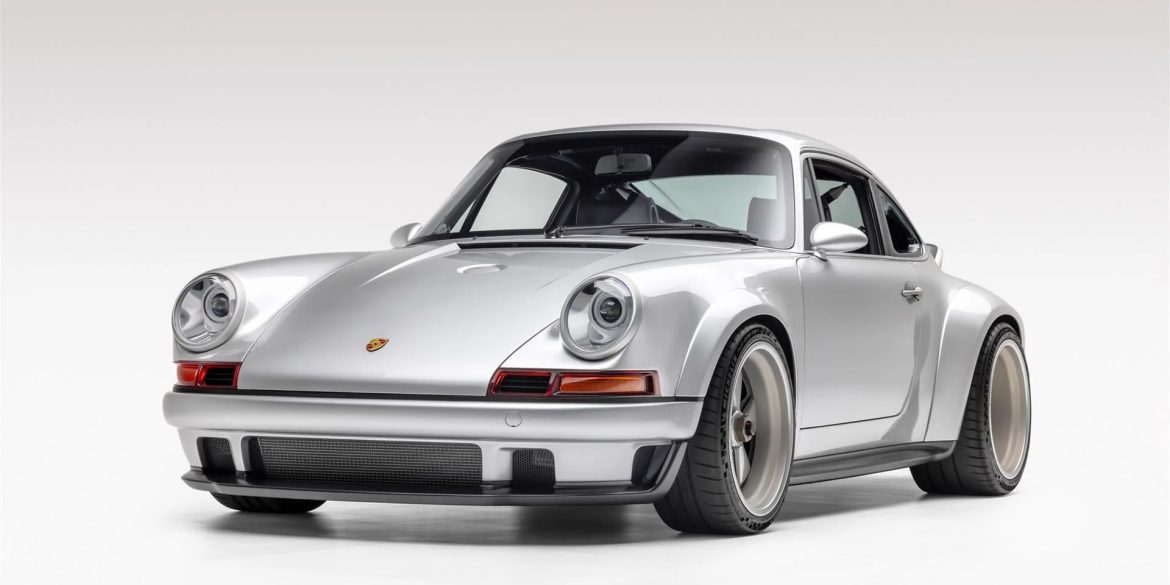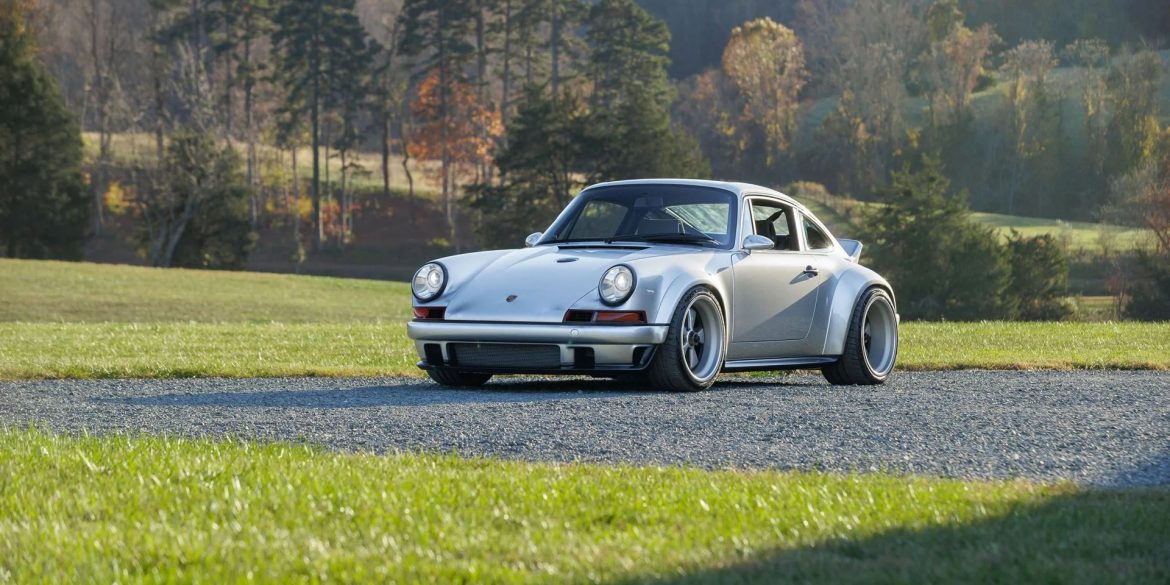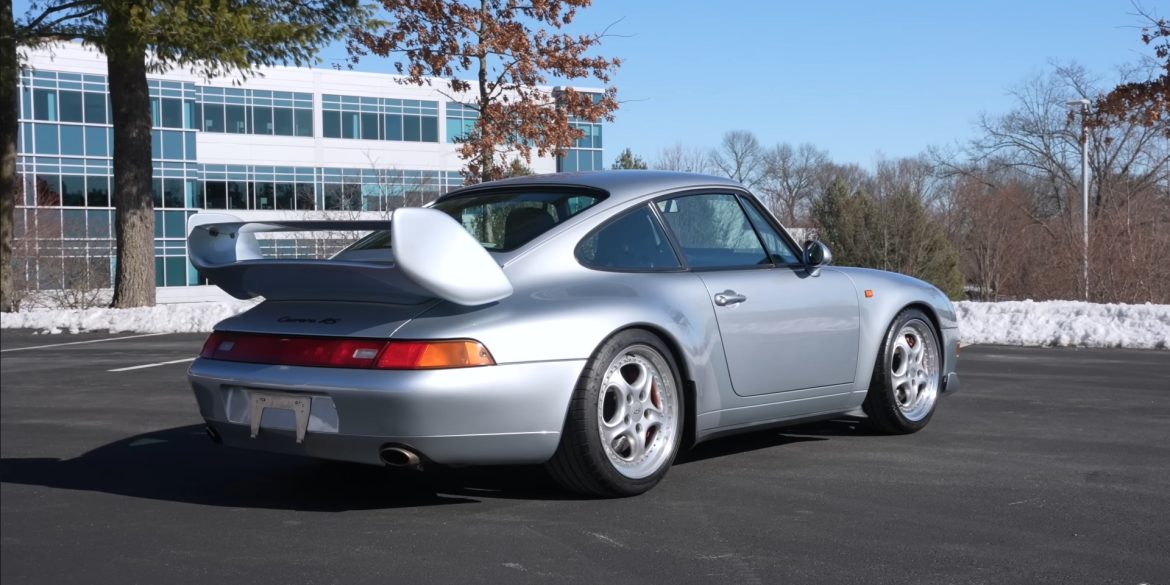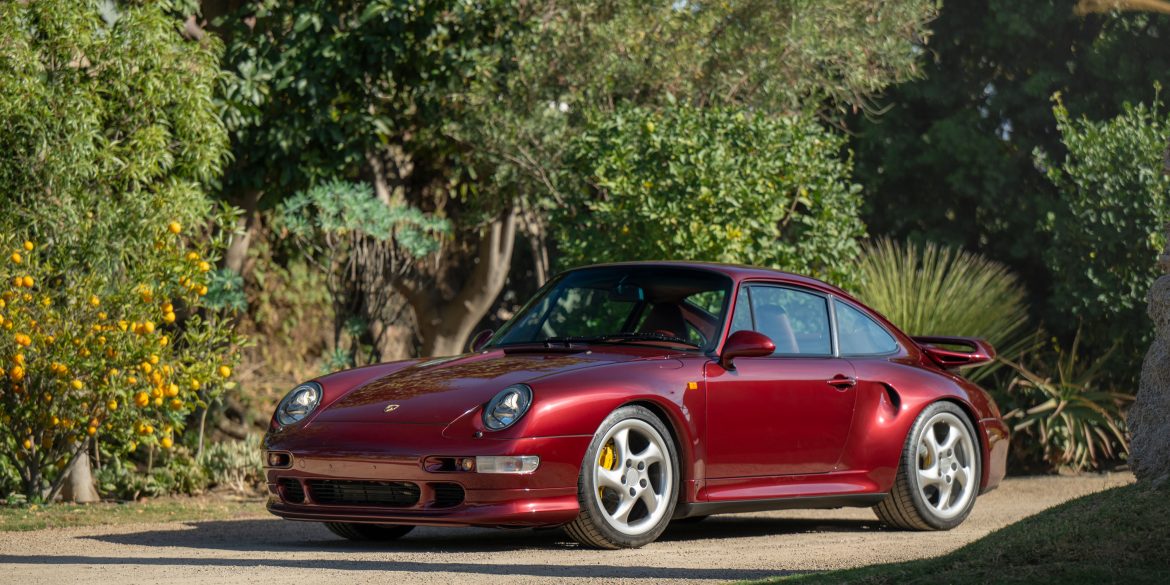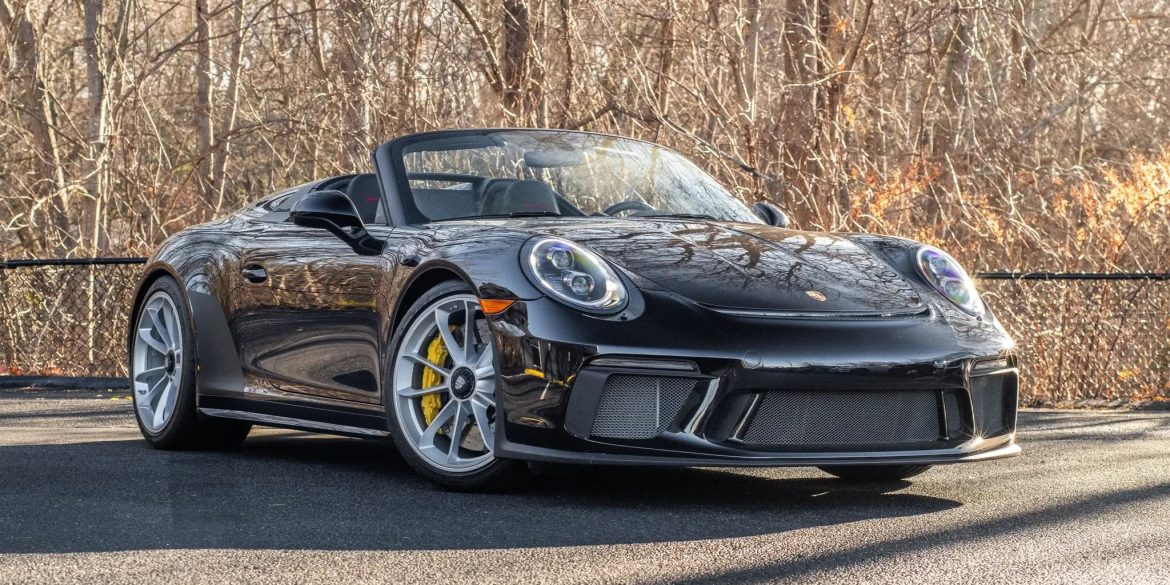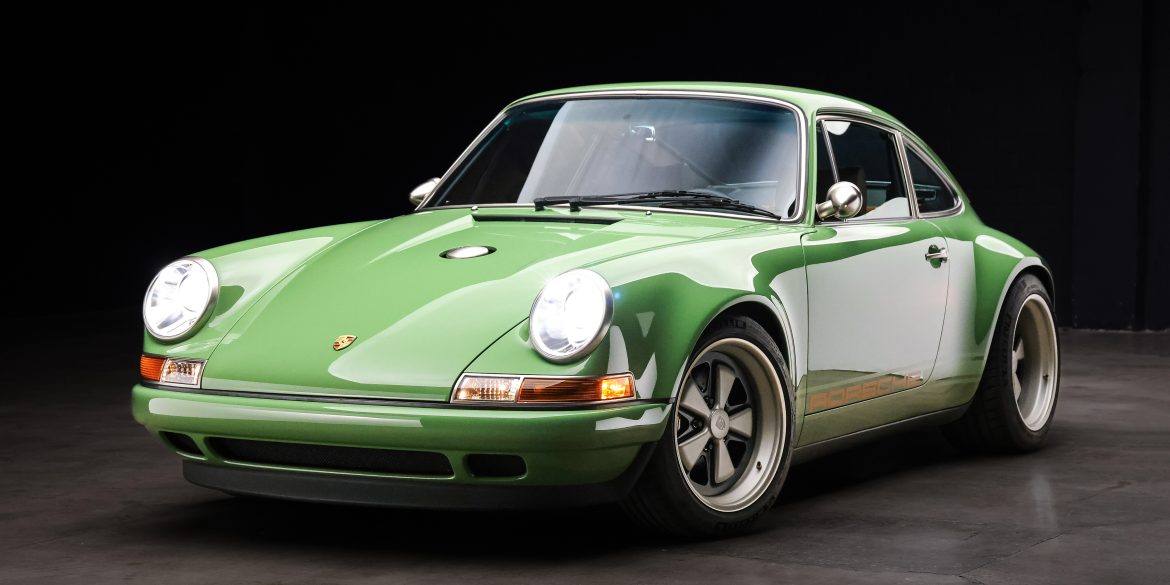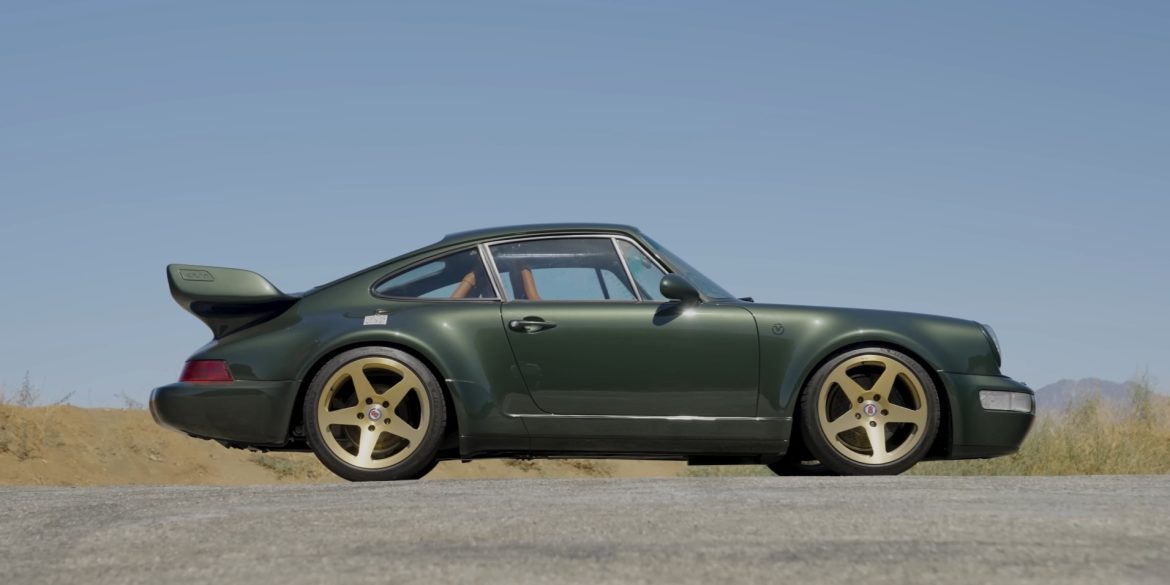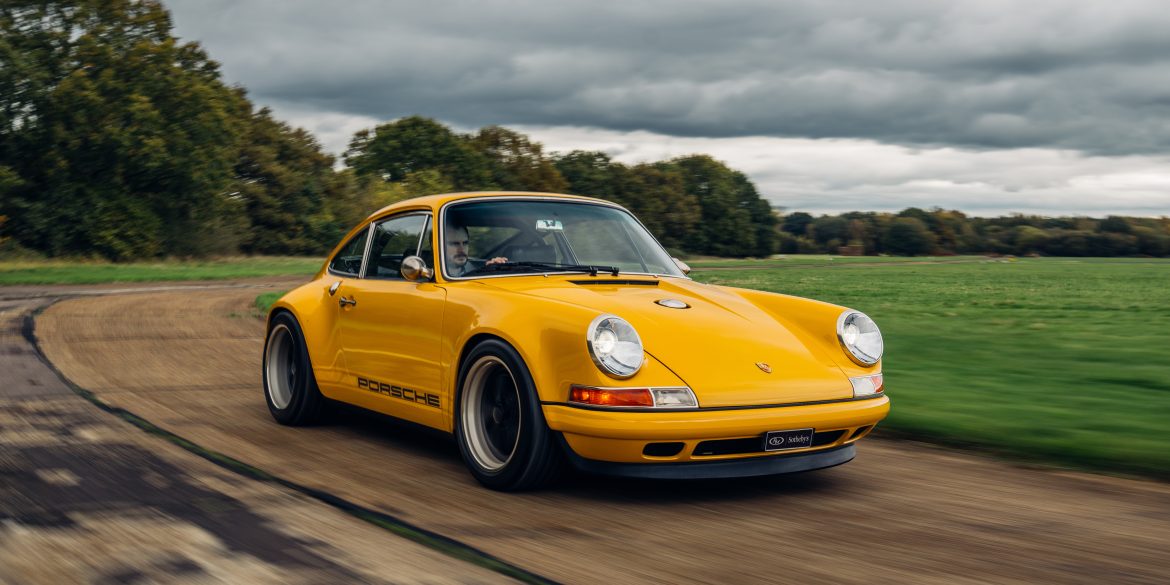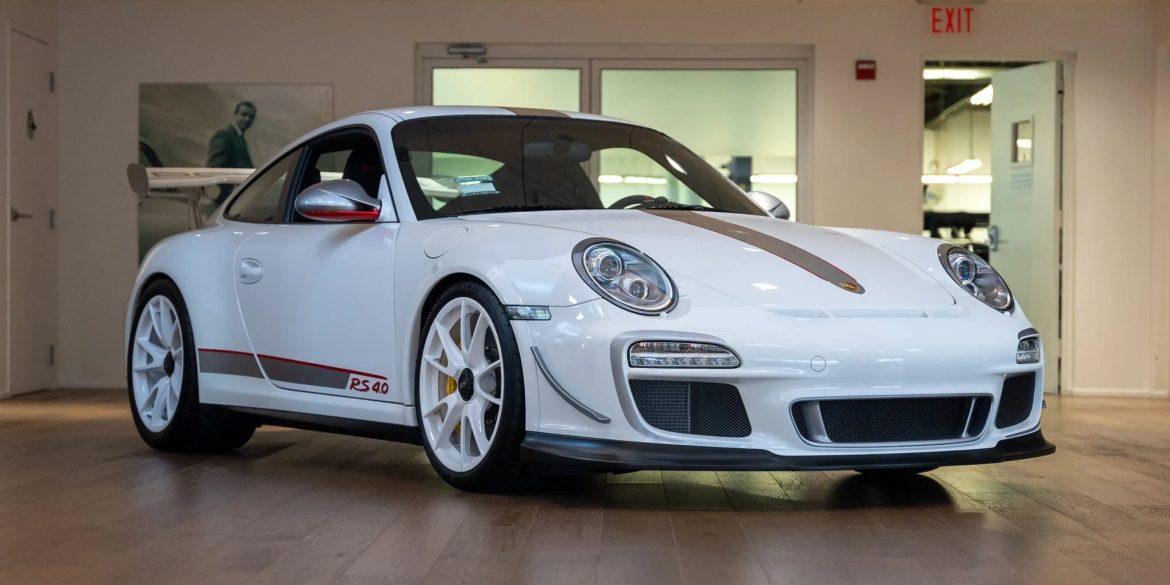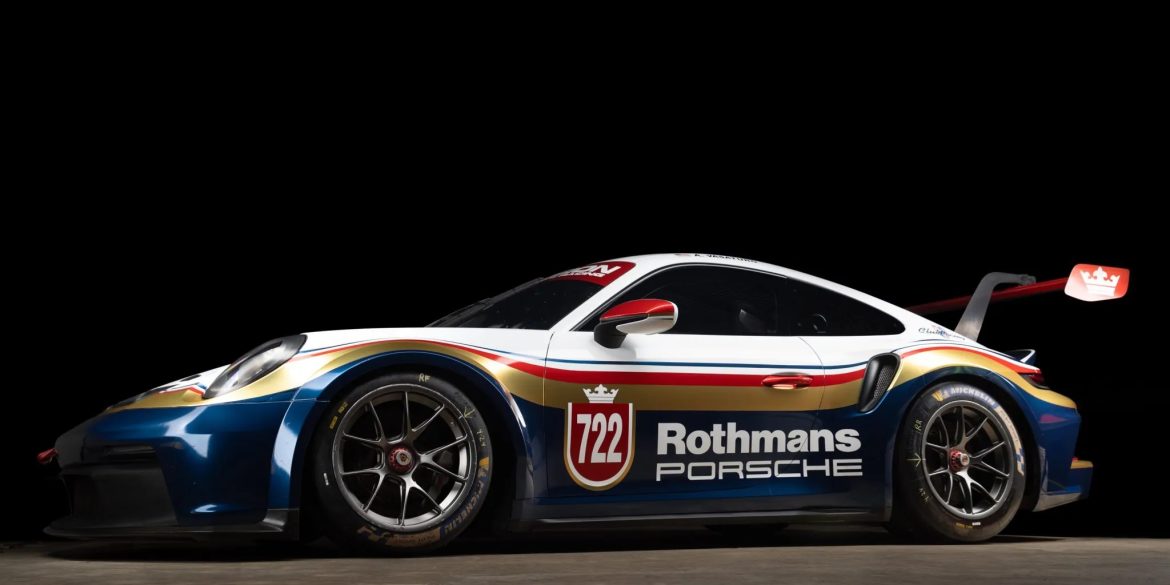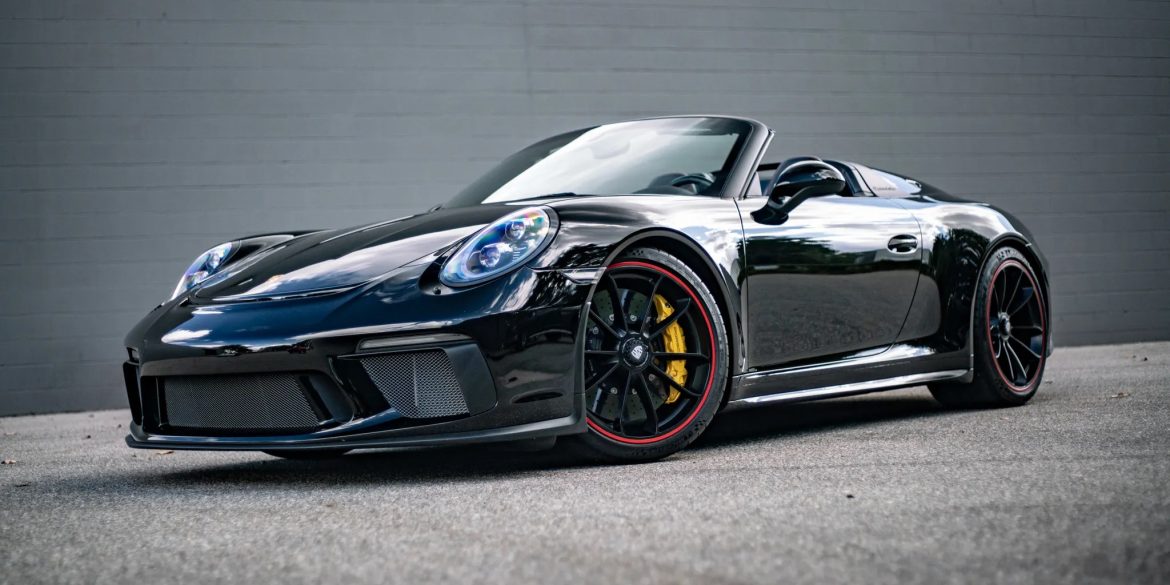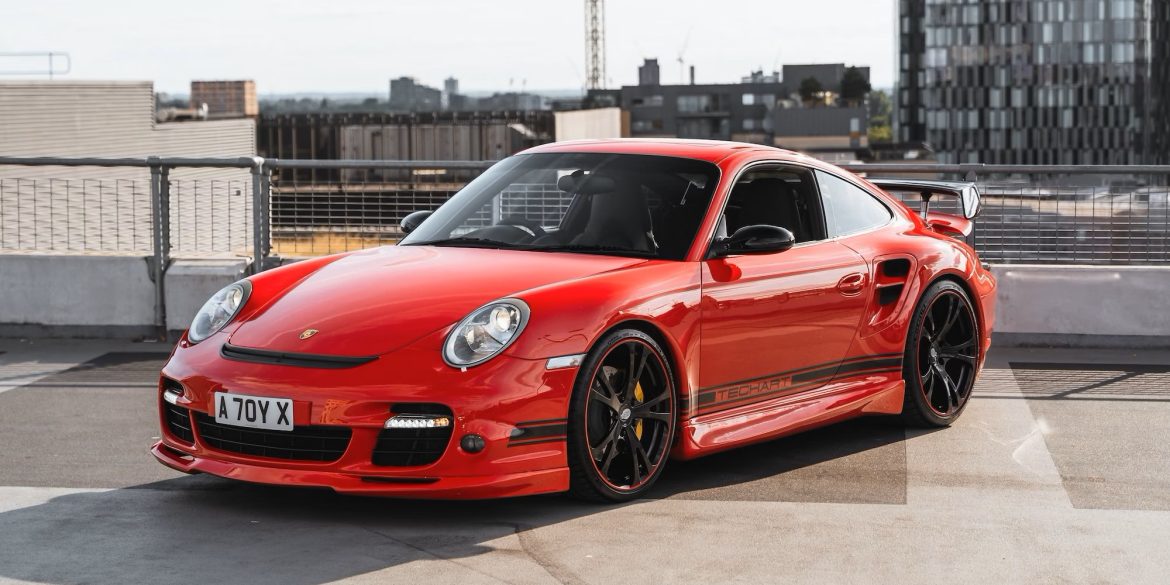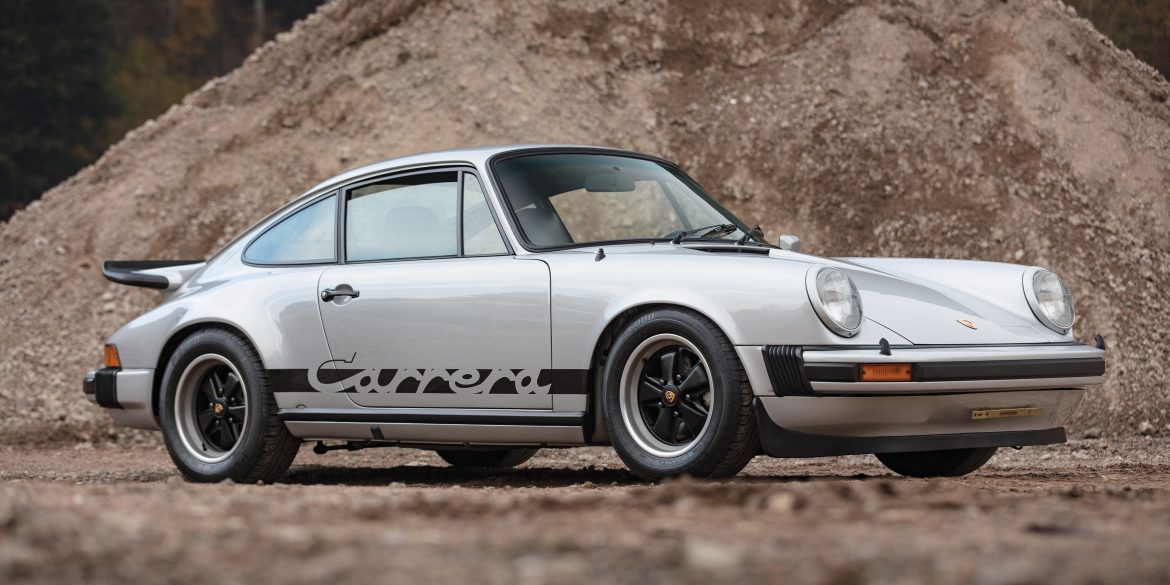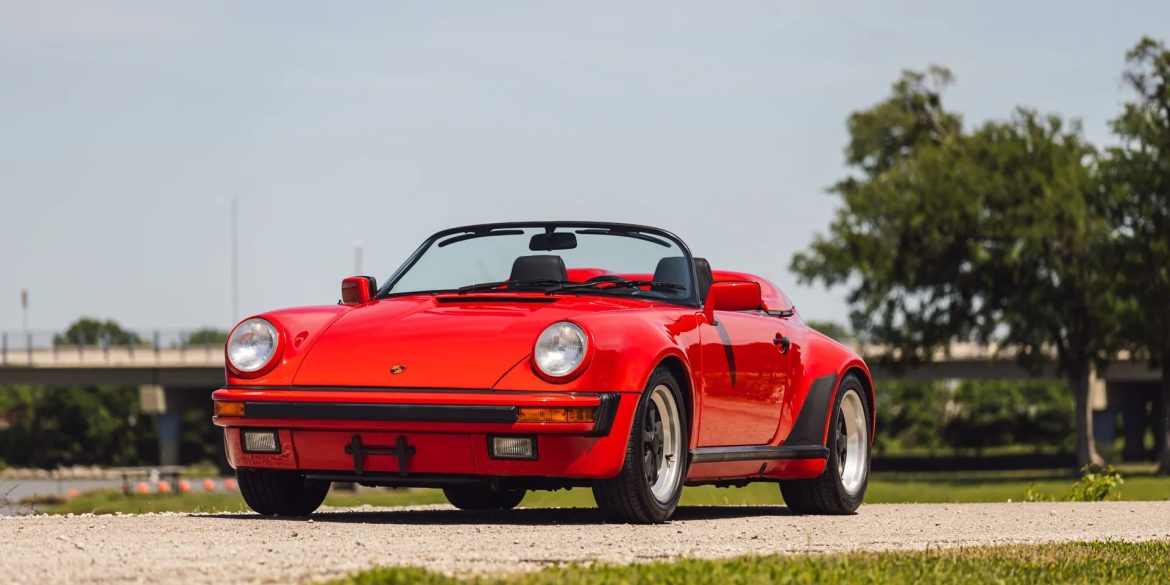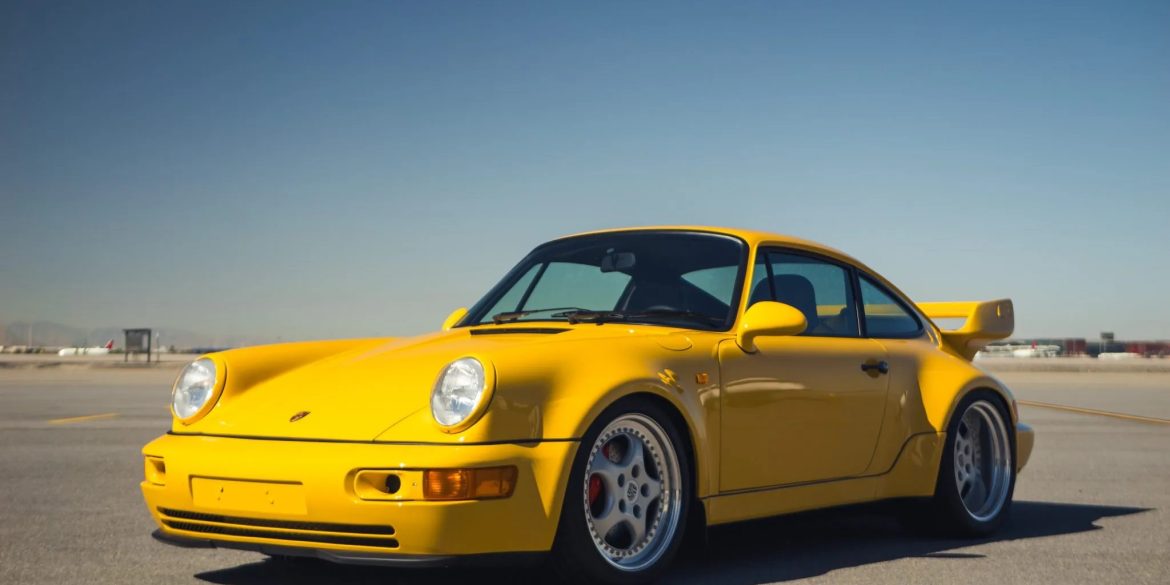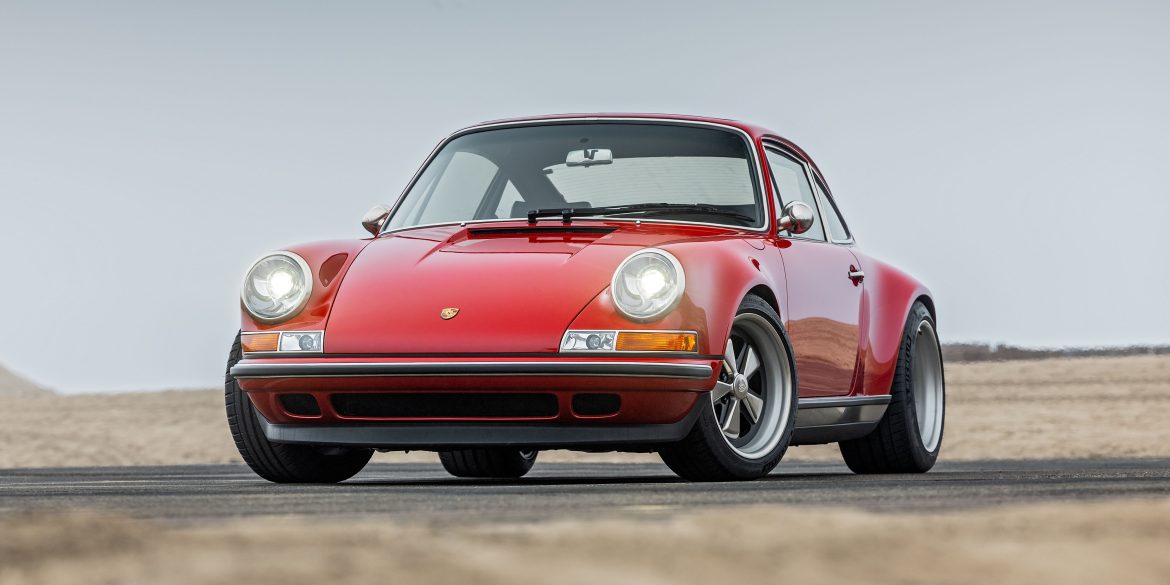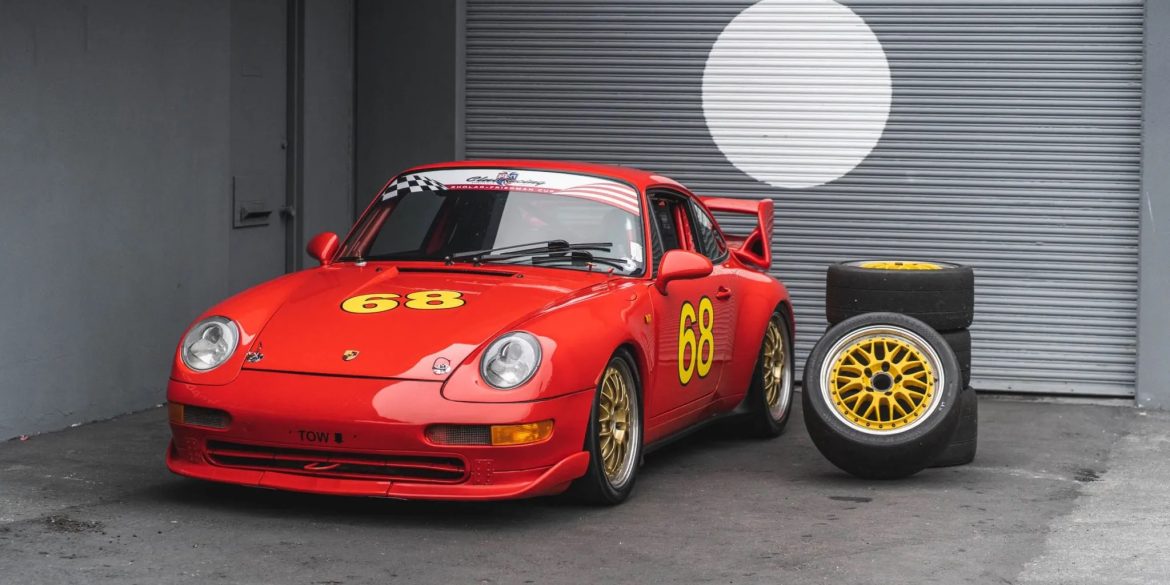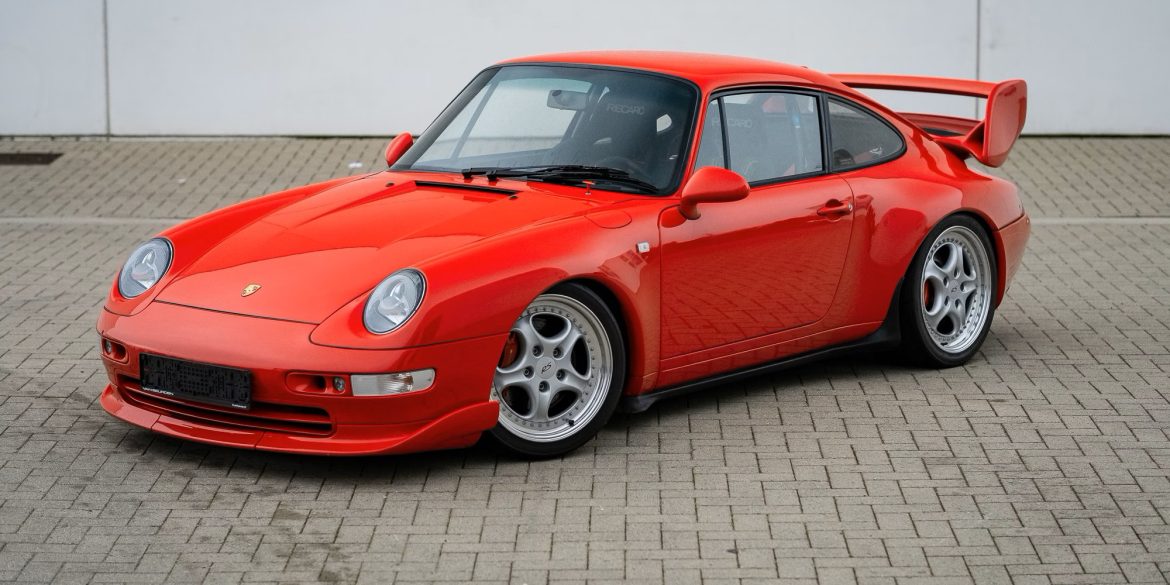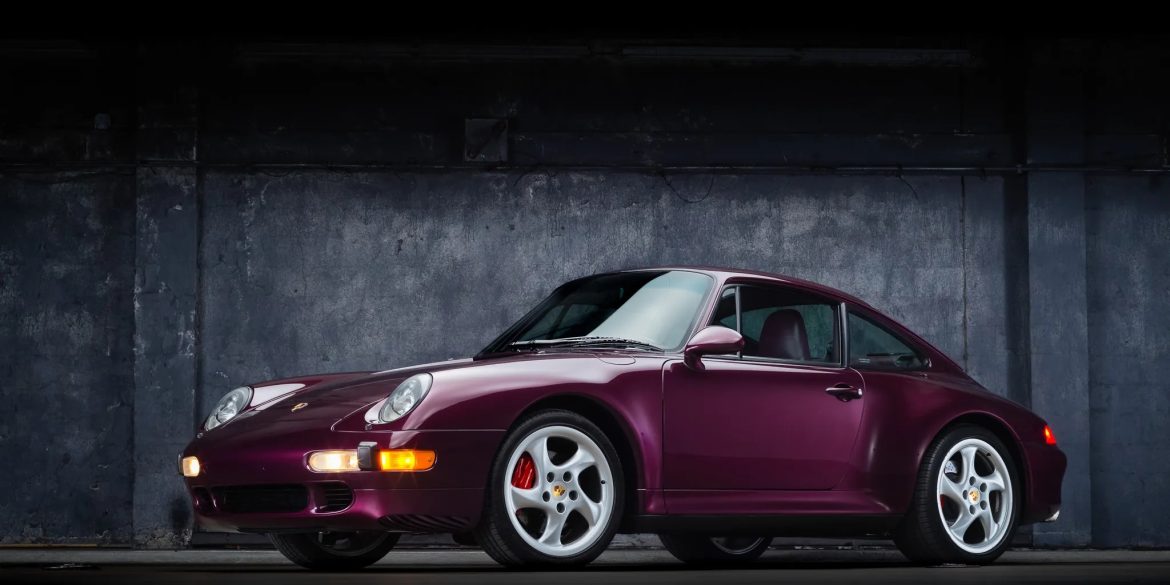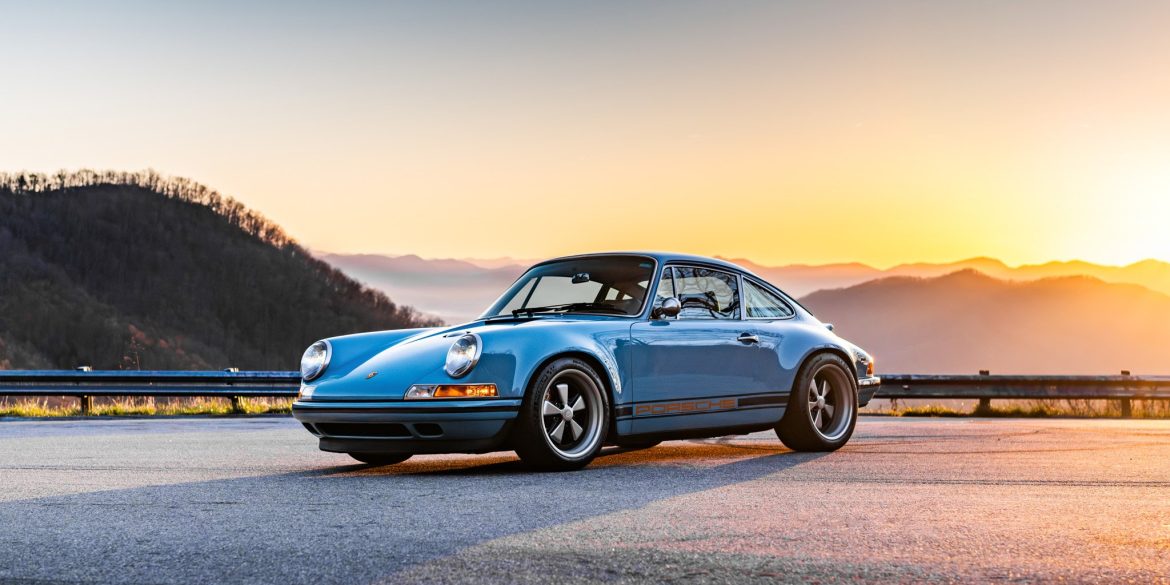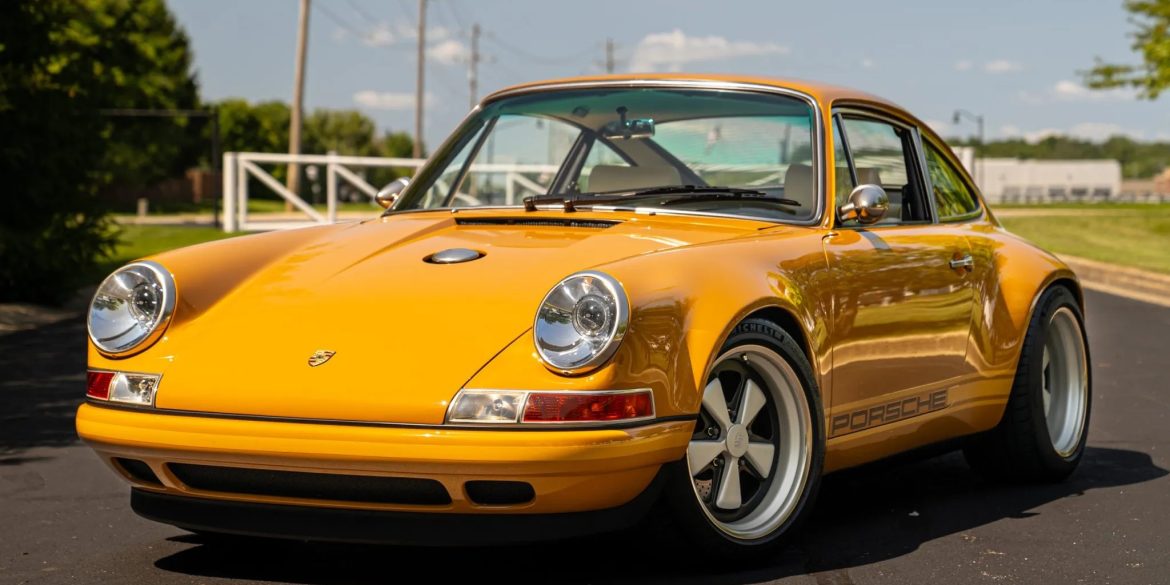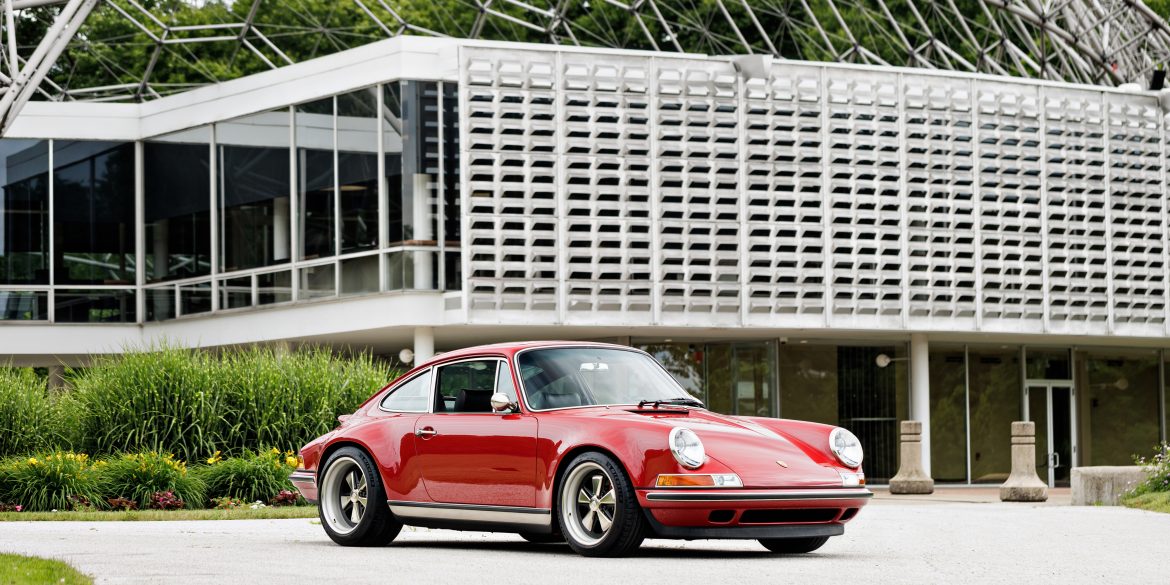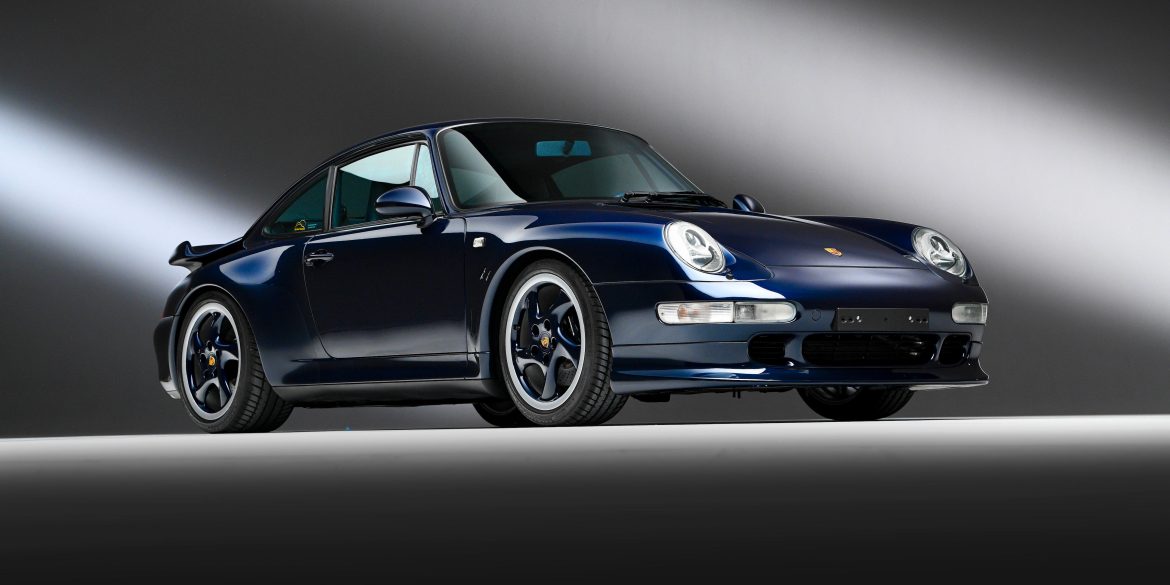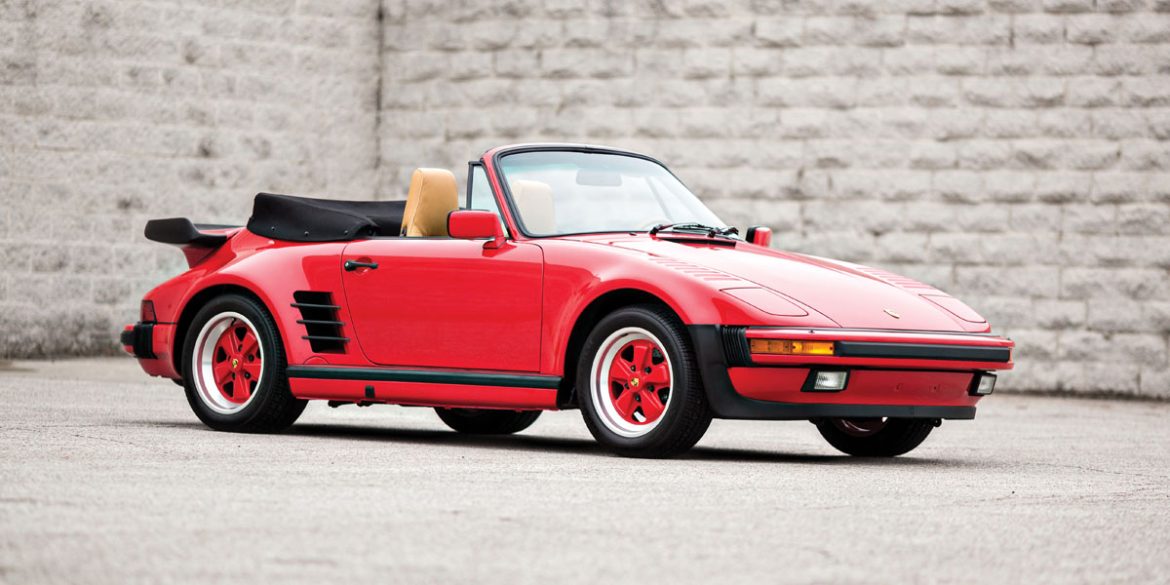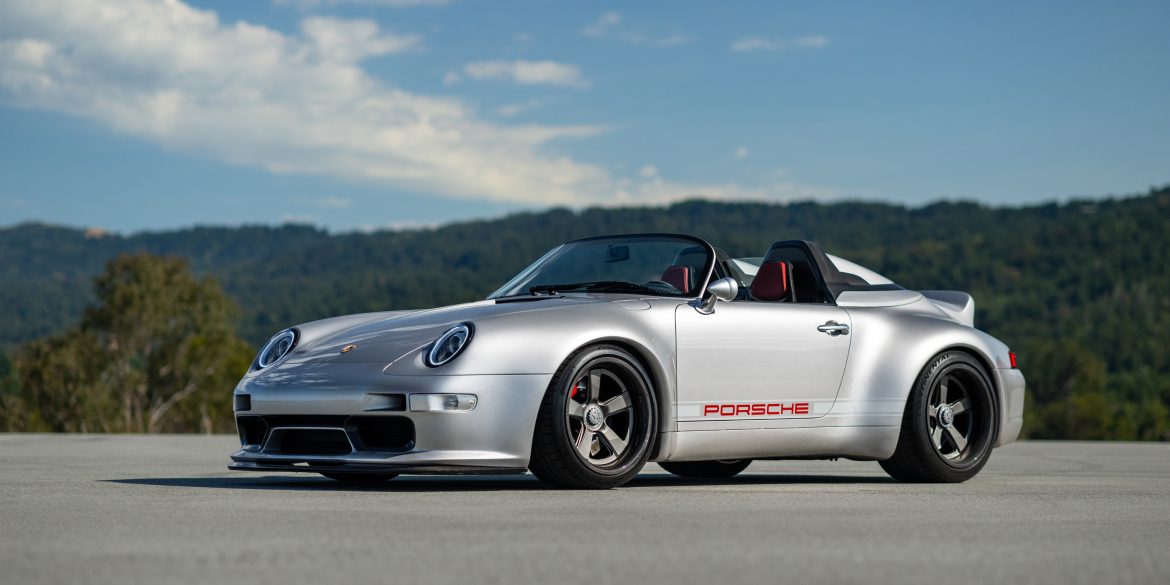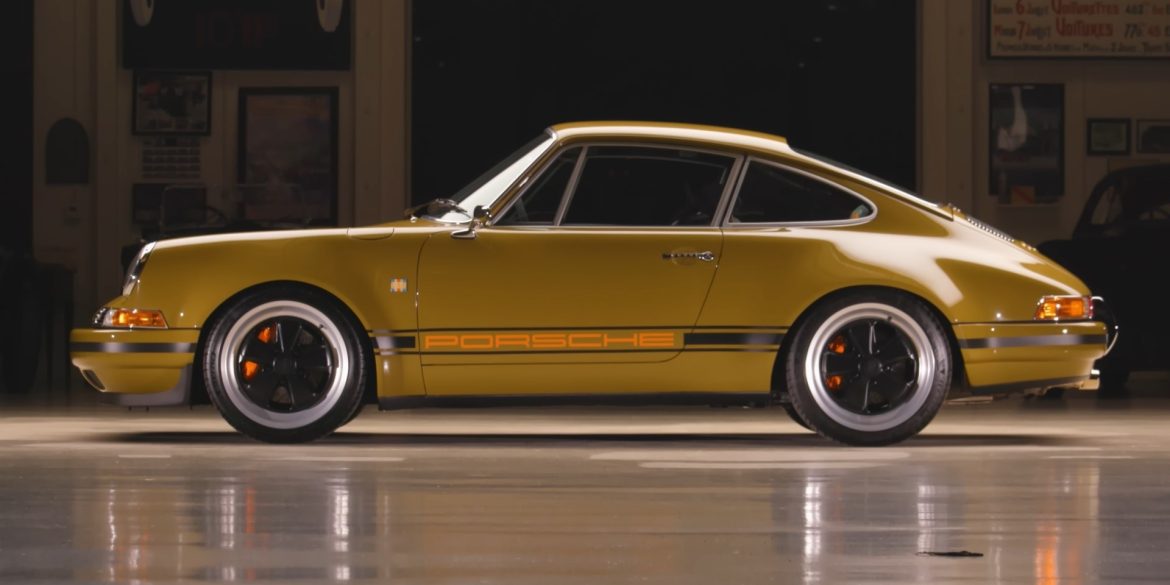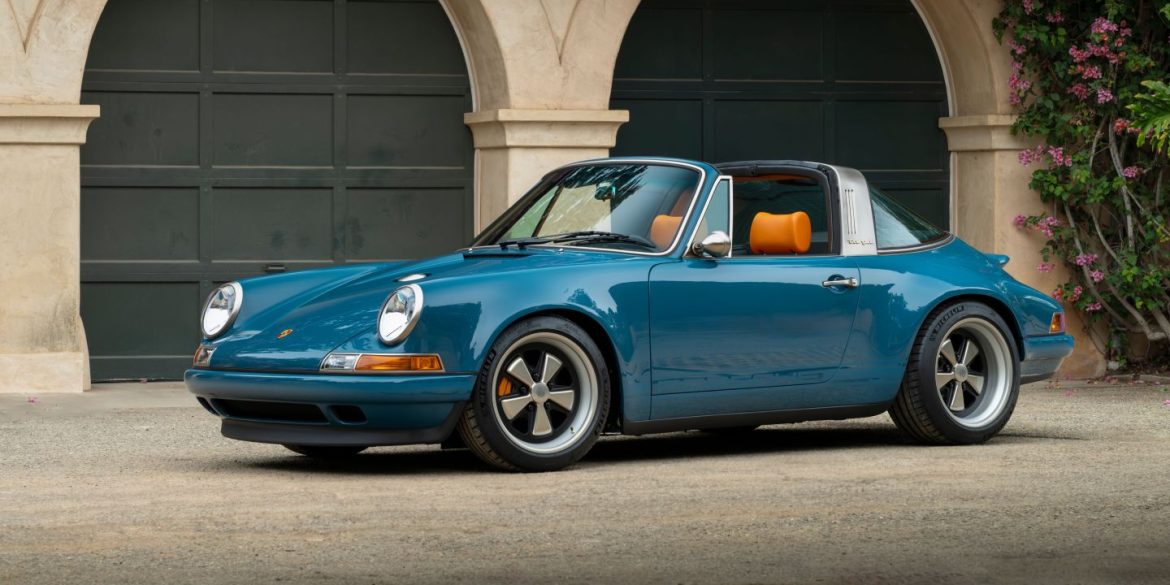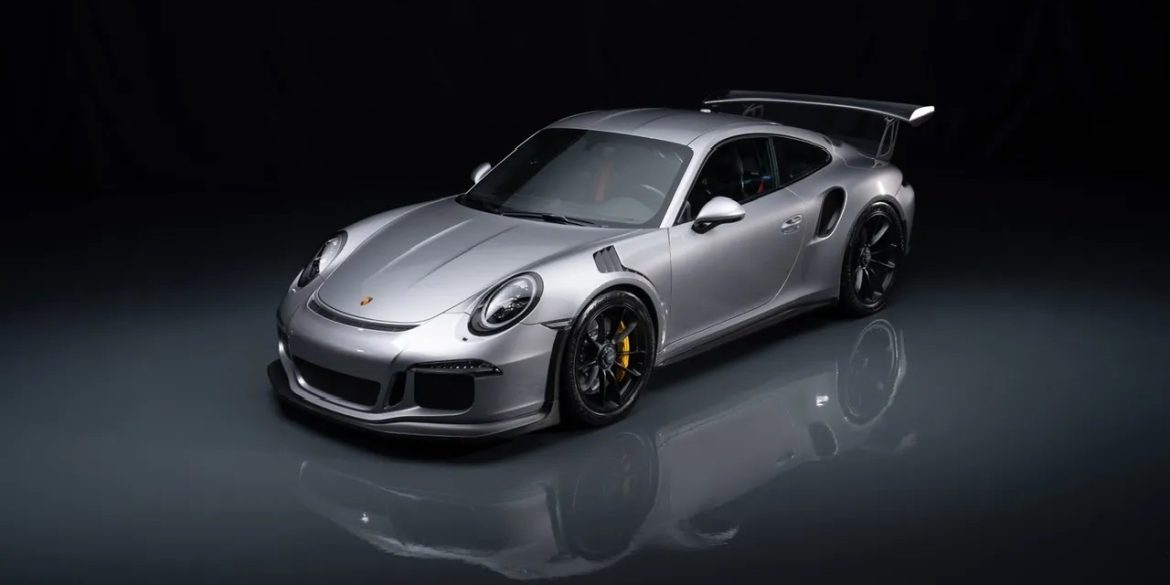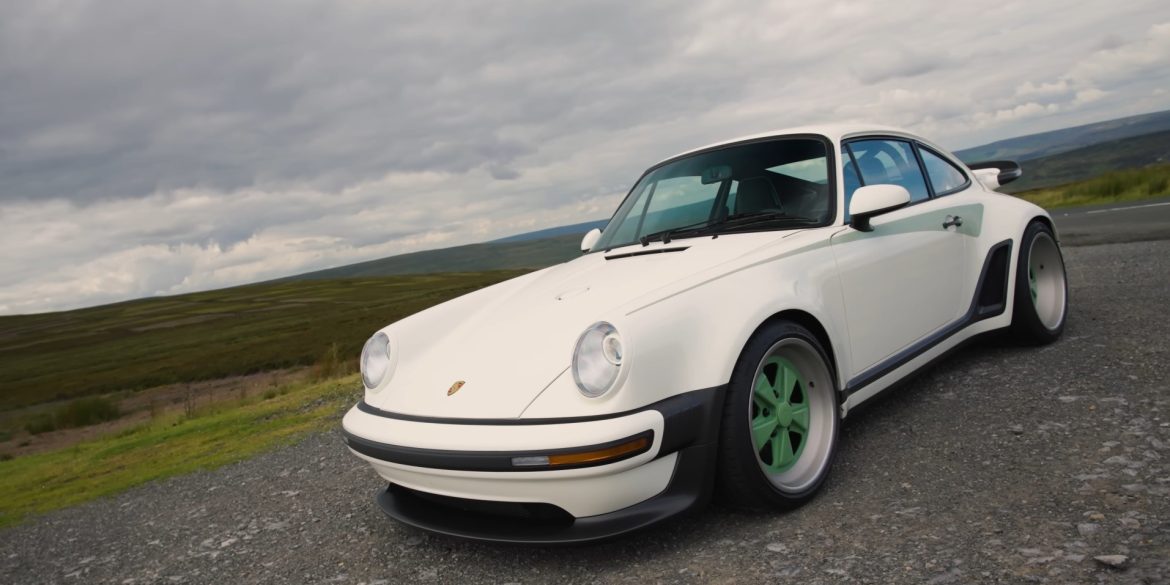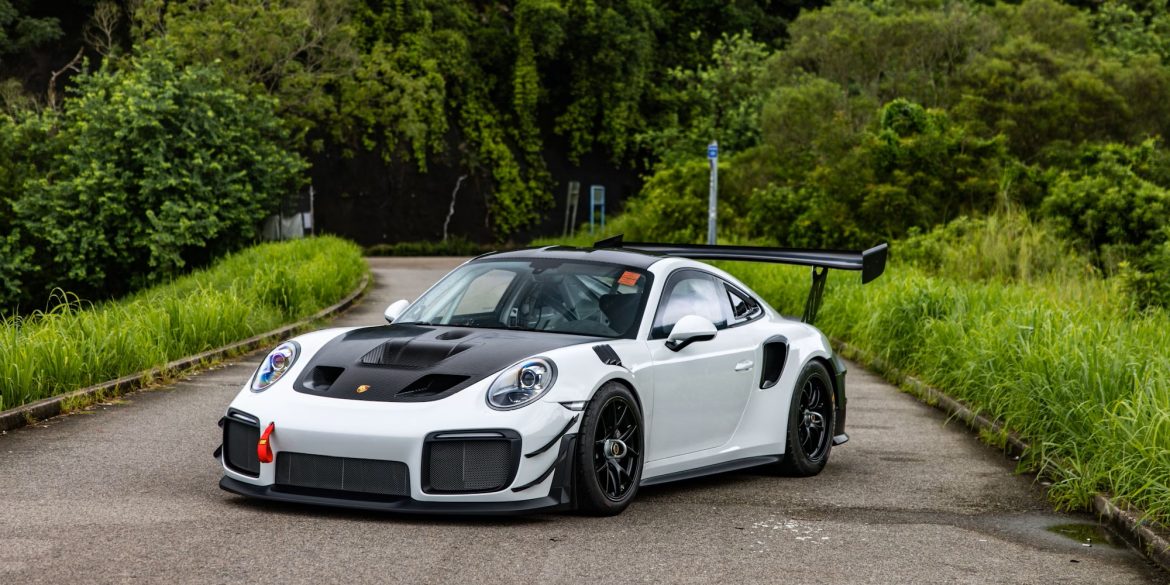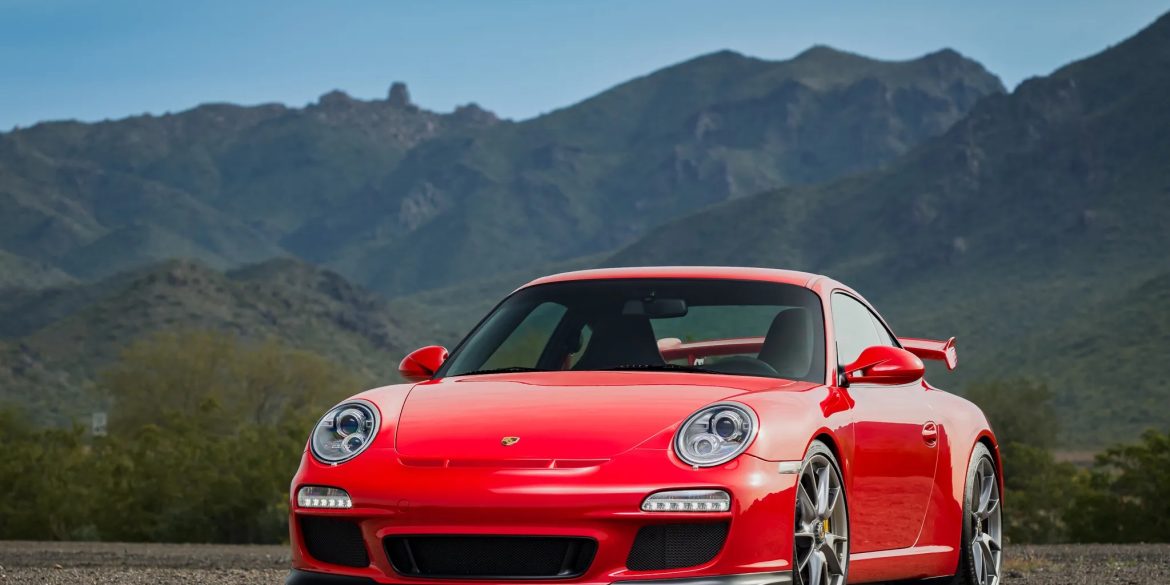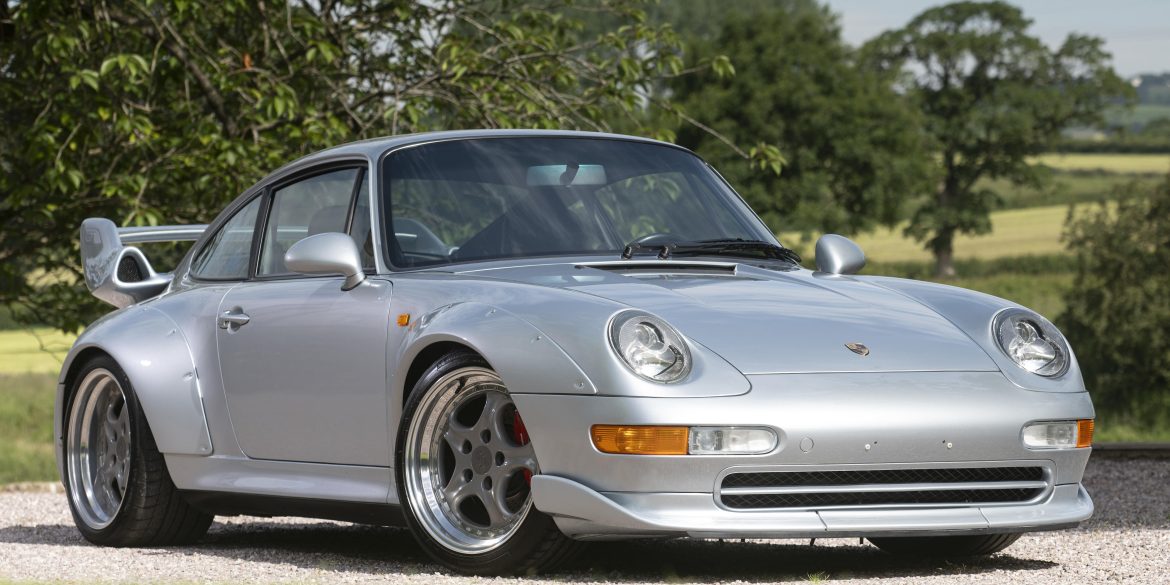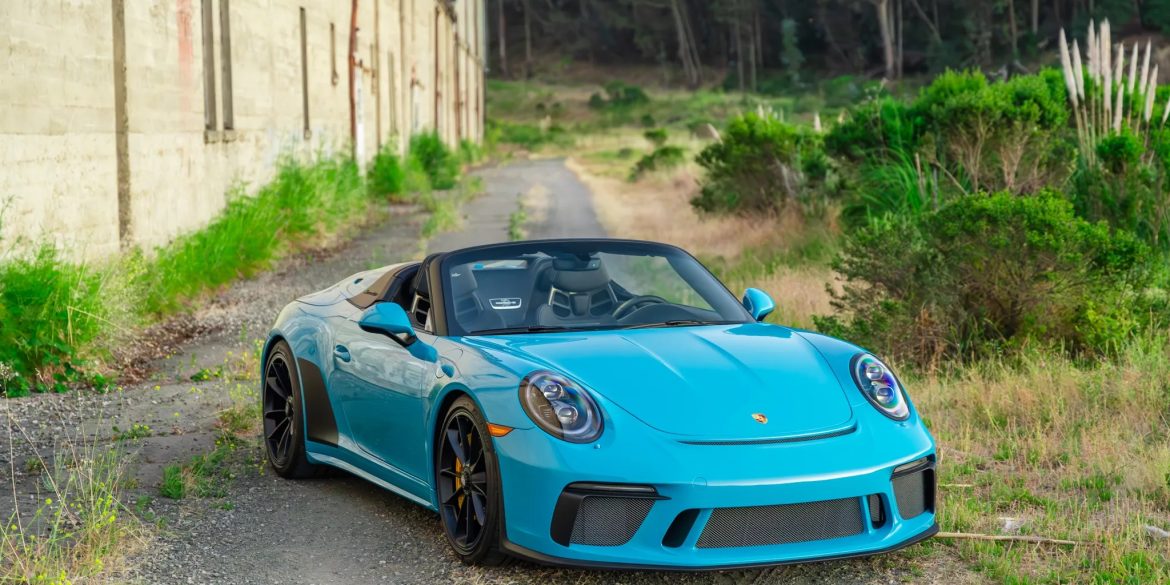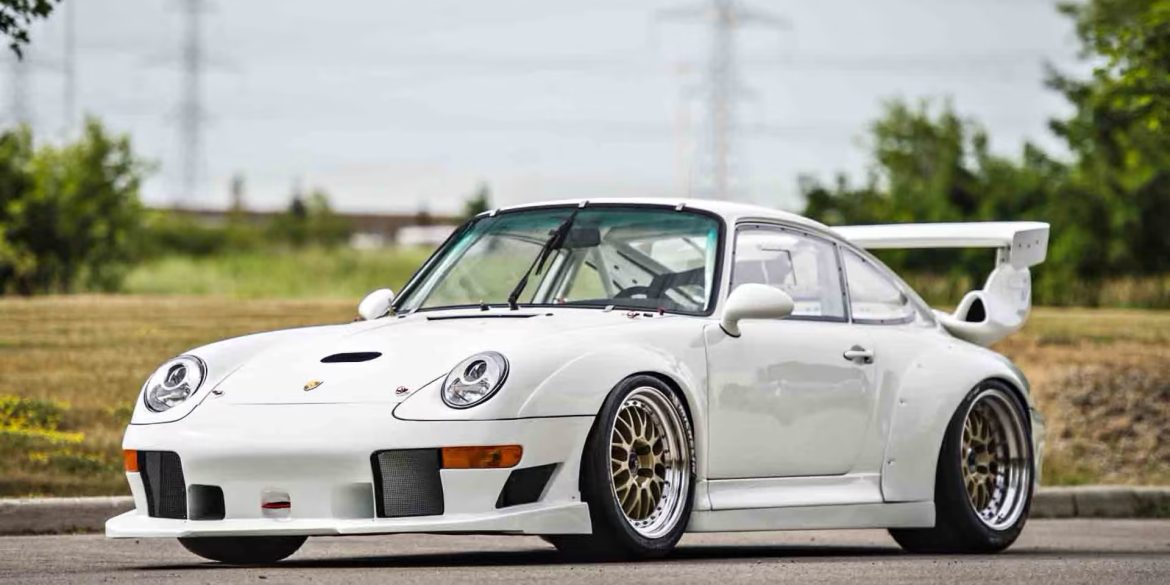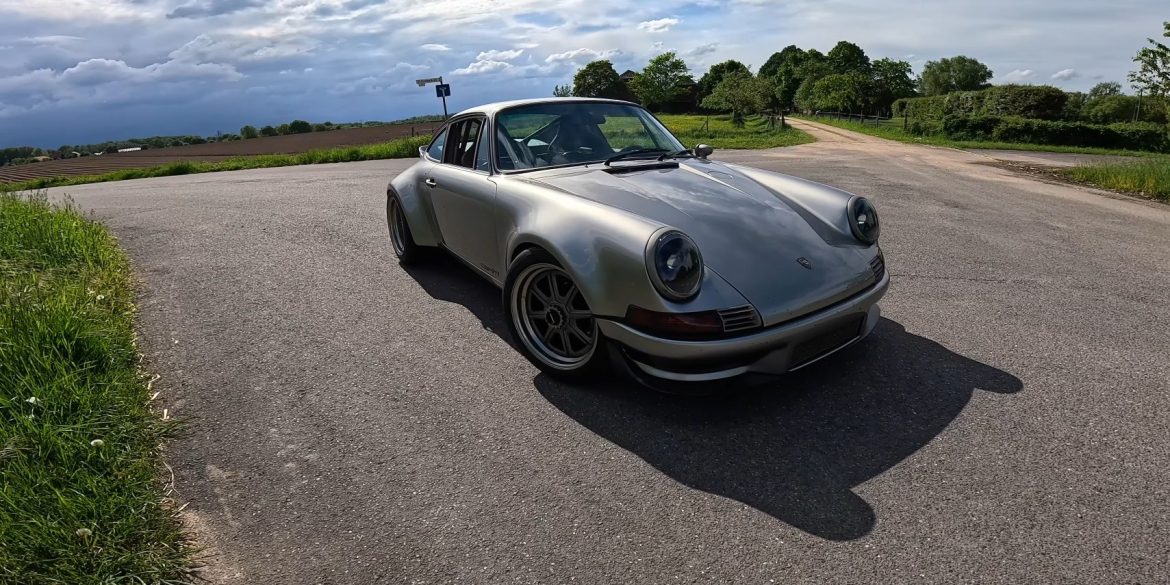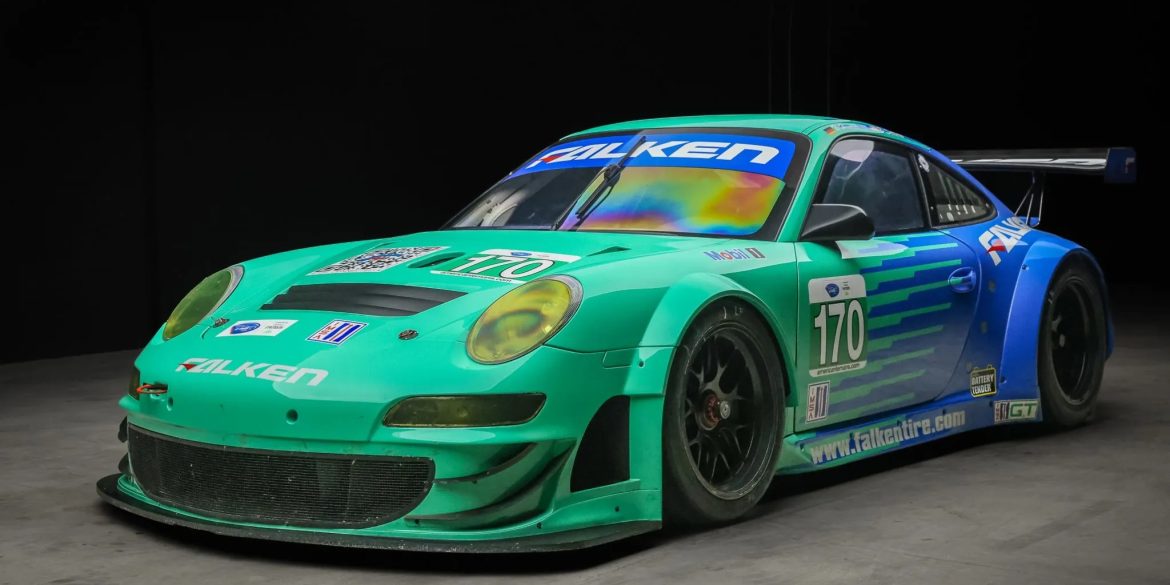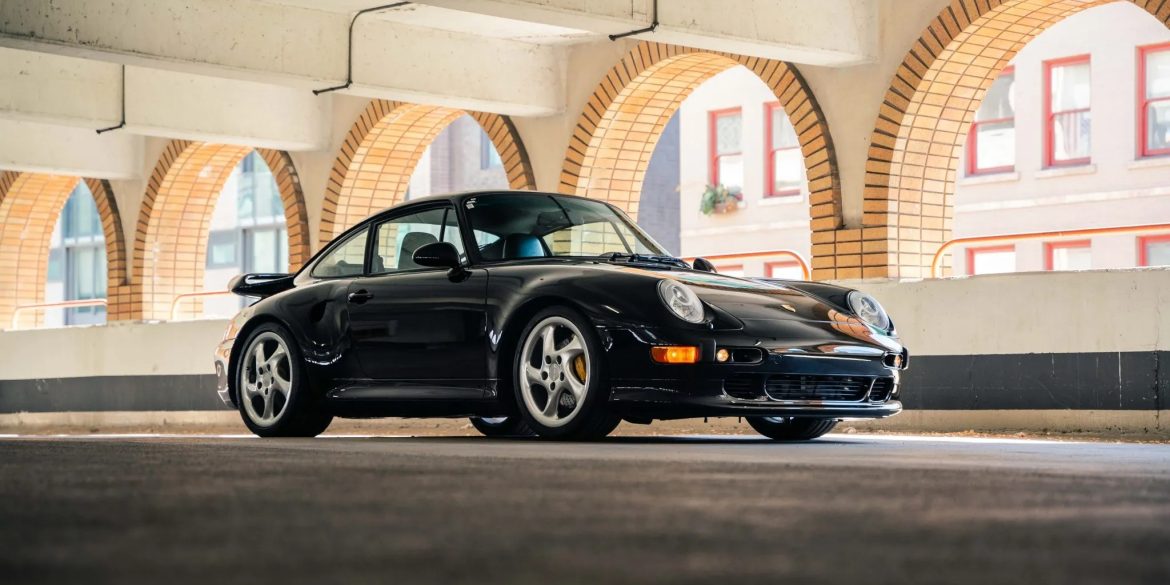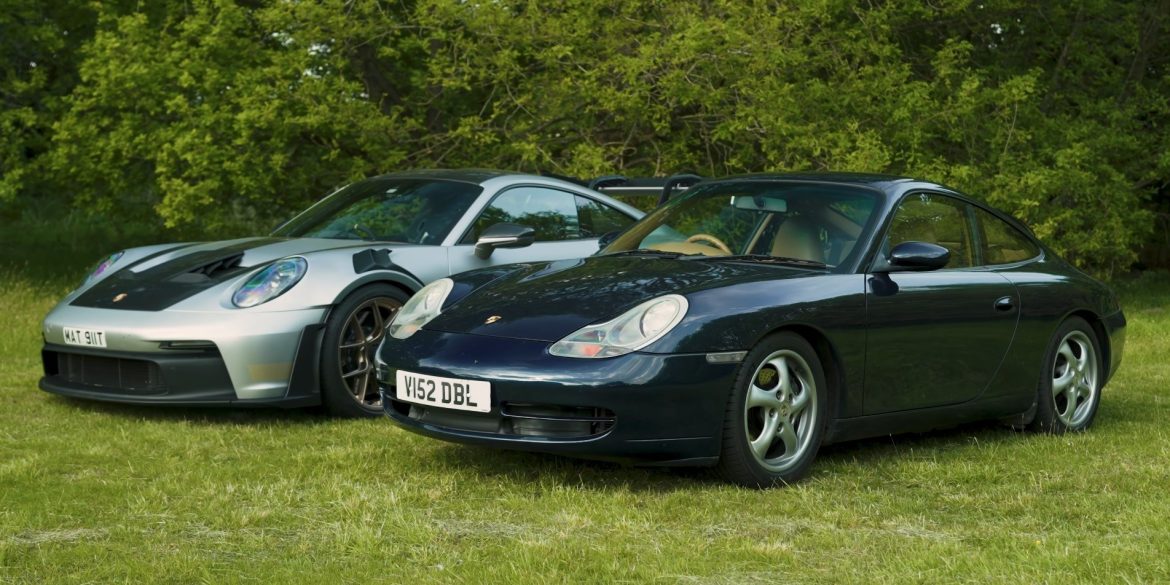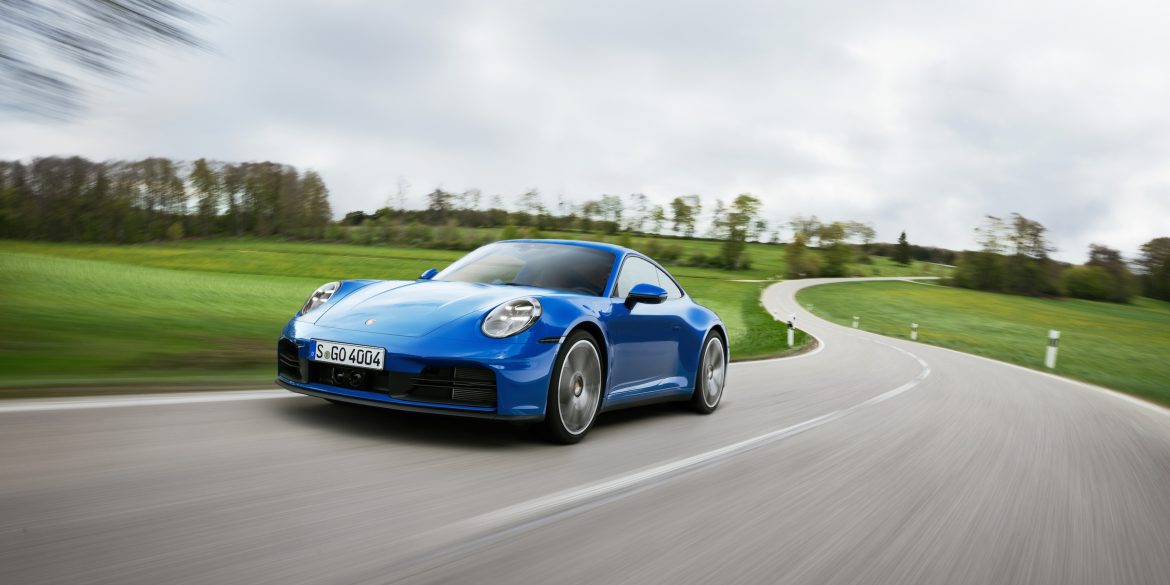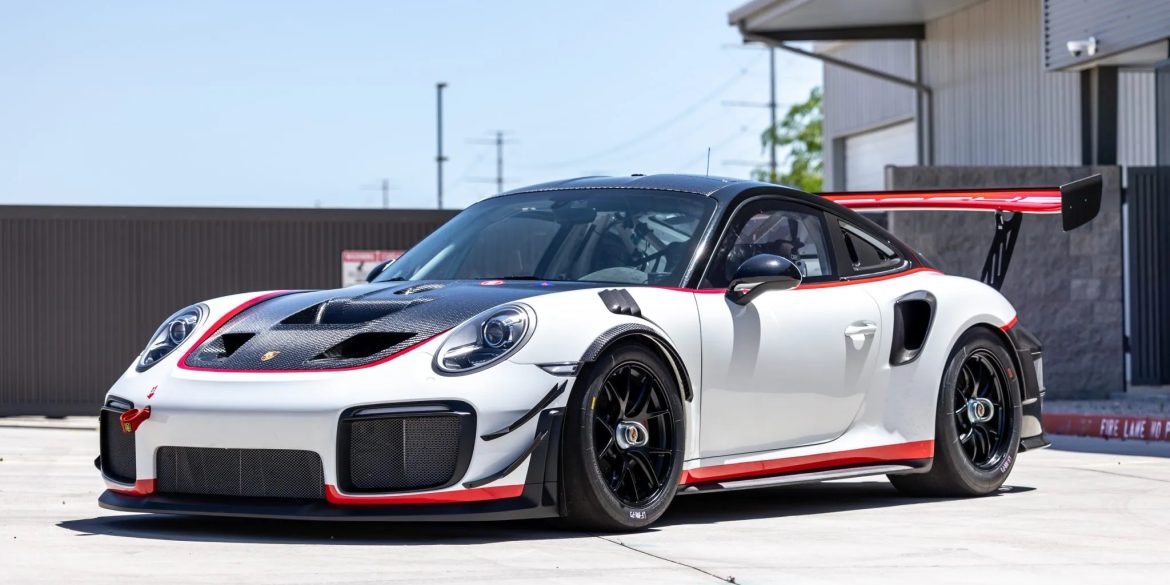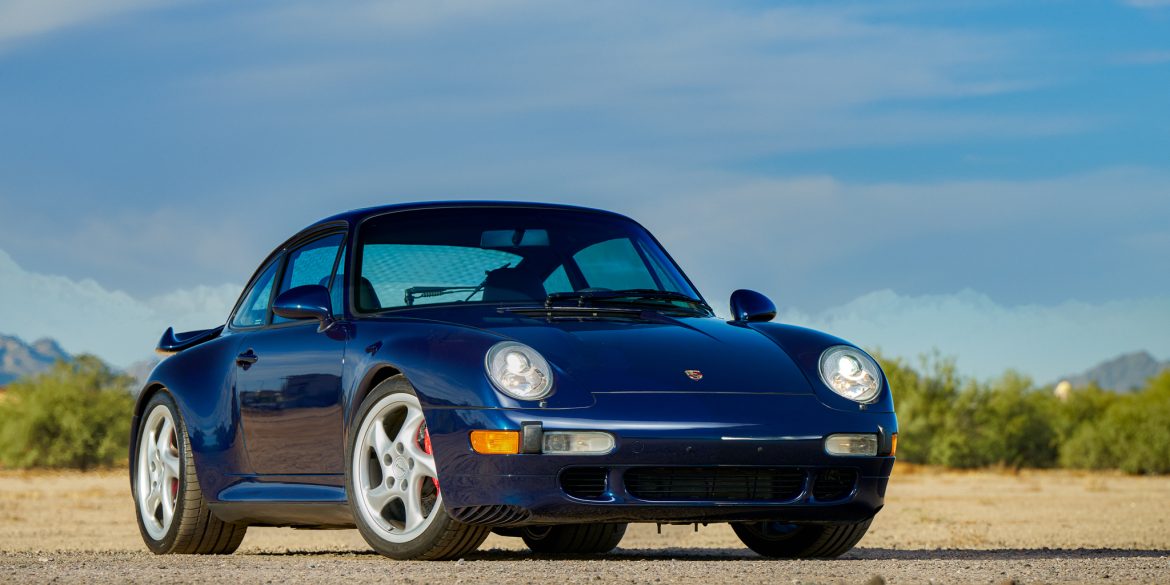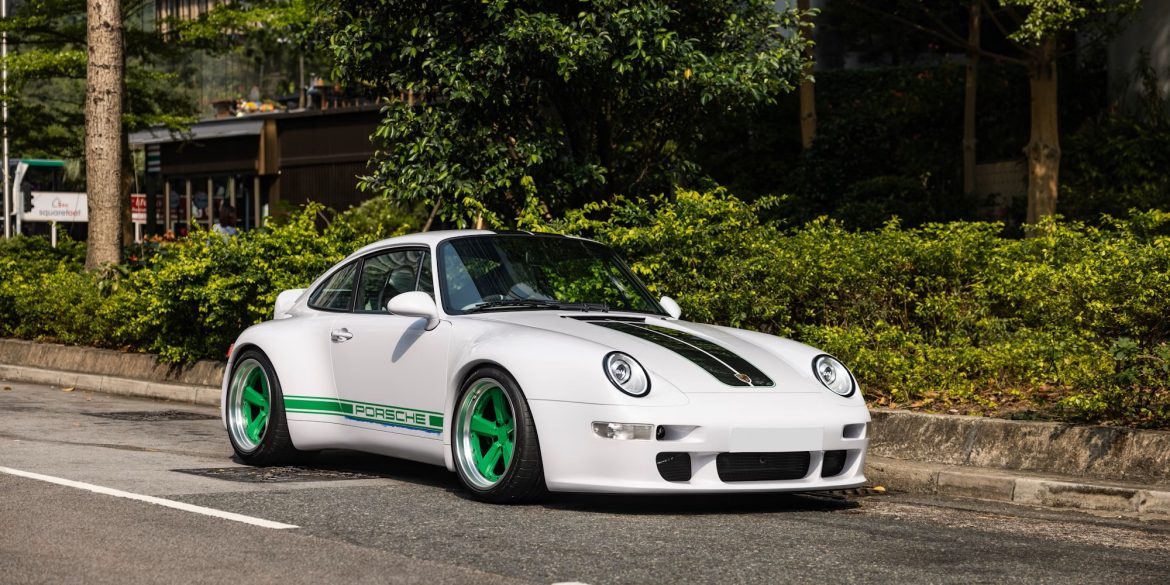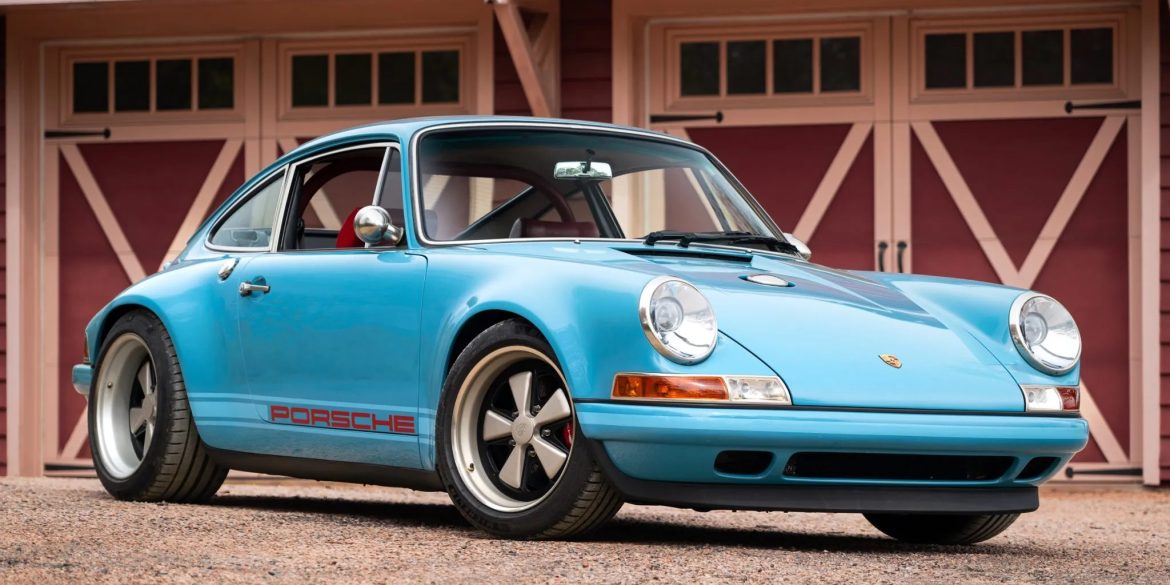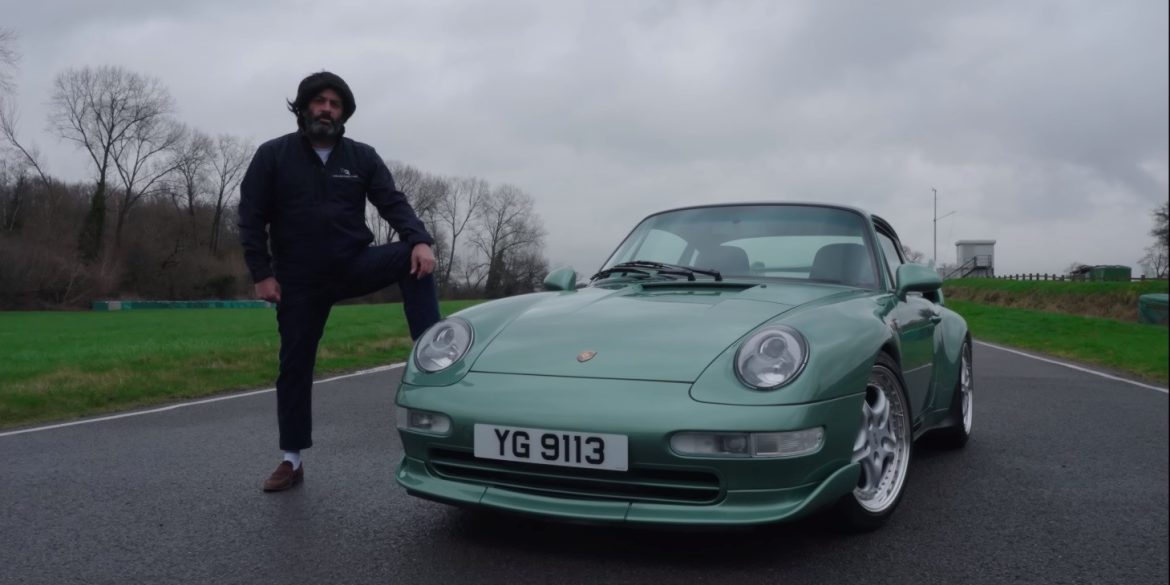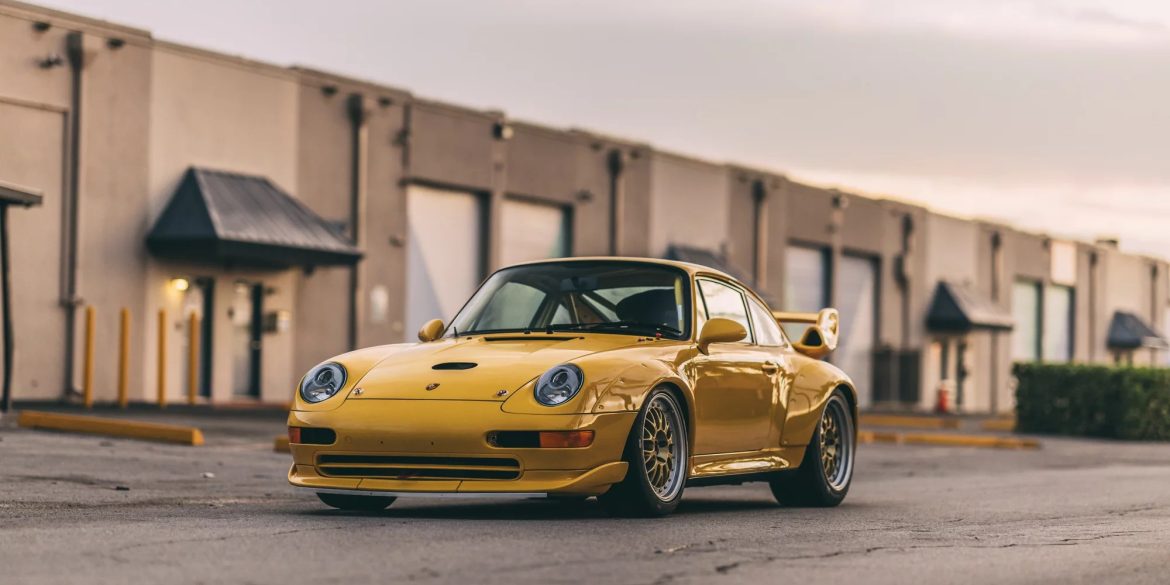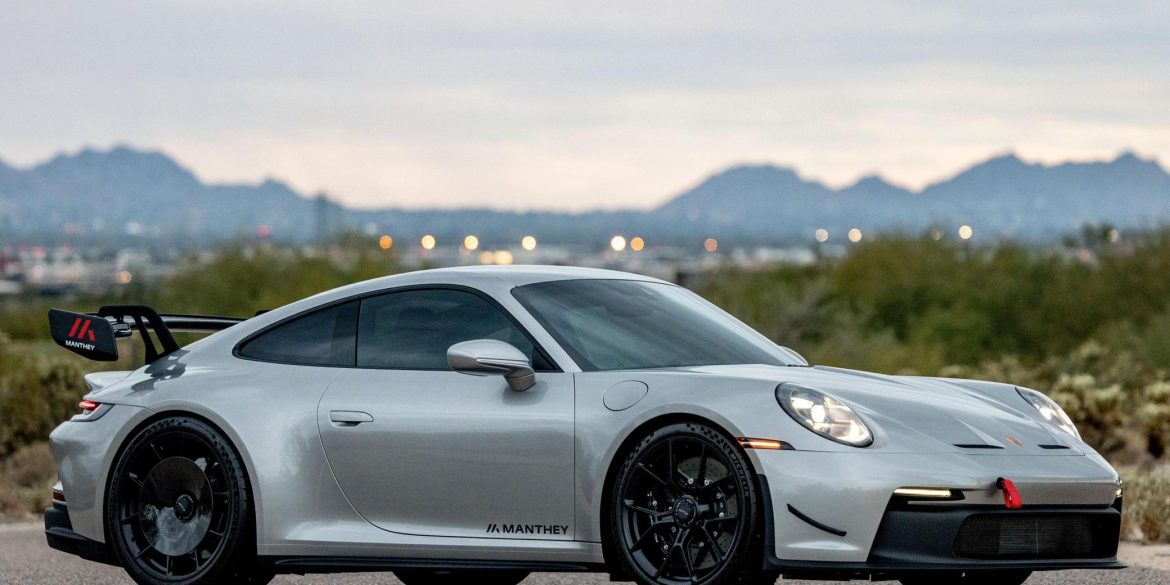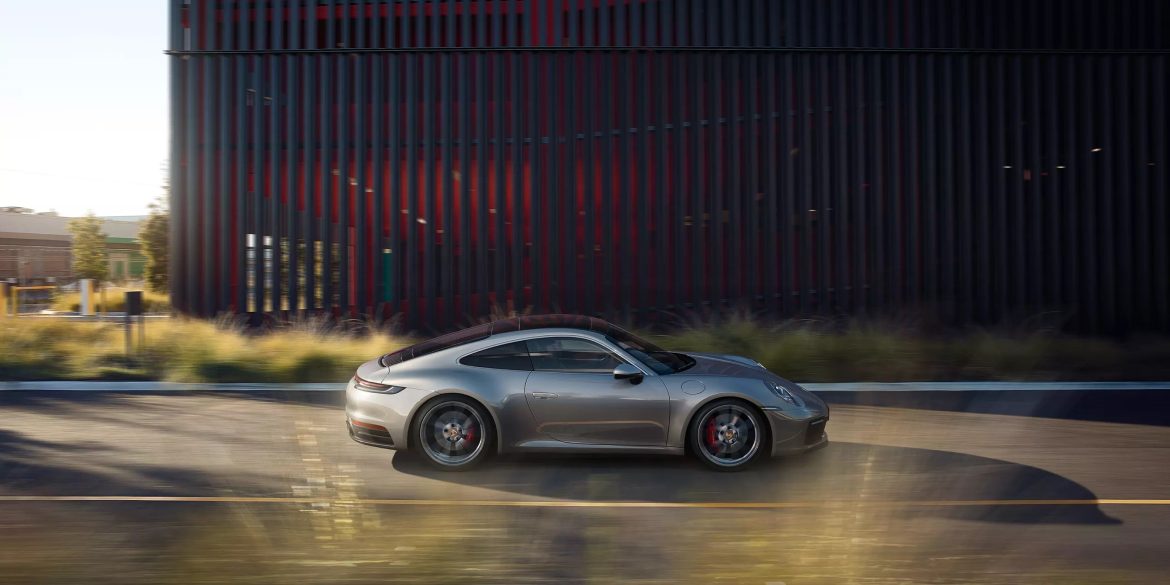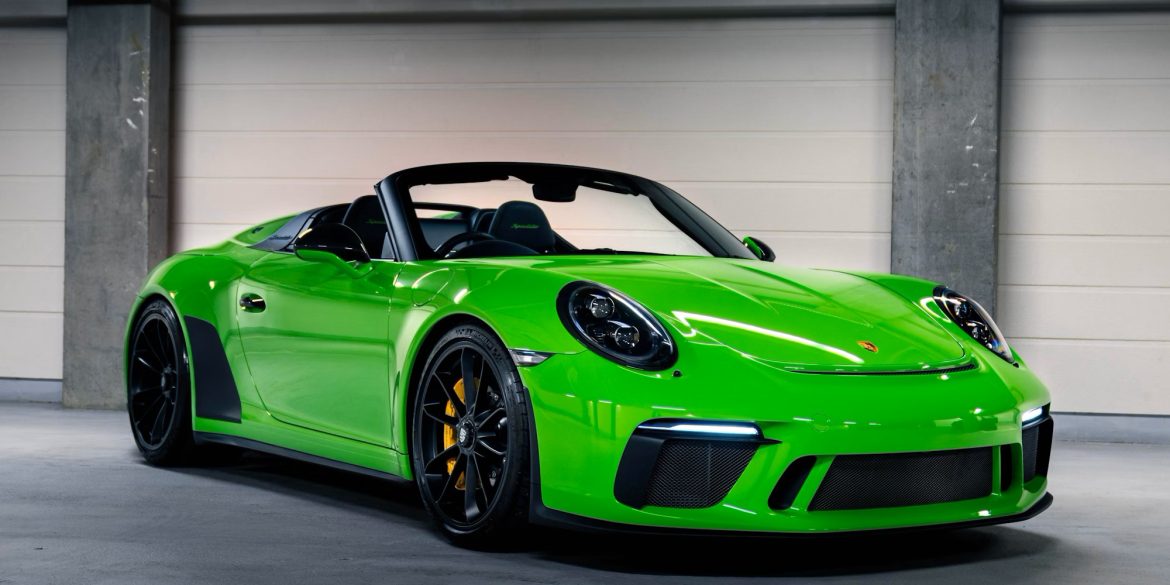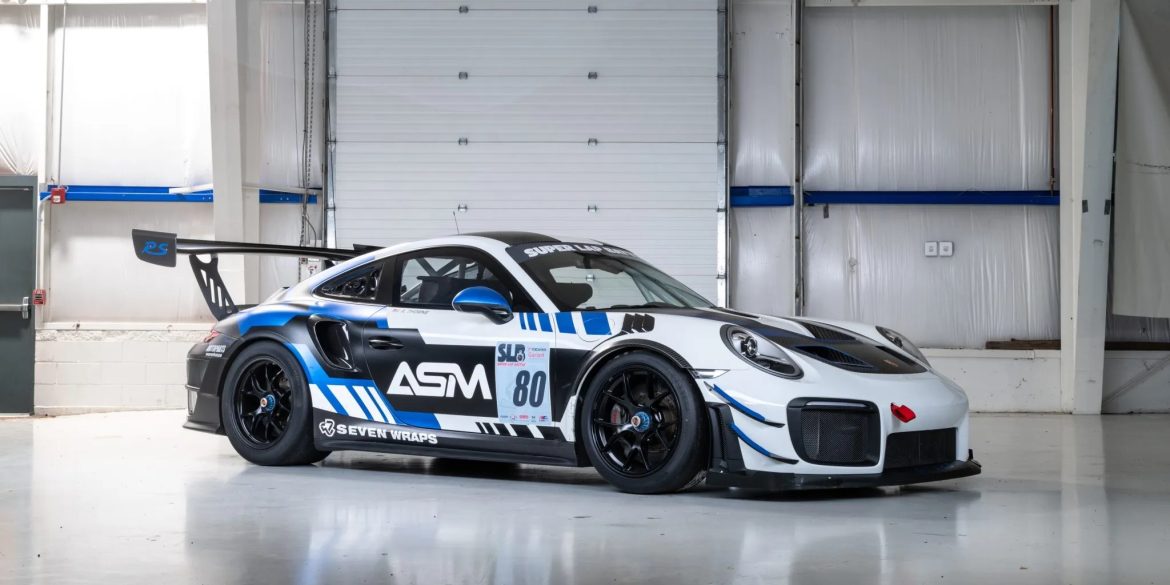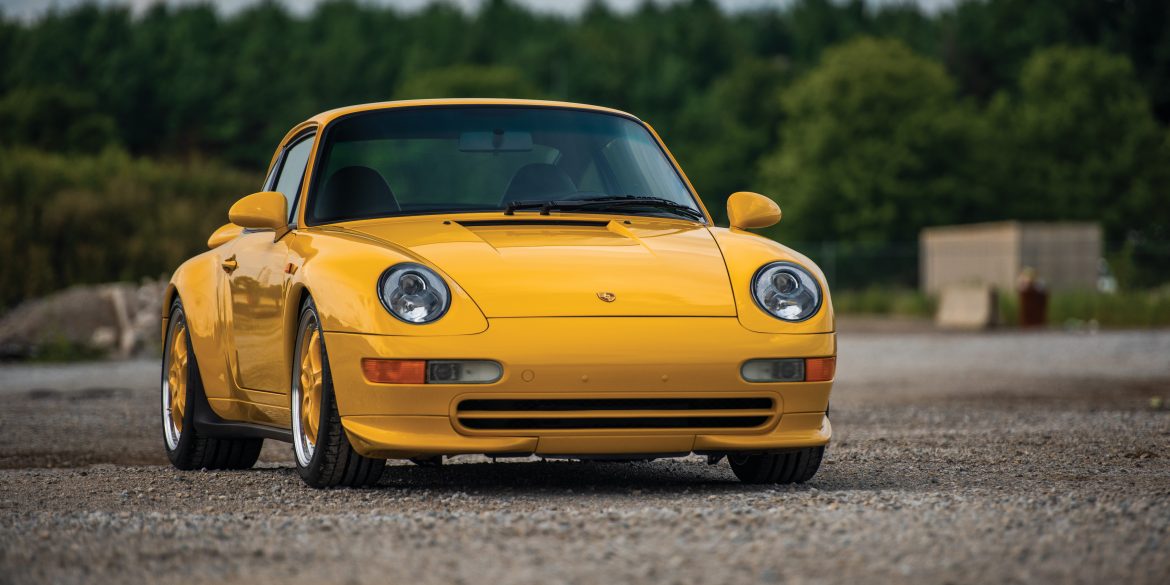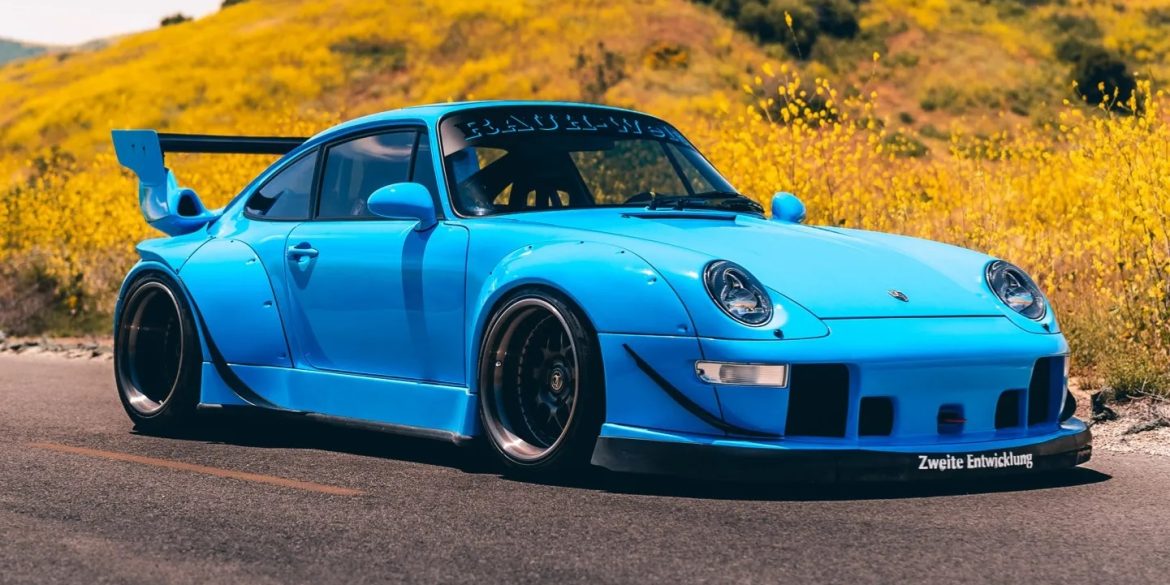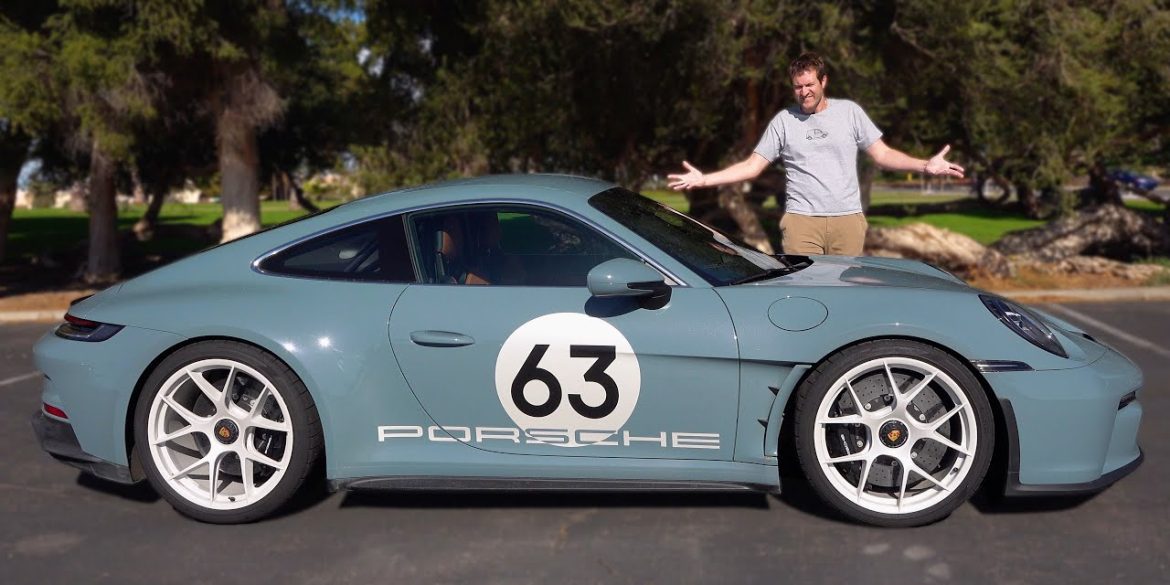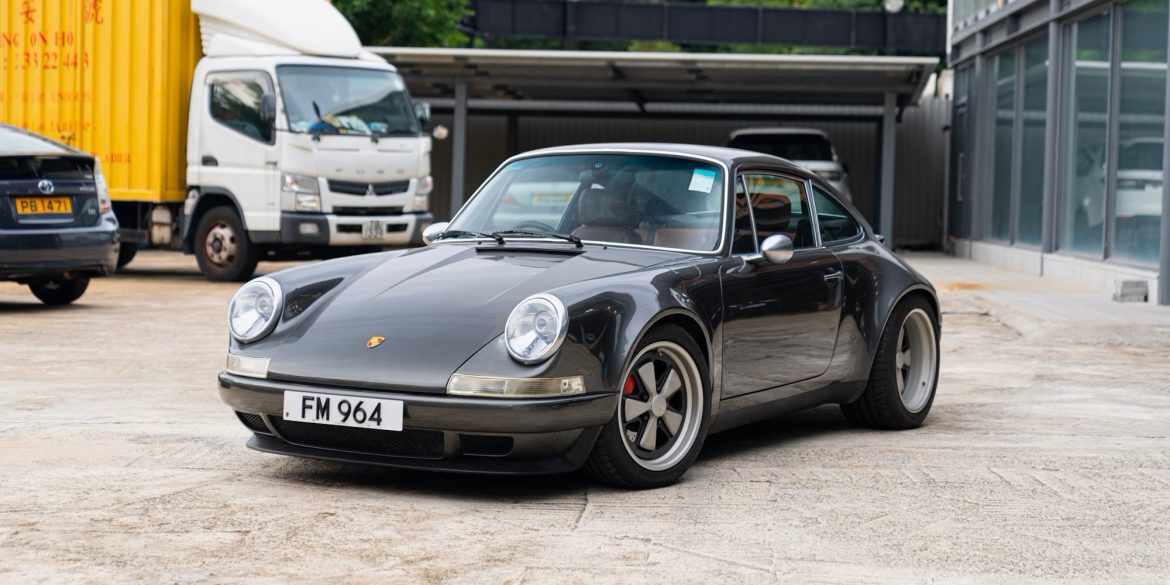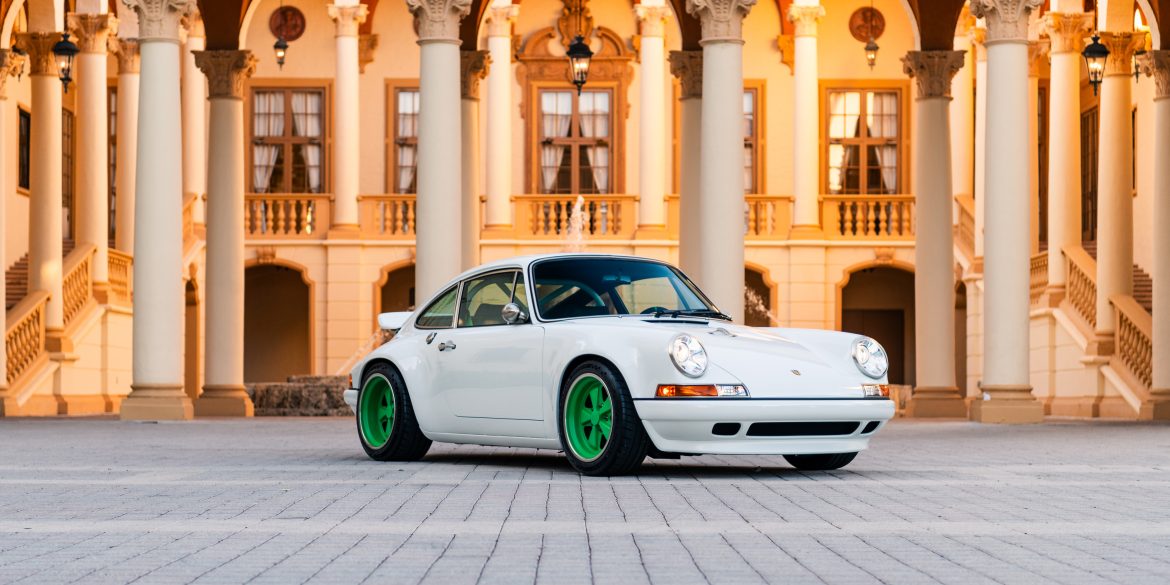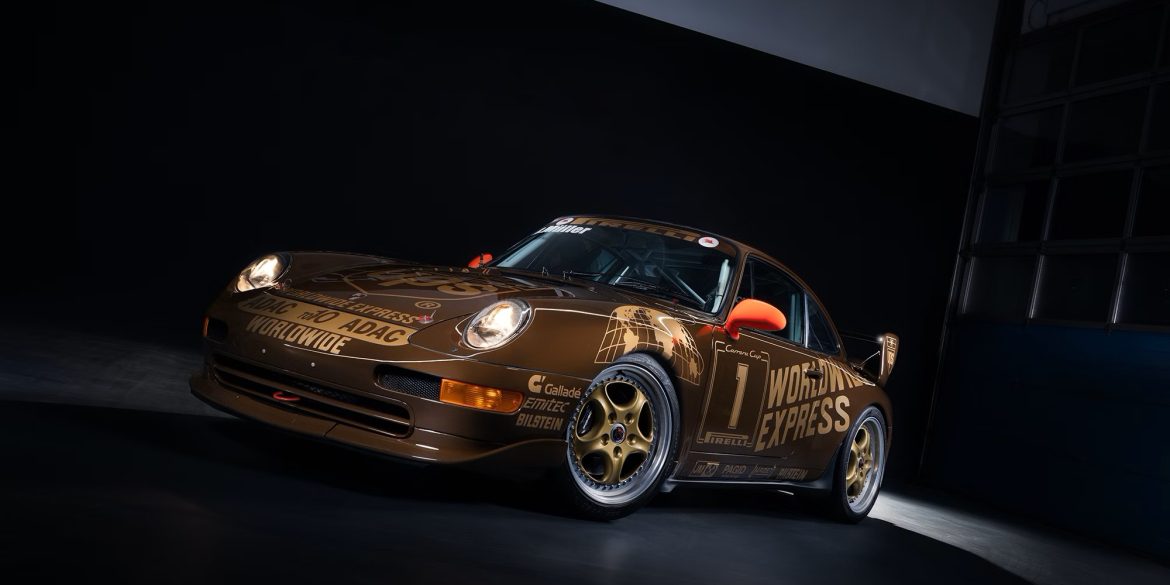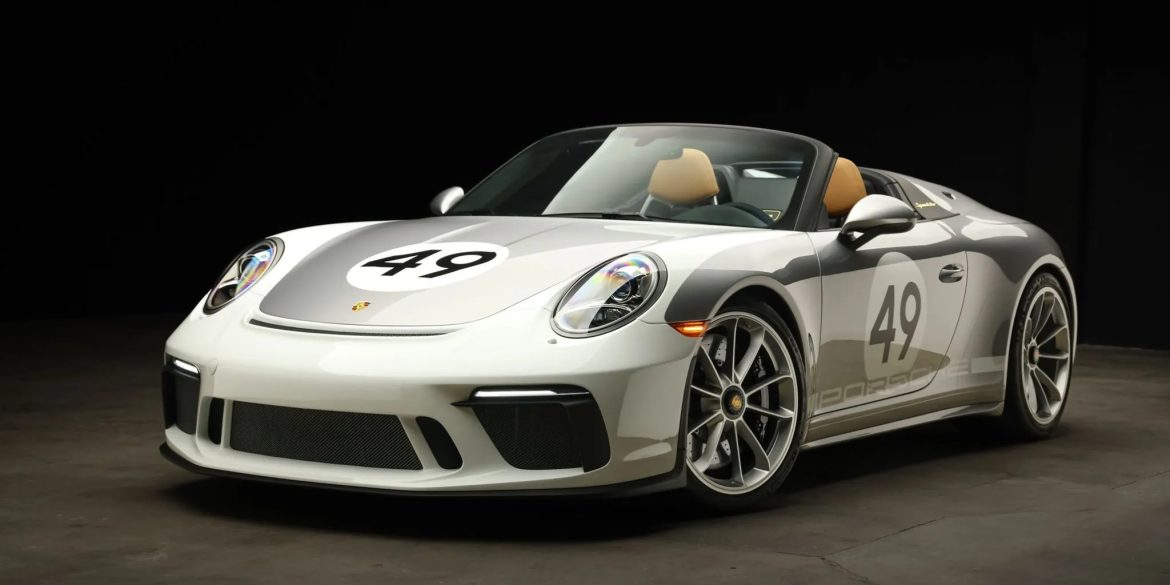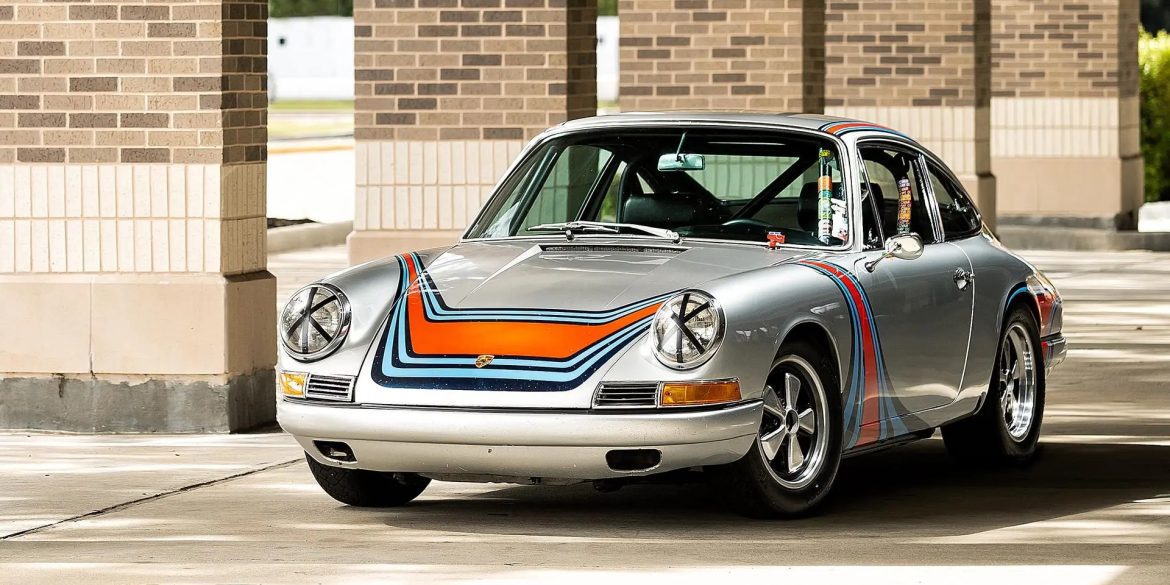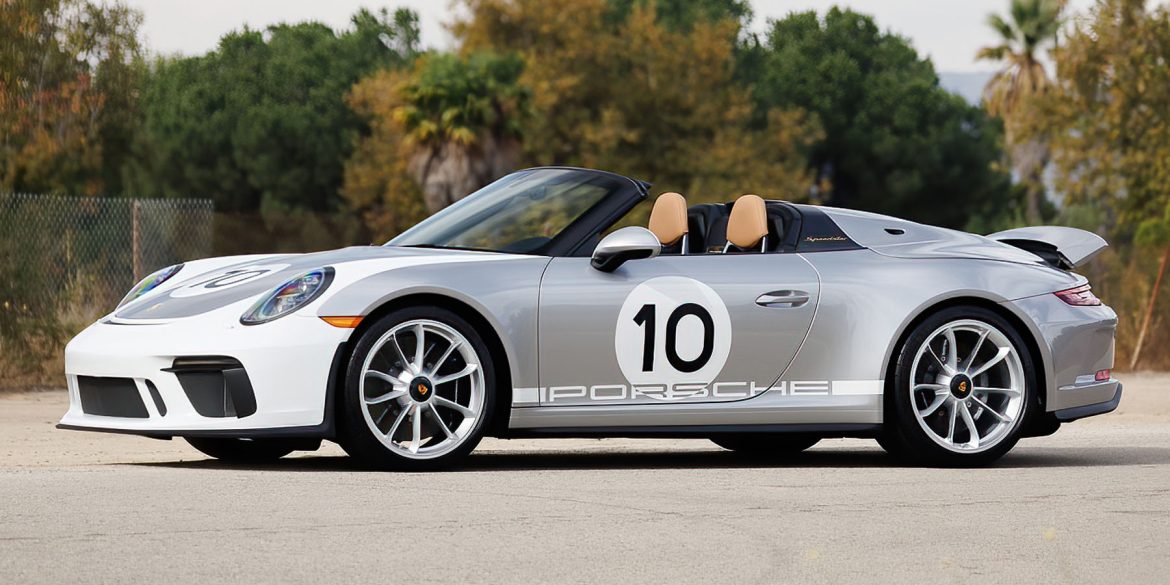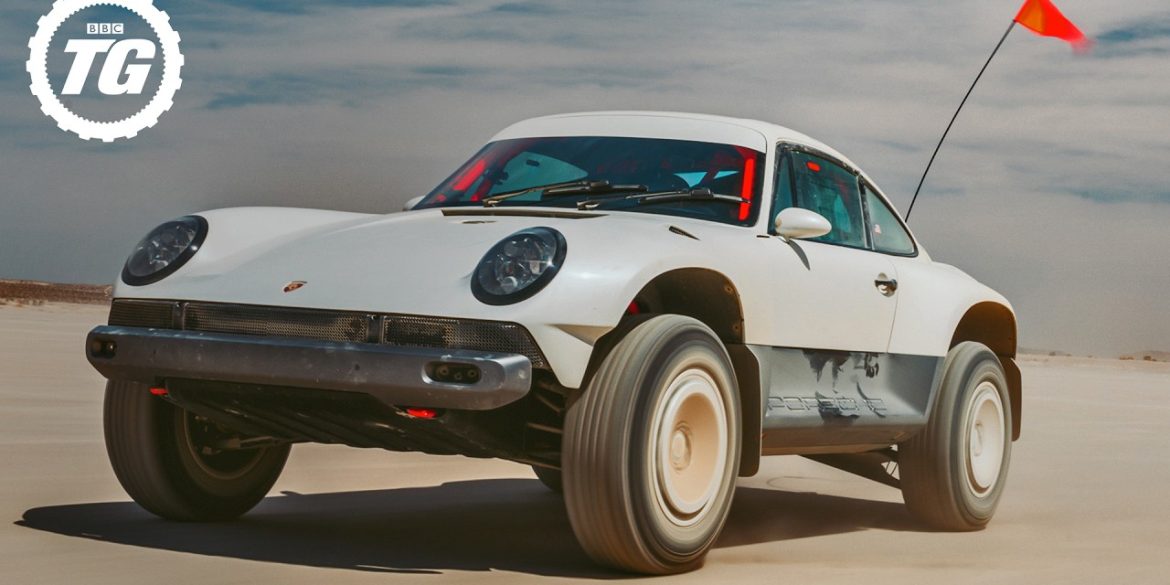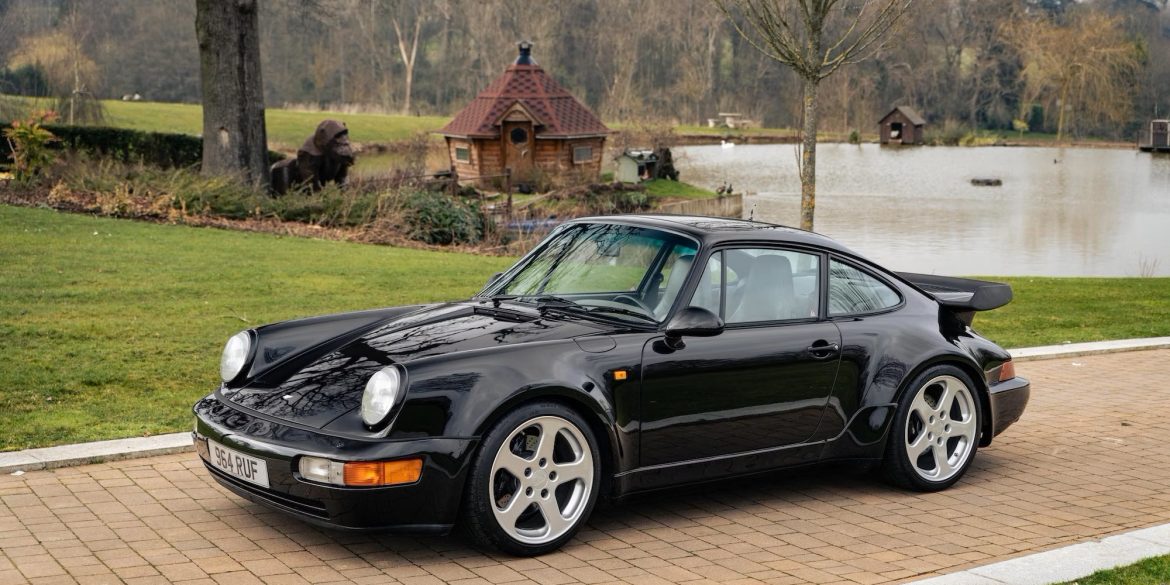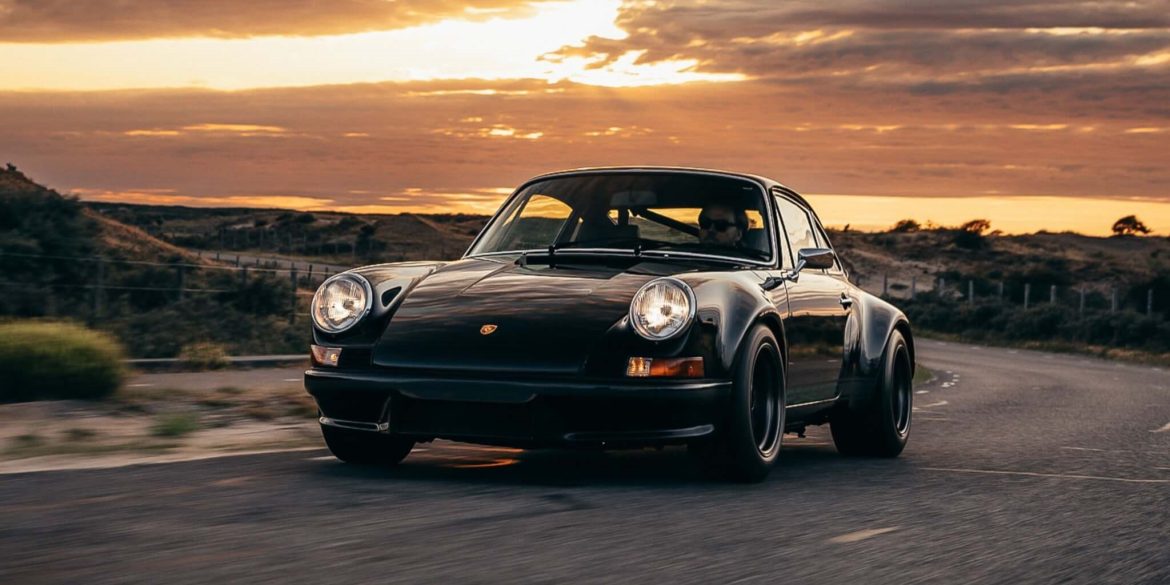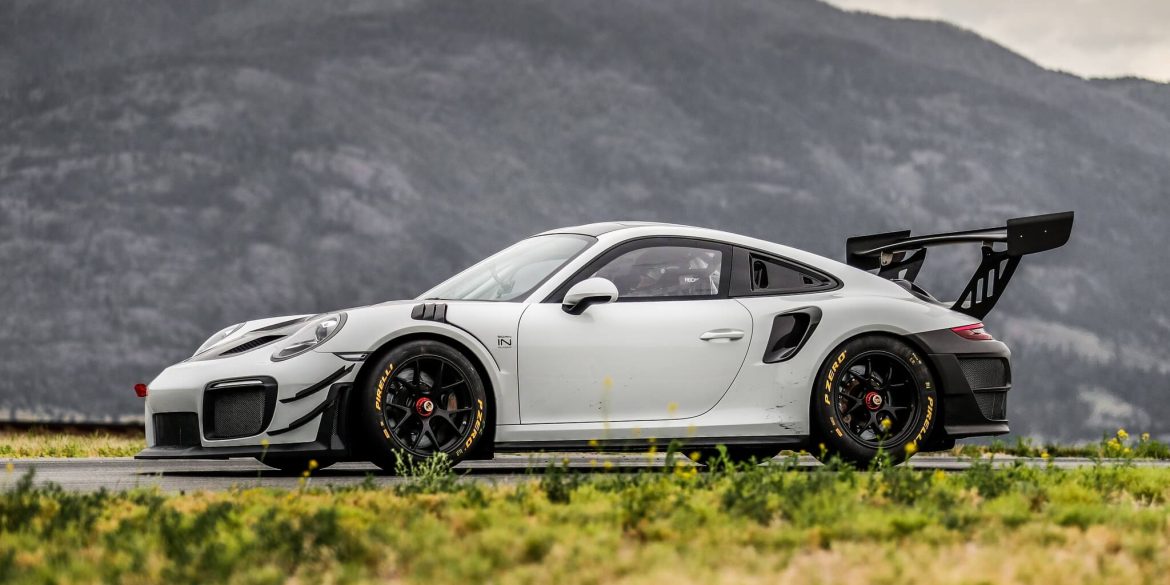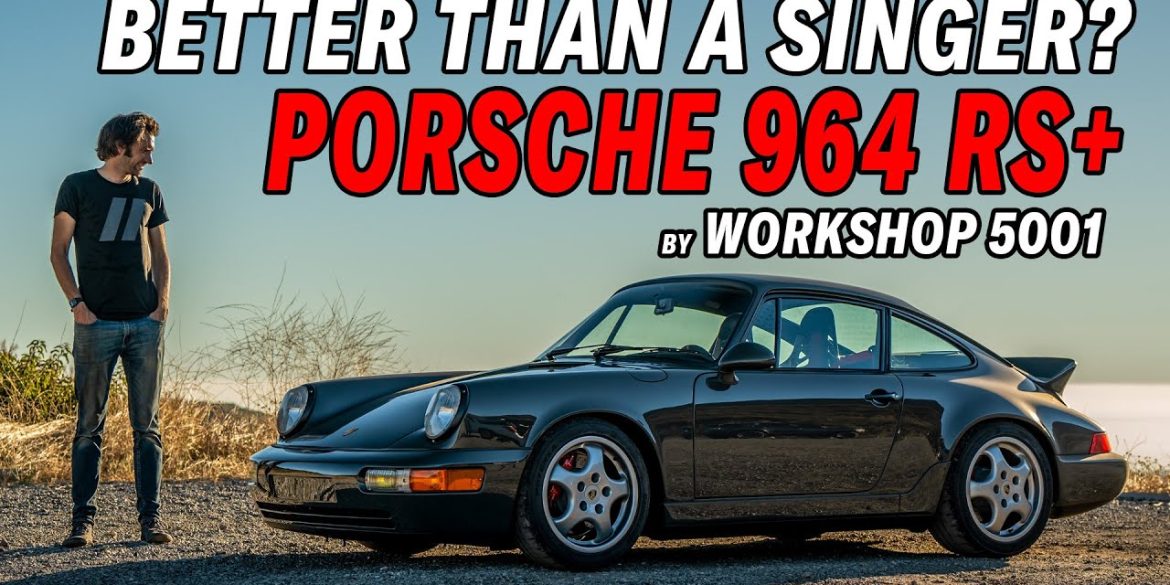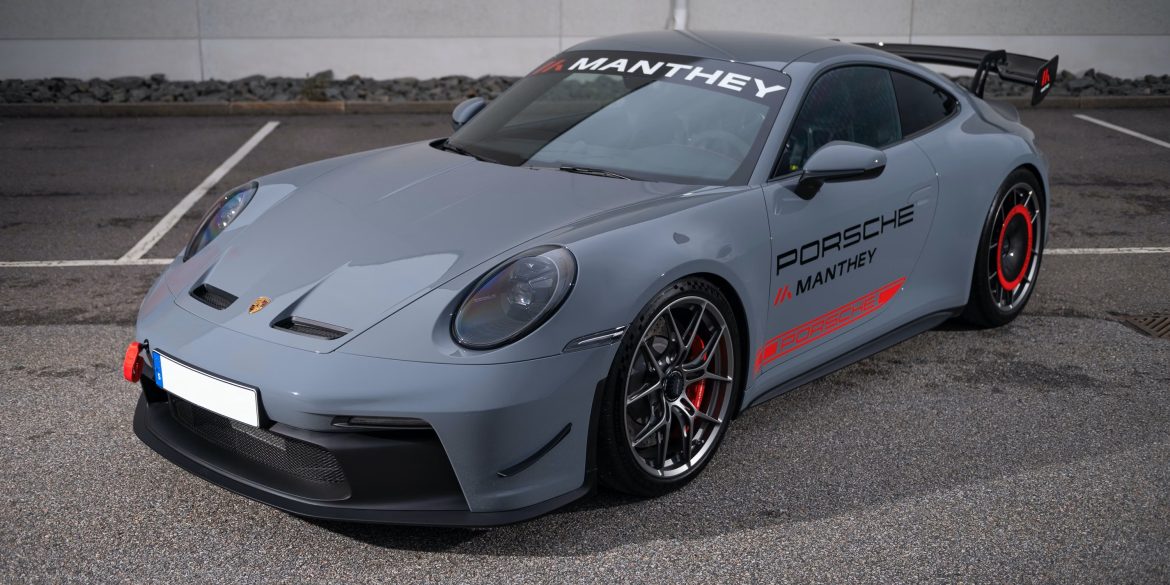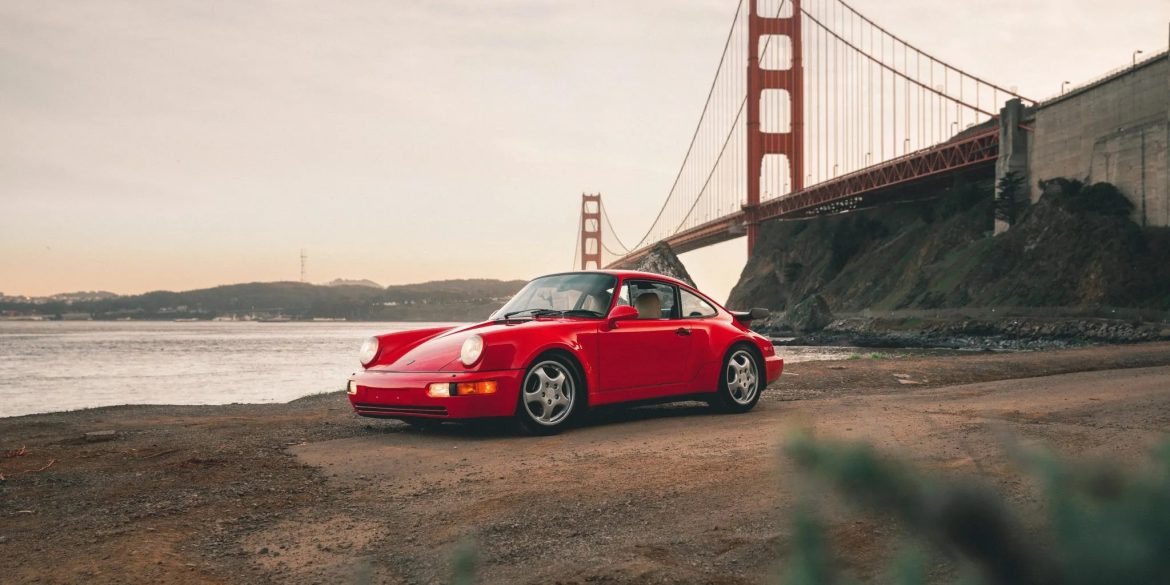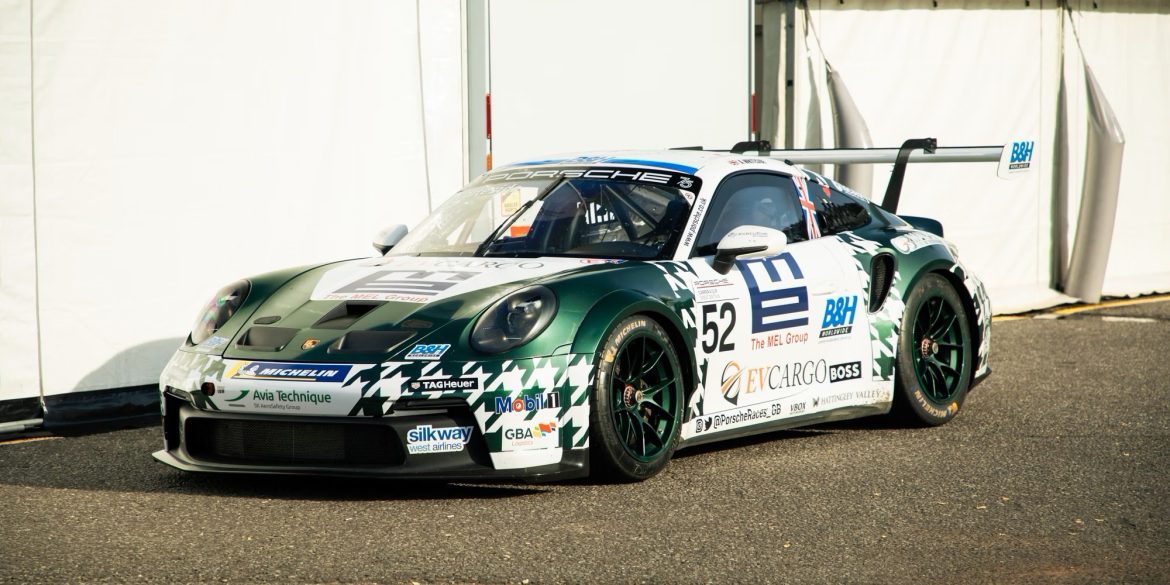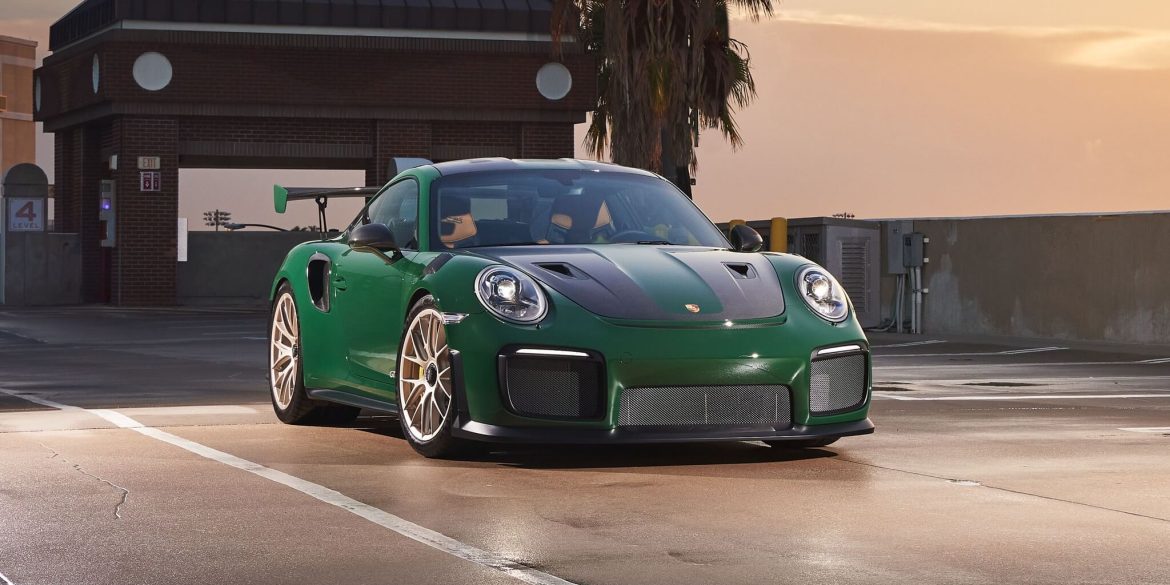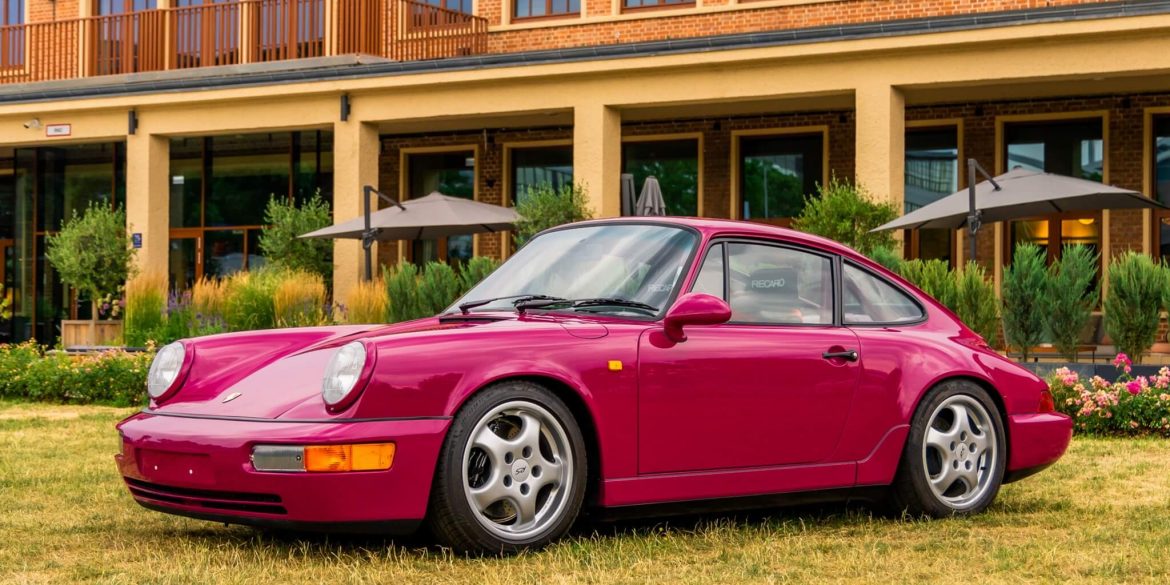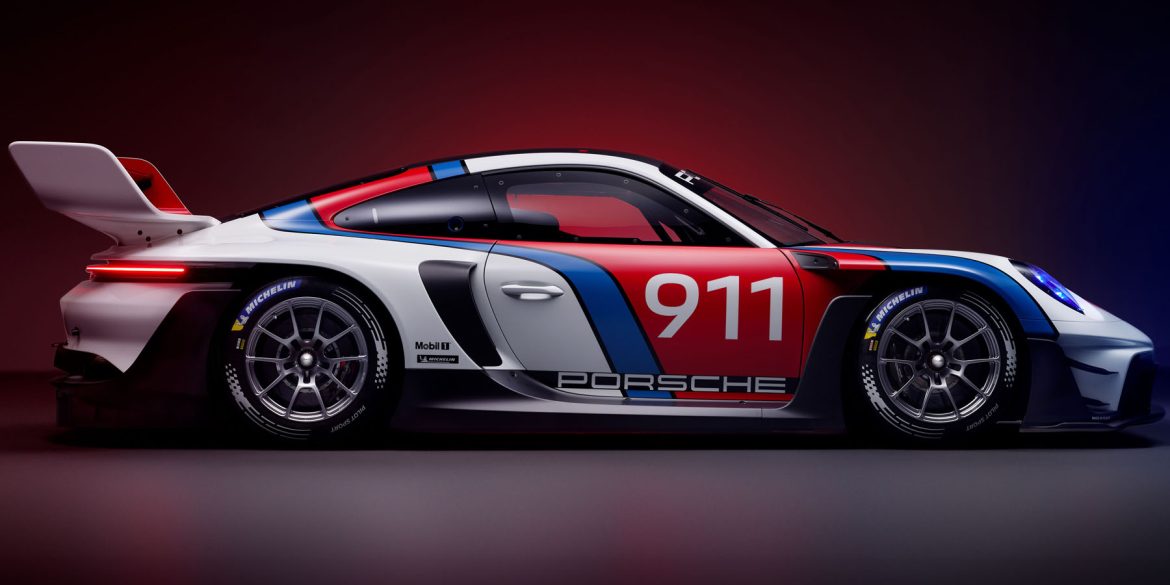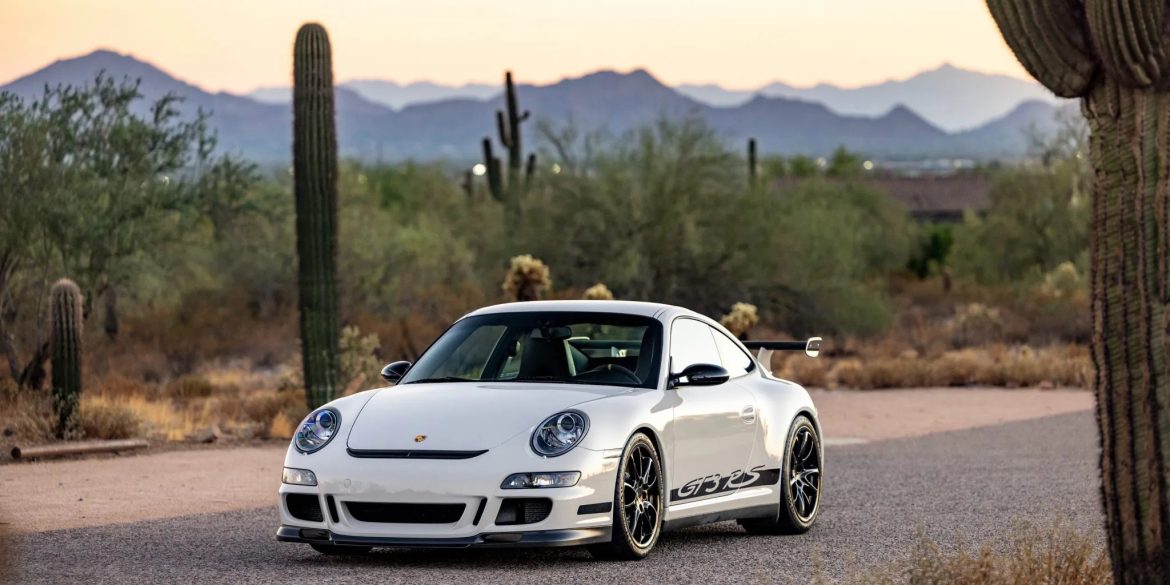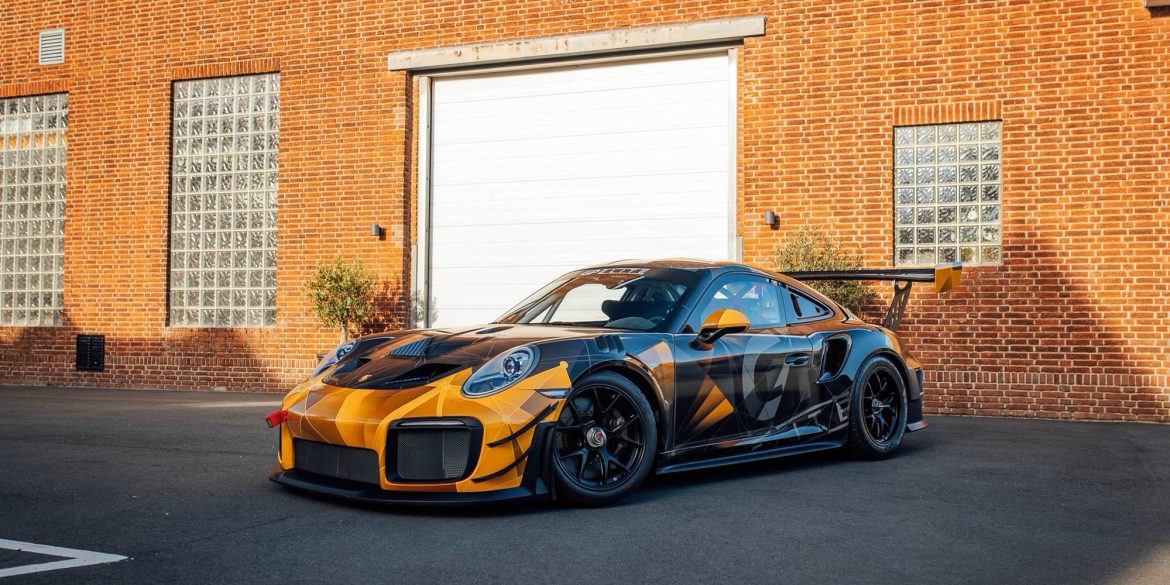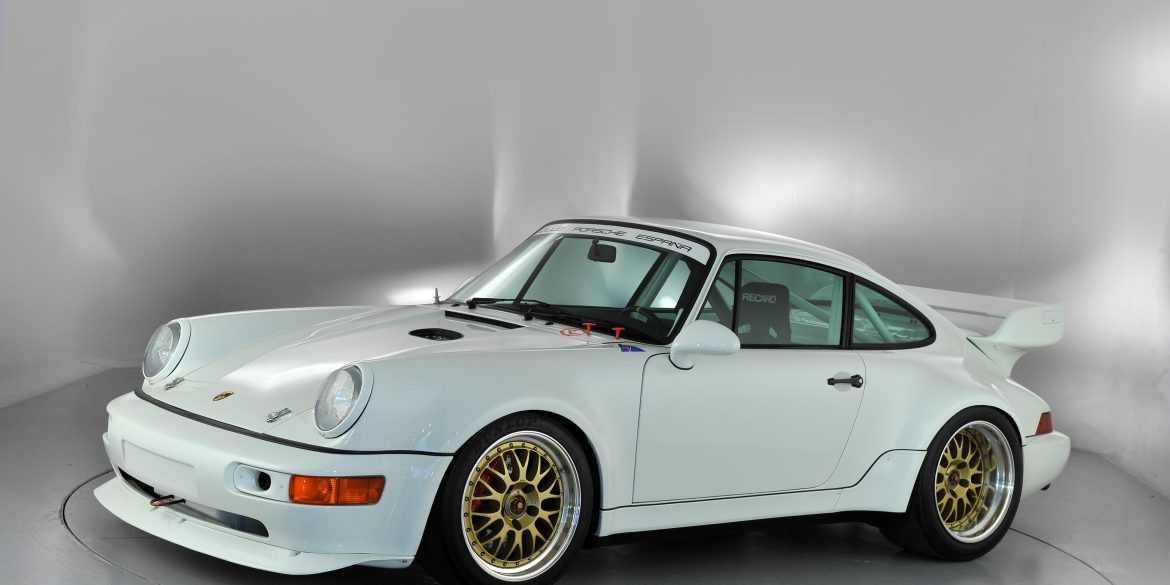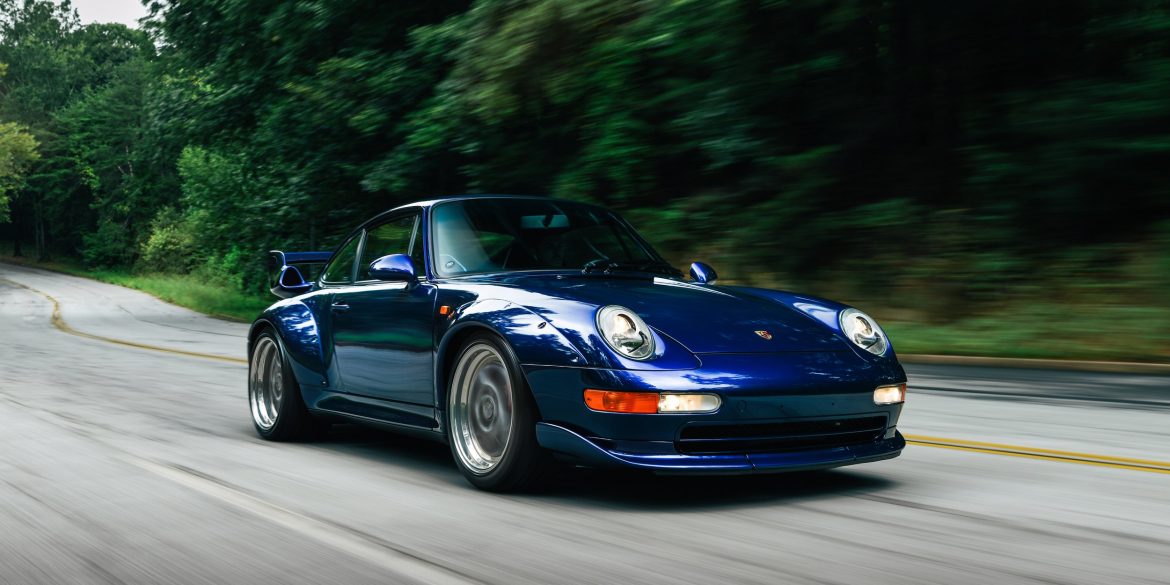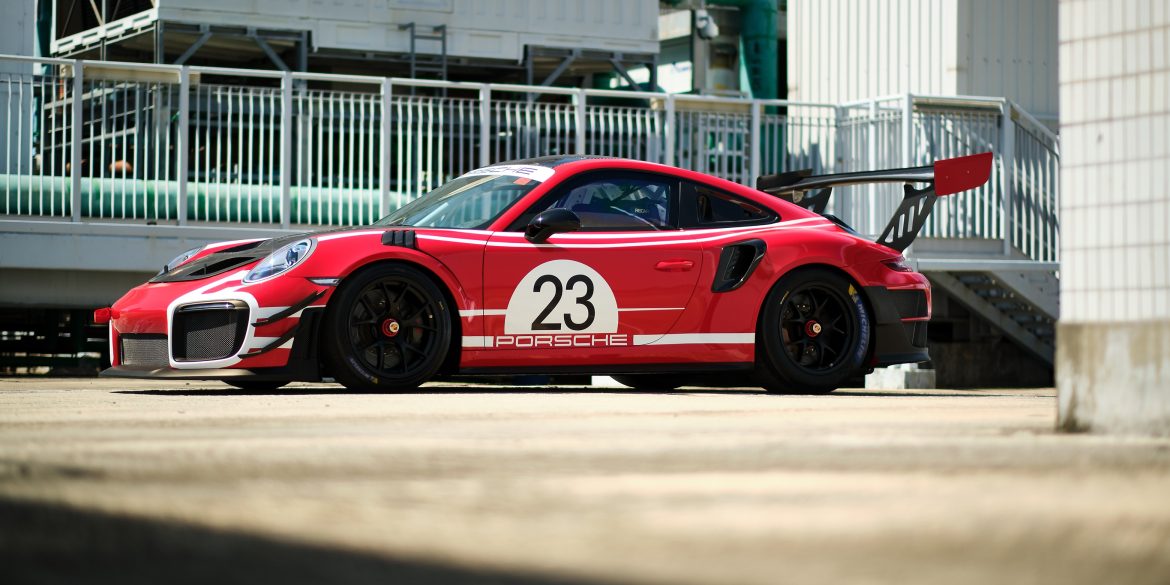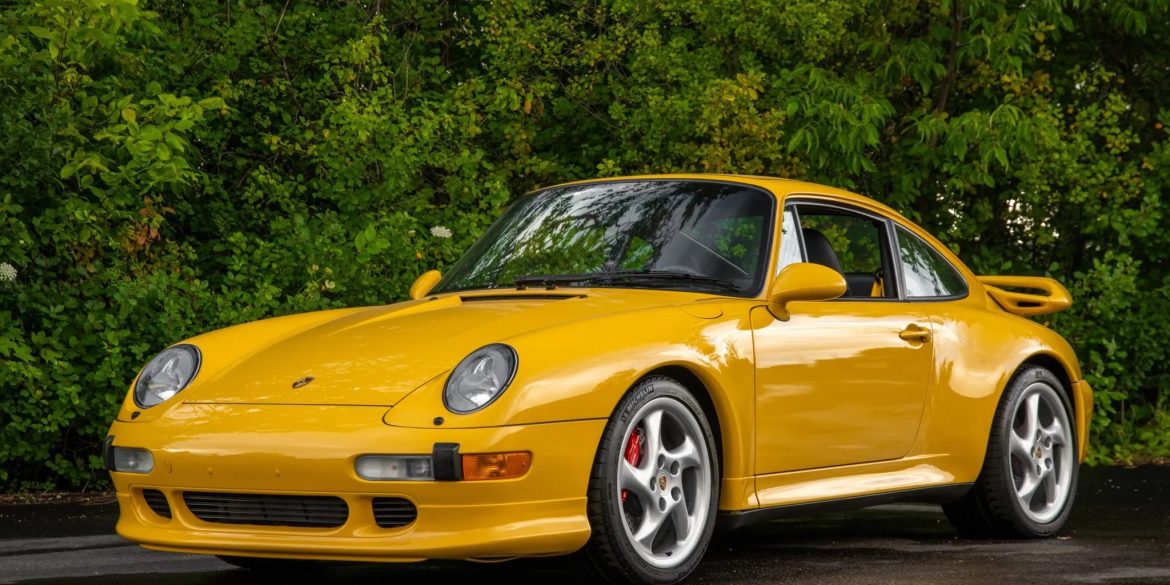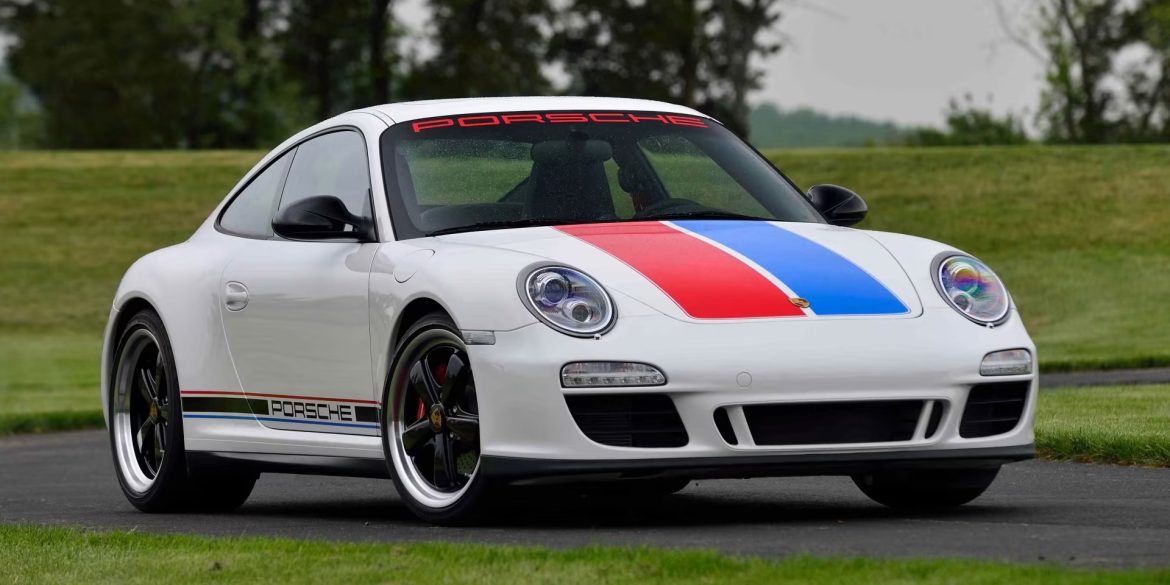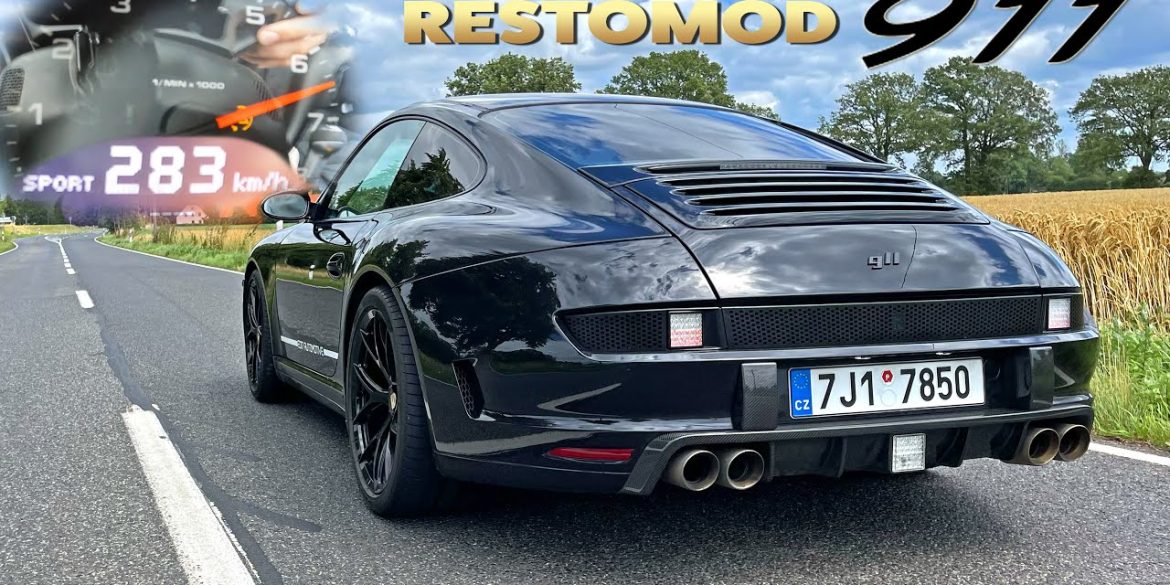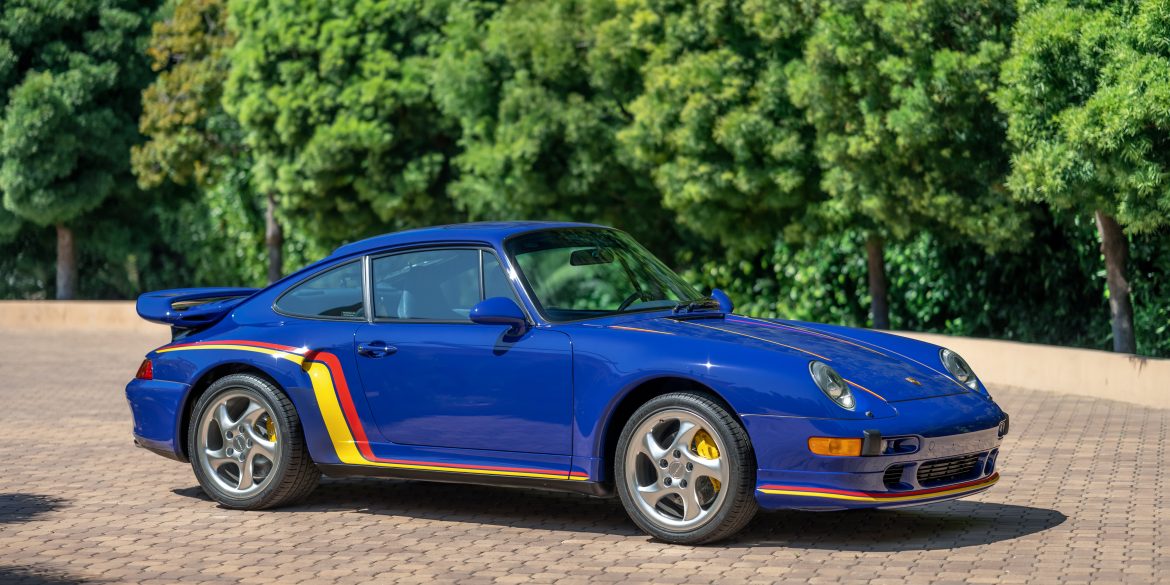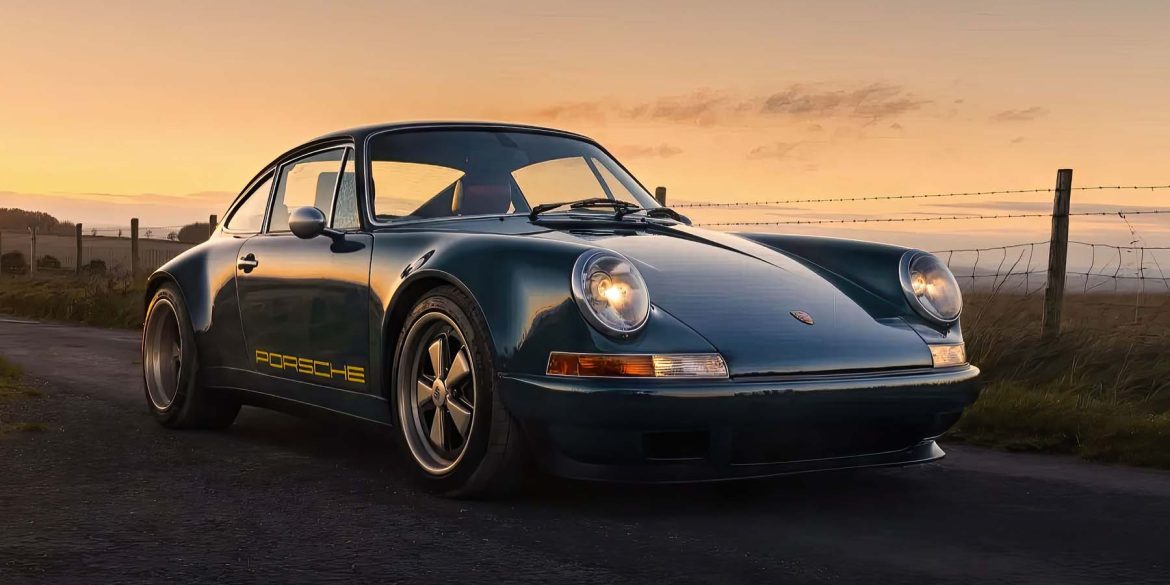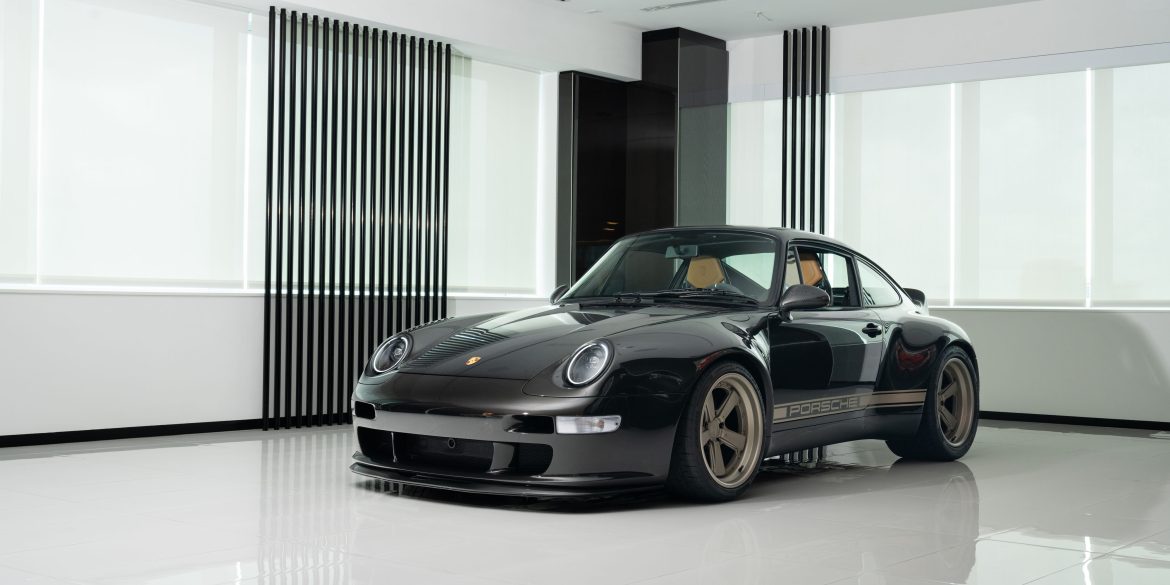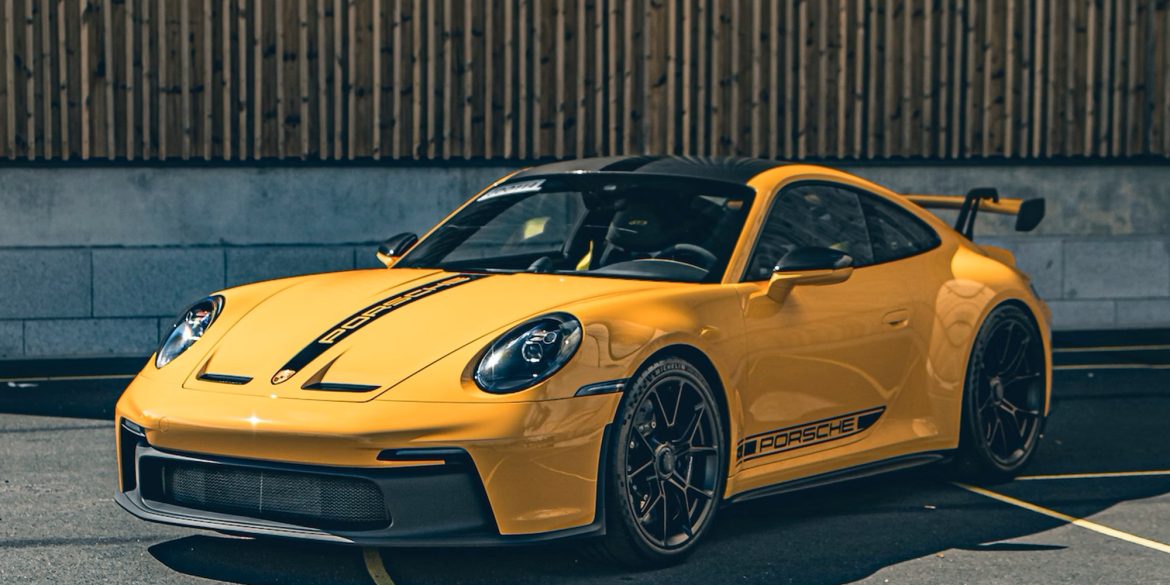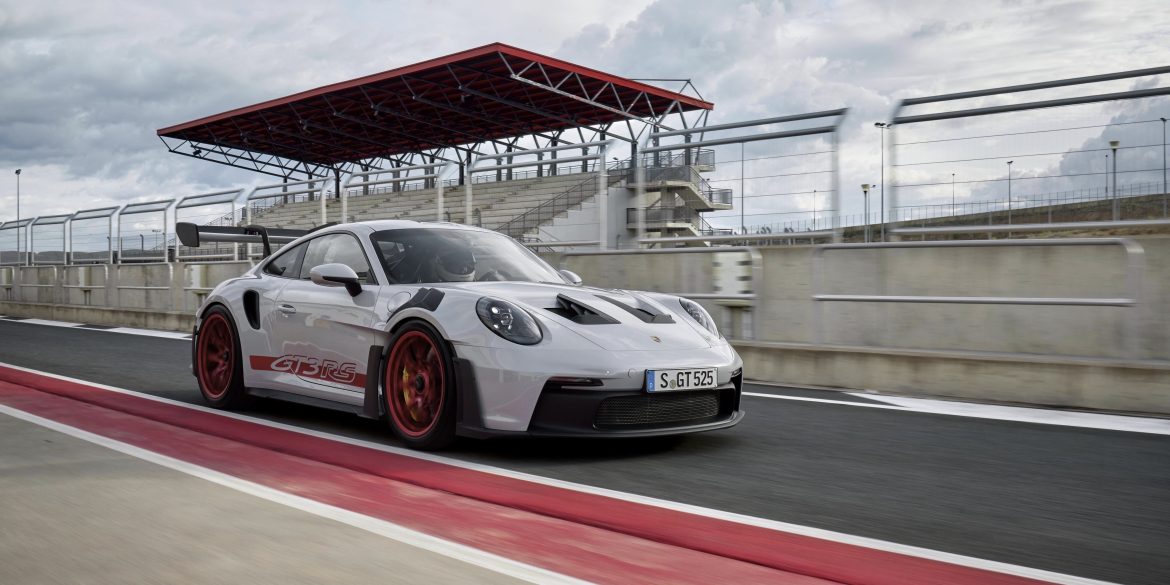The folks from Top Gear recently visited Singer’s UK facility—the birthplace of the Dynamics and Lightweighting Study (DLS) and DLS Turbo—to see their latest creation: the Porsche 911 Carrera Coupe reimagined by Singer. This car starts with a classic 964, stripped to its bare shell and rebuilt with Singer’s obsessive...
238 results for
911 research hub
The Gunther Werks 911 Speedster is a reimagined tribute to the Porsche 993, blending the purity of analog driving with cutting-edge materials and performance technology. Handbuilt in Huntington Beach, California, it features full carbon fiber bodywork, active coilover suspension by DGR, Brembo brakes, an upgraded 6-speed manual transaxle, and a...
The Porsche 911 Speedster is always a landmark release, each version honoring the legacy of the original 1954 356 Speedster. The 991-generation model, limited to just 1,948 units, features a low, raked windshield, double-bubble rear streamliners, and retro gold “Speedster” script. Inside, green-numbered gauges with white needles echo the 356’s...
In 2009, Rob Dickinson—a musician and lifelong Porsche enthusiast—founded Singer in Los Angeles, using the air-cooled 964 as the foundation for his vision of the ultimate 911. What began as a personal pursuit evolved into a benchmark for reimagined restorations, transforming the Type 964 into bespoke creations that surpass traditional...
In 2011, as Porsche prepared to unveil the next-generation 991-series 911, it delivered a final, formidable statement with the 997-based 911 GT2 RS. This extreme variant embodied the pinnacle of Porsche engineering, touted by the company as its most potent and fastest road-legal sports car at the time. The GT2...
In the early 1990s, Porsche sought to showcase its 964 Carrera lineup on the international racing scene. To that end, it produced limited competition-ready versions of both rear- and all-wheel-drive models. Just 22 lightweight C4 coupes were made, while the Carrera 2 platform underpinned the successful Carrera Cup and the...
Commissioned in 2017 by longtime client Scott Blattner, Singer’s Dynamics and Lightweight Study (DLS) aimed to push the 964-generation Porsche 911 to its limits using advanced lightweight materials. Partnering with Williams Advanced Engineering, the project drew on Formula One expertise in aerodynamics, vehicle dynamics, and materials. Only 75 units were...
One of just 600 ever made, this 2011 Porsche 911 GT3 RS 4.0 has only 319 miles and is among the most revered models of the 997 generation. Seen as a spiritual successor to the legendary 1973 911 Carrera RS 2.7, it is currently up for grabs on PCARMARKET. Most...
Singer Vehicle Design is at the forefront of restoring and reimagining 1989–1994 Porsche 911s based on the 964 chassis. One exceptional example of their creation is the “Blueberry,” a 1991 Porsche 911 Carrera 4 Targa transformed by Singer Vehicle Design that is also currently up for sale on Broad Arrow’s...
Singer has definitely earned its place as perhaps the most respected name in the restoration and reimagining of Porsche 911s from 1989 to 1994, all based on the 964-generation chassis and tailored to the exacting standards of its elite clientele. Offered through RM Sotheby’s upcoming Sealed Drop auction is a...
Few dispute the Porsche 911’s status as the ultimate sports car, having evolved continuously for over 60 years—from its original 2.0-liter coupe to today’s high-performance variants. Still, Los Angeles musician and Porsche fan Rob Dickinson believed there was more potential. In 2009, he founded Singer, transforming the air-cooled 964 into...
Few dispute the Porsche 911’s status as the ultimate sports car, having evolved continuously for over 60 years—from its original 2.0-liter coupe to today’s high-performance variants. Still, Los Angeles musician and Porsche fan Rob Dickinson believed there was more potential. In 2009, he founded Singer, transforming the air-cooled 964 into...
The Porsche 911, one of the world’s most celebrated sports cars, has been in production for over 50 years across eight generations, with more than a million units built. Over time, enthusiasts and tuners have modified countless 911s, but few have perfected it like Singer. Founded in Los Angeles in...
Originally a 1991 Porsche 911 Carrera 2 coupe, this car was meticulously modified by Singer Vehicle Design in 2023 as part of a commissioned build known as the “Space City Commission.” Singer, founded by Rob Dickinson in 2009, specializes in transforming 964-generation 911s into high-performance, handcrafted works of art. This...
When unveiled in February 1993, the Porsche 911 Turbo 3.6 was the most powerful production model Porsche had ever offered in North America. This rear-wheel-drive, widebody 911 featured a single turbocharger and delivered an impressive 355 horsepower. Porsche achieved this by turbocharging the 964’s updated M64 3.6-liter engine, replacing the...
Commissioned in 2017 by longtime Singer client Scott Blattner, the Dynamics and Lightweight Study (DLS) sought to push the limits of the 964-generation Porsche 911 using advanced lightweight materials. Limited to just 75 units, the DLS extensively employs carbon fiber, magnesium, and titanium, resulting in a curb weight of just...
The “Mame Commission” Singer DLS is a rare, meticulously crafted reimagination of the 964-generation Porsche 911, created by Singer Vehicle Design as part of their Dynamics and Lightweight Study (DLS). With only 75 examples produced, this particular car remains in virtually new condition, showing just 182 miles on the odometer....
In 1993, Porsche introduced the Type 993, widely considered the most stunning 911 ever made. The lineup remained familiar, including two- and four-wheel drive variants, the iconic Turbo, and the Cabriolet convertible, all powered by an updated 3.6-liter flat-six engine. In early 1995, Porsche expanded the range with the Carrera...
RM Sotheby’s is offering a rare 1997 Porsche 911 Turbo S, estimated to fetch up to $525,000 at their Arizona auction scheduled this week. With only 183 examples built for North America, this model is among the rarest and most desirable Porsche 911s. The Porsche 993 series, introduced in 1993,...
The Porsche 991 Speedster debuted as a concept in 2018 to commemorate the brand’s 70th anniversary. By 2019, it evolved into a sought-after production car, with 1,948 units produced—a nod to the year Ferry Porsche introduced the first 356. Powered by a GT3-derived 4.0-liter flat-six engine paired with a six-speed...
Singer Vehicle Design, founded in Los Angeles in 2009 by former musician and Porsche 911 enthusiast Rob Dickinson, aims to create the ultimate air-cooled 911 by blending design and engineering elements from various air-cooled generations. Using the Porsche 964 as a foundation, Singer offers customers a choice of coupe or...
Porsche 911s, particularly the iconic 964 generation, are revered for their timeless design, intoxicating engine note, and unparalleled driving experience. But what happens when you strip away these fundamental elements and replace them with electric power? Enter the Everrati Evergreen, a reimagined Porsche 911 Type 964 has gone through a...
Founded in Los Angeles in 2009 by Rob Dickinson, a former musician and 911 enthusiast, Singer set out to create the ultimate air-cooled Porsche 911, blending features from various air-cooled generations. Starting with a base 964, customers can choose between coupe or Targa, rear- or all-wheel drive, and several engine...
This 2011 Porsche 911 GT3 RS 4.0, listed for sale on Bring a Trailer, is one of just 600 examples built and has only 144 original miles on the odometer. Part of the 997 generation, the GT3 RS 4.0 holds a revered spot in Porsche’s Rennsport lineage. Much like the...
The new Porsche 911 GT3 Cup is the first race car based on the current 911 model series 992. Like everything at Porsche Motorsport, the seventh race car generation is equally as committed to sporting success – it’s a tradition after all. Since 1990, Porsche has built and sold more...
The 2019 Porsche 911 Speedster represents the final—and by many accounts, the finest—version of the highly regarded 991 generation, limited to just 1,948 units as a tribute to the year Porsche began production. Unlike Porsche’s minimalist roots, this Speedster is packed with exclusive features, including a lightweight, manually operated fabric...
The sixth generation of Porsche’s iconic 911, known as the 997, debuted in 2005. While it kept the familiar shape of its predecessor, the design drew inspiration from the earlier 993 model, notably restoring the original bug-eye headlights. The interior was similarly refreshed, blending modern elements with a clear nod...
From 1974 to 1976, Porsche introduced a limited number of high-performance lightweight Carreras, exclusively for the European market. Known as “Euro Carreras,” these cars were equipped with the famous Type 911/83 2.7-liter engine, producing 210 horsepower with Bosch mechanical fuel injection (MFI) – the same engine that powered the iconic...
The Speedster, introduced in 1989, completed Porsche’s soft-top 911 lineup by reviving a charismatic model from the brand’s past. The name had originally been used for the sleek Type 356 variant. The concept of a new Speedster first took shape in 1983 with a prototype that never reached production. The...
This rare Porsche 911 Type 964 variant, the Carrera RS 3.8 which is currently offered for sale on Bring A Trailer, was produced in very limited numbers, with only 55 units built towards the end of the 964’s production. Based on the Carrera Cup race car, the RS 3.8 featured...
Singer Vehicle Design, established in Los Angeles in 2009, has gained worldwide acclaim for its masterful restorations of air-cooled Porsche 911s. Starting with a 964-generation base, Singer meticulously reimagines each car by blending iconic design elements from different Porsche eras to create a truly unique masterpiece. One such creation is...
The 993 generation gave us some great Porsches. You had the 993 Turbo which was a straight line weapon and executive torque monster. Then there was the 993 GT2, a real beast of a car (in a good way) that should have come with warning stickers taped all over it....
The 993 generation gave us some great Porsches. You had the 993 Turbo which was a straight line weapon and executive torque monster. Then there was the 993 GT2, a real beast of a car (in a good way) that should have come with warning stickers taped all over it....
The 993 Carrera 4S, available from 1995 to 1998 as a 1996 model year onward, was a unique addition to the Porsche lineup. It took the powertrain of the 993 Carrera 4 and housed it in the widebody 993 Turbo shell, featuring 18″ alloy wheels. This model was equipped with the same 3.6-liter naturally...
The 2019 Porsche 911 Speedster represents the final and, arguably, the finest version of the 991 generation, limited to just 1,948 units—a nod to Porsche’s founding year. Unlike Porsche’s minimalist origins, this Speedster is filled with custom features, including a manually operated fabric roof and distinctive double-bubble streamliner covers. Weight-saving...
Merit Partners is proud to offer the 1989 Porsche 911 Singer Phoenix Commission with 3,370 miles on the odometer. Founded in Los Angeles in 2009, Singer is celebrated worldwide for its bespoke restorations of Porsche 911 sports cars, each meticulously crafted for its owner. Using a 964-generation Porsche as the...
Singer Vehicle Design, based in Los Angeles, was established in 2009 by Rob Dickinson, former lead singer of Catherine Wheel. The company specializes in high-performance customizations of 964-series Porsche 911s. Each vehicle undergoes a meticulous restoration, where it’s stripped to its steel frame, reinforced, and fitted with lightweight carbon-fiber panels,...
This Porsche 911 reimagined by Singer, known as The “Denmark Commission,” showcases a stunning and meticulously crafted design. Finished in Rome Red Metallic, this 911 pays tribute to the red rooftops and brick streets of Copenhagen’s Indre By neighborhood. Underneath the striking exterior lies an extensively upgraded chassis, including a completely...
The Type 993 is frequently regarded as the most stunning 911 ever created. Its range included familiar variations such as two- and four-wheel drive models, the iconic Turbo, and the Cabriolet, all powered by a 3.6-liter flat-six engine. Introduced in 1995, the Type 993 Turbo was Porsche’s first production car...
One of the rarest Porsche 930 models was the hand-built 505-option ‘Flachbau’ or slant nose. This special-order Porsche package was inspired by the iconic twin-turbocharged 935 race cars and featured significant aerodynamic upgrades beyond the standard 930. The modified front end was part of a comprehensive set of enhancements designed...
The 993-generation Porsche 911 may have marked the end of the air-cooled era, but it also ignited a booming market for custom air-cooled Porsches. Among the leading firms in this niche is Gunther Werks, based in Huntington Beach, California, known for taking the 993 to new heights. Gunther Werks transforms...
Restomodding Porsches has surged in popularity over the last couple of years, thanks to companies like Singer Vehicle Design, Gunther Werks, Kalmar and many more, who have reimagined the classic 911. The market for these customized restorations spans a wide range of prices, and with the segment’s growth, more companies...
Well, that didn’t take long. In February, Singer Vehicle Design celebrated its 300th restoration work, a Porsche 911 reimagined by Singer – Classic Study. That exact vehicle has now popped up for sale on RM Sotheby’s online site. Dubbed the ‘Sotto’ Commission by the owner, the Porsche started out as...
Singer Vehicle Design, based in California, is known for its meticulous restoration of air-cooled Porsche 911s, particularly those of the 964 generation. Established in 2009, Singer’s restorations blends elements from the 1960s through the 1990s into each bespoke creation. Singer’s Classic restoration service offers Porsche owners the opportunity to transform...
The 991, introduced in 2011, marked a significant evolution of the iconic 911. It was wider and longer than its predecessor but retained the classic 911 design. Key improvements included a longer wheelbase and a rear-mounted engine for better handling. Both manual and dual-clutch automatic transmissions were offered. The 991...
Singer’s latest creation celebrates the iconic Porsche 911 by turbocharging it and basing it on the 930 Turbo from the mid-1970s, using a 964 chassis. It boasts 450 to 510 brake horsepower, depending on the specs. Options include a super lightweight model at 1,220 kg or a more luxurious version....
The 2019 model year concluded the seventh-generation 911 production. To celebrate this milestone, Porsche introduced the GT2 RS Clubsport as the grand finale of the 991 series. Debuting at the LA Auto Show in 2018, alongside the new 992-generation 911, the GT2 RS Clubsport became Porsche’s most powerful GT customer...
The GT3’s essence has always been that of a race car with just enough equipment to be street legal. For Porsche enthusiasts, the GT3 offers the most authentic driving experience. The 2010 Porsche 911 GT3, known internally as the 997.2, holds a special place in the model’s history. Significantly improved...
The Porsche 911 GT2, primarily built for racing but still road-legal, has a lineage tracing back to the iconic 1973 911 Carrera RS. Named after the FIA’s GT2 category, it debuted in 1993 with the Type 993 model, which many consider the most beautiful 911. First seen in prototype form...
Unveiled in 2019, the Porsche 991 Speedster was the final edition of the 991 generation, built to celebrate 70 years of Porsche. This convertible combined the performance of the GT3 with the open-air feel of a Carrera. Only 1,948 units were made and all of them were quickly sold out....
In 1995, Porsche adapted to the evolving landscape of international GT racing with a series of homologation specials, starting with the naturally-aspirated 911 RS and concluding with the GT2 Evo. Based on the 911 Turbo, the GT2 featured a twin-turbocharged engine initially delivering 424bhp, later boosted to 444bhp. It achieved...
This AutoTopNL video on YouTube showcases the incredible speed and sound of a unique Porsche 911 restomod built by CSF Radiators. This exceptional vehicle was crafted by CSF Radiators for the 2021 SEMA show, one of the world’s most iconic auto shows, particularly for tuned cars. It began as a...
The GT3 RSR, based on the Type 997, featured the latest version of the classic flat-six engine. In 2009, it underwent subtle revisions, adding more hood vents and optimizing air flow through the fascia and hood. Despite air-restriction rules limiting the updated M97/81 engine to 455 brake horsepower, the enlarged...
In 1993, Porsche introduced the Type 993, considered by many as the most beautiful 911. After years of aerodynamic and safety modifications, the 993 marked a return to the 911’s original design purity, harmoniously integrating all functions. The range included two- and four-wheel-drive models, a Cabriolet, and the new 1997...
The Porsche 911 is a legendary car, revered for its timeless design, exceptional performance, and exhilarating driving experience. It also offers a spectrum of driving experiences, from the attainable enthusiast’s dream like the Porsche 996 to the pinnacle of track-focused performance, the 991 GT3 RS. The 996 strikes a balance...
Earlier this morning, Porsche unveiled the first models of the new Type 992.2 911, the Carrera Cabriolet and Coupe, and the Carrera GTS T-Hybrid. However, when something is all-new and upgraded, one question always comes up: What, exactly, is all-new and upgraded on the 992? Fret not, for we have...
The 2019 model year marked the end of seventh-generation 911 production. To commemorate this, Porsche introduced the GT2 RS Clubsport as the 991’s grand finale. Unveiled at the LA Auto Show in 2018, alongside the new 992-generation 911, the GT2 RS Clubsport became Porsche’s most powerful GT customer sports car...
In 1993, Porsche introduced the Type 993, widely regarded as the most user-friendly and elegantly designed 911. Over the years, the 911 had accumulated numerous aerodynamic and safety enhancements, which had somewhat compromised its original design purity. The Type 993 marked a return to the 911’s foundational principles, presenting a...
Gunther Werks, established in 2017 by the team behind Vorsteiner, took the iconic air-cooled Porsche 993 and crafted a modern masterpiece – the Gunther Werks Coupe. Limited to just 25 units, each Coupe is entirely one-of-a-kind. The process begins by stripping a donor 993 to its core. The shell is...
Rob Dickinson, founder of Singer Vehicle Design, has transformed his childhood obsession with Porsche 911s into a company crafting automotive masterpieces. Singer takes classic air-cooled 911s and reimagines them, combining bespoke parts, top-tier mechanics, and luxurious finishes. One of their creations, the ‘San Diego Commission,’ is up for grabs on...
Tuthill Porsche has earned acclaim in the rally world, transforming road cars into formidable rally beasts. Notably, they collaborated with Ken Block’s team on a Porsche 911 SC “Safari Rally Car” and partnered with Singer to craft the ultimate off-road 911: the Singer 911 ACS. Their latest venture, the Tuthill...
The demise of the FIA World Sportscar Championship in 1992 left a void in international GT racing, but the emergence of the BPR Global GT Endurance Series breathed new life into the sport. Porsche, eager to compete in this revitalized arena, unveiled the GT2, a high-performance racing car based on...
The 992 GT3 becomes the seventh iteration of one of Porsche’s most established and beloved automobiles and it continues to embody the spirit of previous GT3 models by amalgamating all that is awesome about the 911 – and the Porsche brand – in a single road car. And as always,...
Those who are of the traditional, air-cooled Porsche camp, turn away now, because there is nothing you’re going to like in this announcement. For everyone else, as reported by Top Gear, Porsche has confirmed that the plan to hybridize the Type 992 911 will come to fruition in just a...
Celebrating their 70th anniversary, Porsche unveiled the Type 991.2 Speedster concept at the 2018 Paris Motor Show, marking a significant milestone in automotive history. The production model made its debut at the New York Auto Show in April 2019, marking the culmination of the 991 family’s legacy, with deliveries commencing...
Unveiled alongside the 992-generation 911 at the 2018 Los Angeles Auto Show, the 911 GT2 RS Clubsport marked the culmination of the 991 series. It represented a finely honed, track-focused variant of the road-going 911 GT2 RS, positioned as Porsche’s premier GT customer sports car. Packing an impressive 700 horsepower,...
The 993 generation gave us some great Porsches. You had the 993 Turbo which was a straight line weapon and executive torque monster. Then there was the 993 GT2, a real beast of a car (in a good way) that should have come with warning stickers taped all over it....
This 993-generation Porsche 911 coupe was modified by renowned Porsche tuner Akira Nakai, who fitted it with a 17-piece RWB widebody kit. This modification was inspired by the remarkable success of the first Los Angeles-based RWB 911 build, which garnered over one million views on YouTube. The RWB kit comprises...
Many consider the 2024 Porsche 911 S/T as the ultimate Porsche 911 as it combines the best features from various 911 models, boasting the potent engine from the GT3 RS, a manual transmission, and an extremely limited production run. At the heart of the 911 St lies a potent powertrain...
Theon Design is rapidly establishing itself as a prominent figure in the realm of 911 restomods, specializing in the 964-generation Porsche 911 from 1989 to 1994. Founded by Englishman Adam Hawley, who brings an impressive technical background to the table, having served as a designer for over 15 years prior...
Established in Los Angeles in 2009, Singer Vehicle Design is a prominent figure in reimagining Porsche 911s from the 964-generation according to the preferences of their esteemed clients. Just like all other Singer creations, this reimagined 1991 Porsche 911, set to be auctioned by RM Sotheby’s from March 1-2, is...
Based on the 993 Carrera 2 coupe, the 993 Cup 3.8 was developed at Porsche’s competition department to replace the 964-based Carrera Cup 3.6 racer. Aimed squarely at the 1994 Supercup series, it utilized a new 3.8-litre M64/70 engine. This powerplant developed 310 bhp at 6,100 rpm, 40 more bhp...
As part of the company’s 70th-anniversary celebrations, Porsche unveiled the 991 Speedster at the New York Auto Show in April 2019, with deliveries started in May of the same year. This Speedster holds historical significance as the final model of the 991 family and, in tribute to the year of...
Introduced in 1966 to enhance the performance capabilities of the already successful 911, the 911 S boasted a more powerful engine and several chassis improvements, making it highly coveted. The 1966 2.0 S was the first high performance 911 variant and it came just two years after the first 911...
The original light-weight The Speedster variant of the 356 was introduced in 1954, featuring a low-raked windscreen, bucket seats, and an easily operated soft top. Directed towards the Southern California market, the Speedster offered a stripped-down, lightweight variation of the 356. With a more affordable starting price and a driver-oriented...
The Singer All-terrain Competition Study, or ACS for short is a reimagined 964 911 developed through a collaboration between Singer Vehicle Design in California and off-road 911 expert Richard Tuthill in the UK. Top Gear recently had the opportunity to test drive one of the two ACS models ever made,...
This Porsche RUF 911 RCT, from the 964 era, serves as the origin of the RUF RCT model and was formerly owned by Alois Ruf Junior. Among the approximately 100 RCTs produced, this one remains to be the only wide body example featuring four-wheel drive. It is equipped with a...
This 1988 Porsche 911 Turbo underwent a custom Carrera RSR-style restoration with backdated bodywork including a classic long-hood nose section, wide steel fenders, RSR-style bumpers, and a ducktail rear spoiler. Other features include chrome door handles and headlight rings, anodized silver window moldings, a polished driver’s side mirror, dual exhaust...
The 911 GT2 RS Clubsport made its debut alongside the new 992-generation 911 at the 2018 Los Angeles Auto Show, serving as the farewell model for the 991 series. This track-only variant, limited to a production run of 200 units, is a highly optimized racing version of the road-going 911...
Vintage Porsche 911s have garnered immense popularity in the restoration world, giving rise to businesses entirely dedicated to their reconstruction. Among these, Workshop 5001, a modest establishment located in Los Angeles, specializes in crafting a reimagined early 911 that seamlessly combines driving excellence with visual appeal. Henry Catchpole from Hagerty...
This 2023 Porsche 911 GT3 has been enhanced with the coveted Manthey Performance Kit, courtesy of Porsche Centre Gothenburg. It sports an Arctic Grey exterior with striking carbon-fiber Manthey rear wing, red ‘Porsche’ lettering, and various Manthey decals. Inside, the cabin features black leather and Alcantara with red stitching, a...
Theon Design is swiftly establishing itself as one of the prominent names in the realm of 911 restomods, specializing in the 964-generation Porsche 911 from 1989 to 1994. Founded by Englishman Adam Hawley, who brings an impressive technical background to the table, having served as a designer for over 15...
The Turbo S2 is a homologation special that Porsche commissioned to comply with IMSA requirements for participating in the Bridgestone Supercar Championship series. Since the standard Porsche 964 Turbo S was not approved for sale in the US, unmodified 964 Turbos were imported and later converted to S2 specification by...
The Cup car, styled in a spectacular manner, stands as the first racing car based on the current 992 generation road car and marks the first one-make cup racer from the German sports car manufacturer to showcase a broad turbo-spec body. The updated 992-generation 911 GT3 Cup boasts numerous enhancements...
For those drivers still seeking a 911 to give them exhilarating driving experience, the 991 GT2 RS stands out. This rear-wheel-drive 991, equipped with twin-turbochargers, remains the most potent roadworthy 911 ever produced by Porsche and is also among the rarest, with only 1,000 units created worldwide. Introduced as the...
In the early 1990s, Porsche focused on showcasing its new 964 Carreras globally in racing. The company developed track-ready versions for both rear- and all-wheel-drive cars. A limited run of 22 “lightweight” all-wheel-drive C4 coupes was produced, and the Carrera 2 served as the foundation for the successful 964 Carrera...
The 911 GT3 R Rennsport, with a power output of up to 456 kW (620 PS) is based on the new 911 GT3 R of the current 992 generation. The limited-edition track tool is the result of a design-oriented approach and benefits technically from the freedoms that go beyond motorsport...
The 996-generation GT3 RS wasn’t available in the U.S., but that changed with the 997-generation. The standard 997 GT3 made its debut at the 2006 Geneva Motor Show, and shortly after, the GT3 RS entered production in 2007. This model became highly sought after globally, competing with the likes of...
Debuting alongside the 992-generation 911 at the 2018 Los Angeles Auto Show, the 911 GT2 RS Clubsport represented the pinnacle of the 991 series. This exclusive variant, designed primarily for the racetrack, was a meticulously refined and fully optimized version of the road-ready 911 GT2 RS, positioned as the ultimate...
Every so often, Porsche creates a short production run of cars that celebrates the attributes of one of their special models. In 1993, the Stuttgart engineers decided to develop a race version of their 911 Type 964 Carrera RS, aptly named the Carrera RSR 3.8, and aimed it squarely at...
If you want the ultimate version of the air-cooled 911, then you should get this 1996 Porsche 911 GT2 currently up for sale on Merit Partners. The 993 Porsche 911 GT2 (or GT as it was initially called) was built in order to meet homologation requirements for the GT2 class...
Introduced alongside the 992-generation 911 at the 2018 Los Angeles Auto Show, the 911 GT2 RS Clubsport marked the culmination of the 991 series. This exclusive track-oriented version was a finely tuned, fully optimized iteration of the road-ready 911 GT2 RS, positioned as the apex offering among Porsche’s GT customer sports cars....
The 993 Carrera 4S, available from 1995 to 1998 as a 1996 model year onward, was a unique addition to the Porsche lineup. It took the powertrain of the 993 Carrera 4 and housed it in the widebody 993 Turbo shell, featuring 18″ alloy wheels. This model was equipped with...
Porsche and Brumos Racing have once again delved into their shared history to craft an exceptional Porsche 911 Carrera GTS known as the B59 Edition. This extraordinary vehicle represents one of the final five production-997 Porsches meticulously prepared by Porsche to honor the illustrious racing career of Hurley Haywood, the...
Earlier this month, Edit Automotive has unveiled its vision of the Porsche 911 named the g11, an intricately crafted sports car predicated on the sixth-generation Porsche 911 (997). Crafted by designer Petr Novague, each g11 adheres firmly to the ethos of minimalism, establishing an unadulterated link between the driver and the machine. With an...
In 1997, Porsche introduced the 993 Turbo S, a limited-production model that served as a magnificent farewell to the era of air-cooled 911 Turbos. These Turbo S variants were lavishly equipped, featuring many of the Turbo’s premium options as standard. These included the iconic Aerokit II front and rear spoilers,...
The esteemed UK firm, Theon Design, known for their custom reconfigurations of the iconic Porsche 911, has recently unveiled a series of advanced performance augmentations tailored for the world of bespoke “restomods.” While some purists may perceive this as a slight departure from tradition, the noteworthy installation of a robust...
The 993-generation 1997 Porsche 911 Remastered by Gunther Werks stands as a sports car that continues to captivate even more than two decades later. Now, this automotive gem is slated to be auctioned at the Monterey sale, organized by RM Sotheby’s. What makes this 1997 Porsche 911 Remastered truly special...
A beautiful and low mileage example of a 2022 Porsche 911 GT3 Clubsport is currently available for auction on Collecting Cars. The 992 GT3 embodies the essence of the iconic 911, fusing all the greatness of the brand into one exceptional road car. Porsche’s dedication to excellence is evident in...
News dropped today that Porsche’s iconic 911 model series will be the only cars to come from Stuttgart after 2030. It’s long been reported that Porsche will gradually electrify its entire lineup, in line with other manufacturers that are part of the VW Group such as Audi. They are also...


